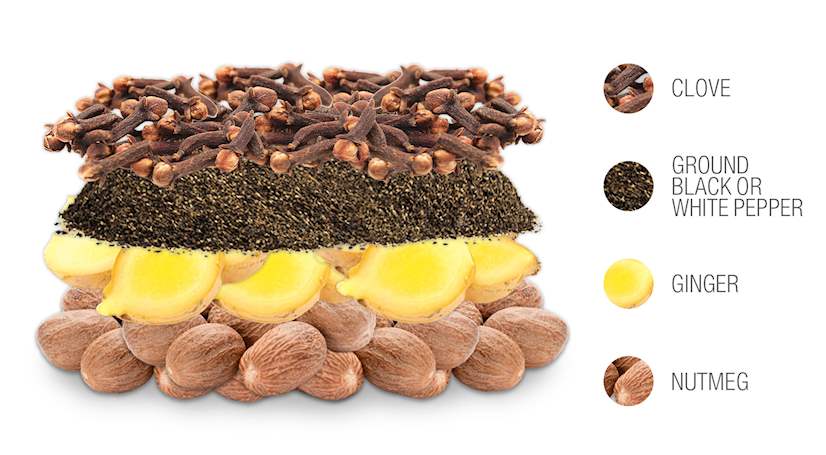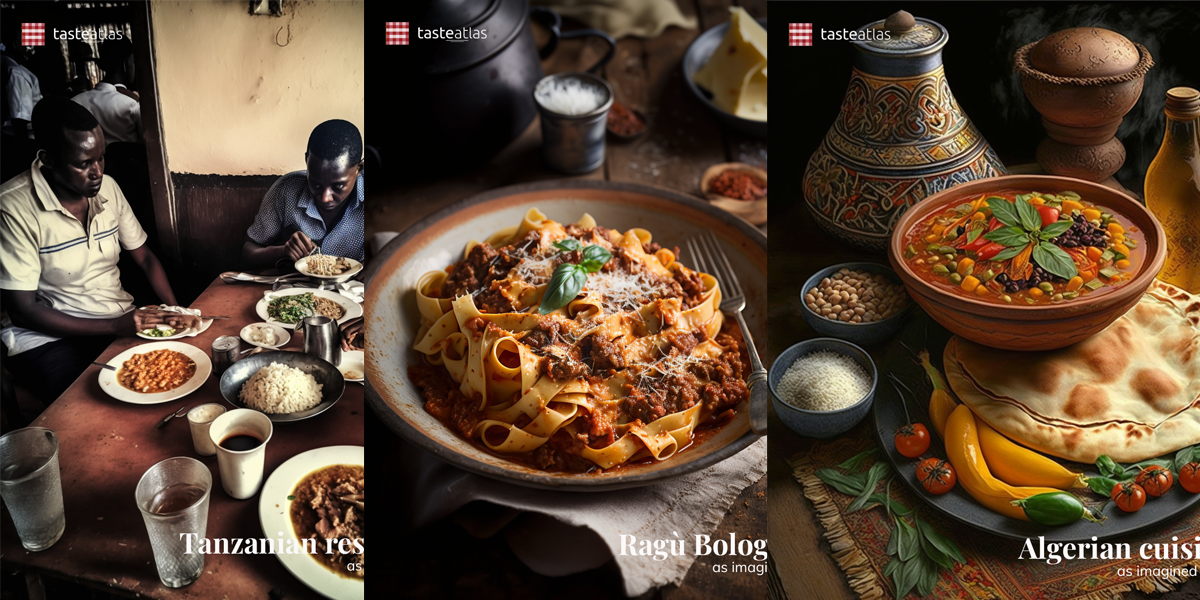you agree to our Conditions of Use and Privacy Policy
you agree to our Conditions of Use and Privacy Policy
Something went wrong. Please try again.
We don’t know your current location.

Best Local Restaurants
Pomeranian Voivodeship, Poland
Dish of the Day
Pasta carbonara
TOP 10
#3 best rated pastaThe carbonara we know today is prepared by simply tossing spaghetti with guanciale (cured pork jowl), egg yolks, and Pecorino Romano cheese. Despite its simplicity, this dish remains one of Rome's favorites, equally popular throughout the country. Even though carbonara is considered a typical Roman dish today, its origins are quite vague and often disputed. The name is said to have been derived from the carbonari, woodcutters and charcoal-makers who lived in the Appenine mountains northeast of Rome, and who supposedly cooked their pasta over a hardwood charcoal fire and tossed it with eggs and cheese. Another popular theory claims that carbonara was invented after the liberation of Rome in 1944, when food shortages were so severe that Allied troops distributed bacon and powdered eggs, which the local population would then mix with water to make pasta sauce.
New Food Cataloged
Borrachuelos
Spanish Fried Dough #8. Borrachuelo is a traditional Spanish dessert originating from Málaga. The word borracho in the name means drunk, referring to the fact that the biscuits are soaked in wine and anisette. Although the cookies have a few versions, depending on their filling, they’re usually made with a combination of flour, olive oil, orange peel strips, moscatel wine, anisette, orange juice, lemon juice, sesame seeds, and fennel. Once prepared, the smooth dough is rolled out and cut into disks, fried until golden, filled with pumpkin or sweet potato mixture, closed, dipped in honey, and dusted with icing sugar. Borrachuelos are especially popular during the carnival season and Christmas.
Hello!
Log in or Sign Up to track your experience
Countdown Slider
100 Best South American Dishes
Chajá
4.3
Rate It
Chajá is an Uruguayan cake consisting of layers of sponge cake, whipped cream, meringue, and peaches, while a layer of dulce de leche on top is often seen, but not mandatory. The cake was invented in the 1920s by Orlando Castellano at the Confitería Las Familias in Paysandú. He was inspired by a local bird, el chajá (crested screamer), and that's how this delicious cake was invented. Nowadays, it is a staple at Uruguayan feasts and celebrations.
Llapingacho
4.3
Rate It
Llapingachos are typical Ecuadorian potato patties that are often served with a spicy peanut sauce on the side. They consist of cheese and either cassava or mashed potatoes. The combination of those ingredients is flattened and cooked on a griddle until it develops a golden-brown color. Llapingachos are traditionally served as a side dish along with avocadoes, salads, fried eggs, pork, and chorizo.
Garrapiñada
4.3
Rate It
Garrapiñada is an Uruguayan and Argentinian street food item consisting of peanuts roasted in a combination of sugar, water, and vanilla essence. When the peanuts are completely coated and the syrup hardens, they are ready to eat. This treat can be found on the streets of Uruguay and Argentina, where it is sold by vendors called garrapiñeros. They put the peanuts in a small, long bag and hand it over to customers who then eat the peanuts on the go. Apart from peanuts, garrapiñada can also be made with almonds and walnuts.
Casquinhas de siri
4.3
Rate It
Casquinhas de siri is a traditional Brazilian dish consisting of creamy crab cakes served on a shell. It's made with a combination of crab meat, crustless bread, coconut milk, tomatoes, onions, yucca flour, bell peppers, green onions, cilantro, and parsley. The mixture is spooned into shells, then baked until golden brown. The casquinhas are sometimes served over shredded lettuce, and they're usually garnished with lime wedges and accompanied by hot pepper sauce on the side. The dish is served piping hot as an appetizer or a bar snack.
Tamalito
4.3
Rate It
Tamalito is the Peruvian version of tamales. They are smaller and drier than tamales, but both are prepared in a similar fashion. Green maize is first combined with lard, and the combination is then filled with ground beef and wrapped in corn leaves before being tied with a string and steamed in a pot. Tamalitos are traditionally served as a light appetizer or a tasty side dish. It is recommended to pair them with salsa criolla.
Pabellón criollo
4.3
Rate It
Pabellon criollo is a traditional Venezuelan dish consisting of black beans, white rice, and slices of steak cooked with tomatoes. The word pabellon means flag, referring to the colors of individual components, which are arranged to resemble the national flag. The dish is sometimes also served with fried plantains, known as tajadas, along with arepas and white cheese. The plantains keep the food from slipping over the plate, and in that case, the dish is known as pabellon con baranda, where baranda means guard rail. If the dish is served with a fried egg on top, it is known as pabellon a caballo. Pabellon criollo is especially popular with Venezuelan cowboys, known as llanos.
Chipa
4.3
Rate It
A simple bun called chipa is the most common food staple in Paraguay. The famous bread is made with cassava flour, lard, and anise. It originates from the Native American people Guarani, indigenous to the Amazon area of Brazil, Argentina, and Paraguay. The origin of chipa dates back to the time when wheat was not present in South America, and cassava was the most commonly used starch in the area. In colonial times, the Jesuit missionaries introduced milk, eggs, and cheese to the indigenous people, which finalized the chipa recipe. The use of cassava starch and lard results in the crunchy exterior of the bun, while the use of anise gives the bread buns an unusual and unique flavor. Although chipas are eaten all year round in Paraguay, they have a significant importance during the Holy Week, so they are often prepared and eaten during the Easter festivities. For the people of Paraguay, chipas represent their daily bread which is eaten together with numerous main meals or as a snack. Traditionally, the buns are prepared at home, but they are also sold by many street vendors, called chiperas, especially along Paraguayan roads.
Arrumadinho
4.3
Rate It
Arrumadinho is a complex Brazilian dish that is usually served as an appetizer. The dish is a combination of four elements that are neatly organized and served together as a complete meal. The essential parts are sliced, sun-dried beef, diced and mixed vegetable vinaigrette, beans, typically black eyed peas, and farofa – a toasted cassava flour mixture. All of the ingredients are seasoned with clarified butter, neatly arranged and served on a plate. The four elements of arrumadinho can either be mixed or consumed as individual dishes. A plate of arrumadinho is usually shared by a couple or a group of people, typically followed by a glass of cold beer or a freshly prepared caipirinha. The dish can usually be found in the northeast of Brazil, more precisely in the state of Pernambuco, where it is believed to have originated. It is often sold at food stands as a snack, but it is also commonly served as an appetizer in elegant restaurants.
Tigrillo
4.3
Rate It
Tigrillo is an Ecuadorian casserole-style dish made with a combination of mashed green plantains, cheese, and eggs. There are as many recipes as there are cooks, so some versions of tigrillo might include milk, ají hot sauce, or chicharrones (fried pork rinds). Queso fresco is one of the most popular choices for the cheese, and when served, tigrillo can also be served with a fried or poached egg on top. The dish is traditionally served for breakfast in Ecuador.
Cachorro quente
4.3
Rate It
Cachorro quente is the Brazilian version of a hot dog consisting of a bread roll filled with sausage links, ground beef in a chunky tomato sauce with green peppers and onions, and melted cheese. The dish is traditionally served with a wide variety of accompaniments such as mashed potatoes, corn, grated carrots, fries, peas, or pico de gallo, depending on the customers' preference. The toppings are virtually endless, and each region in Brazil has its own preference.
Pastafrola
4.3
Rate It
Even though their name and origin stem from Italian tradition, pastafrola tarts have become an integral part of South American cuisine. They traditionally combine buttery shortcrust pastry and various fillings such as quince cheese, dulce de leche, guava, sweet potato jam, and various fruit preserves. The top of each tart is traditionally decorated with a wide lattice pattern that reveals the colorful filling. Pastafrola tarts can be enjoyed as a simple, appetizing dessert or a sweet afternoon snack.
Tortas fritas
4.3
Rate It
Tortas fritas are fried biscuits from Argentina consisting of flour, butter, lard, milk, and baking powder. The dish is traditionally consumed with a cup of yerba mate, usually on rainy afternoons during autumn and winter. It is customarily served with fruit jams or dulce de leche on the side.
Encebollado
4.3
Rate It
Encebollado is the national dish of Ecuador, a fish soup that is characterized by a large amount of onions. Very useful in curing hangovers, the dish is made with fresh tuna meat, cassava root, tomatoes, onions, coriander, and various spices. Tomatoes, onions, chili, coriander, and cumin form a pungent mix and a base for the soup, called sofrito, while pickled onions go either on top of encebollado or into it, giving it its name that is literally translated to onioned. The soup originates from Ecuador's coast during the time when the fishers were out at sea and made the soup out of necessity. As they had some spices, and fresh fish was readily available, encebollado was created and became widely consumed throughout the country. Today, consumers can choose their own condiments including toasted corn, banana chips, lime, mustard, and avocado. This traditional dish – a source of pride for the locals – can be found on various street corners, in small restaurants, hotels, and homes of people from various social backgrounds.
Curau
4.3
Rate It
Curau is a Brazilian dessert made with the juice of an unripe maize, sugar, and milk. Once it has been cooked, it is poured into individual bowls and garnished with a sprinkle of powdered cinnamon. It can be eaten warm when it is more of a pudding-like consistency or cold when its texture will resemble a custard or a flan.
Medialunas
4.3
Rate It
These soft crescent rolls are regarded as the Argentinian take on traditional French croissants. Even though they are very similar to the French variety, medialunas are slightly more moist, smaller, and a bit sweeter. There are two traditional types of medialunas; the larger version made with butter, and the smaller version made with lard. Both varieties are usually prepared plain, with a rum-and-sugar glaze on top. They are traditionally eaten for breakfast, ideally accompanied by a cup of strong coffee with milk, or as an afternoon snack served with yerba mate, a traditional Argentinian herbal tea. Argentinians prefer to eat them with sweet condiments, jellies, dulce de leche, or chocolate spreads. Even though they are easily prepared at home, medialunas can also be bought in panaderias–traditional bakeries found throughout Argentina.
Pudim de leite condensado
4.3
Rate It
This traditional Brazilian dessert is a type of creamy, caramel-coated custard flan. Although there are as many variations on the dessert as there are families in Brazil (and throughout Latin America), the standard ingredients of pudim de leite condensado include sweetened condensed milk, regular whole milk, eggs, and sugar. To make the custard, the condensed milk mixture is typically poured into round molds or cake pans that have been coated with a simple caramel sauce, before it is baked in a water bath until it’s become firm and set. According to popular belief, this simple dessert is thought to have evolved from an old Portuguese dish known as pudim de priscos, an invention that has been attributed to a certain Portuguese priest named Manuel Joaquim Machado, also known as Father Priscos. Earlier versions of pudim de leite condensado used whole milk instead of condensed milk, which made the entire process of making the dessert much more complicated and time-consuming.
Feijoada (Brazil)
4.3
Rate It
Feijoada or feijoada completa is Brazil's national dish, a hearty stew featuring pork and black beans. The dish is consumed throughout the country, and every family in Brazil has their own, special recipe. Sautéed greens, cheese rolls, rice, and fresh, sliced oranges are served as an accompaniment to the smoked pork and richly flavored black beans. Traditionally, it is prepared for Saturday lunch, so that the consumers may sleep it off. The beans are flavored with onions, tomatoes, coriander, and garlic, while pork meat can be additionally enriched with dried beef and smoked pork sausages. Before the main meal, consumers are offered caldinho de feijao, a bean broth served in shot glasses or small ceramic cups and garnished with pork rinds known as torresmos. The name feijoada is derived from the Portuguese word for beans, feijão, and it probably originated in the 1600s in Recife, on sugar plantations built by the Portuguese colonists, although some believe that it was created in Rio de Janeiro.
Chimichurri
4.3
Rate It
What harissa is to Moroccan cuisine and what mustard is to hot dogs in the USA, chimichurri is to steaks in Argentina. It is an aromatic mixture of parsley, garlic, oregano, olive oil, vinegar, and hot red pepper flakes, although additional ingredients such as coriander or chopped tomatoes are sometimes also included in the combination, while others may be omitted as there are numerous variations on chimichurri. This vibrant green sauce (sometimes used as a marinade) is typically served alongside grilled beef steaks, but it also does wonders for grilled pork, chicken, lamb, fish, or duck, and it is quite common to pair it with Malbec wine. There are two theories about the origin of the name–one says that it was invented (and aptly named) by a British meat dealer called Jimmy Curry, and the other one says that it stems from the phrase "che mi curry", spoken by captive English soldiers who requested to eat curry after their unsuccessful attempt to invade Argentina, a Spanish colony at the time.
Cubanitos
4.4
Rate It
Cubanitos (lit. little Cubans) is an Argentine sweet and crispy wafer tube oozing a sweet filling. Wafer pastry is made by combining flour, sugar, butter, vanilla extract, cinnamon, and (sometimes) egg whites. Once baked, the wafer is rolled into the shape of a Cuban cigar, hence the name cubanitos. Although the most common filling is dulce de leche (a milky caramel spread), this treat may come with various other fillings such as chocolate, lemon-flavored cream, pasta bon o bon (peanut cream), or whipped cream. The filled wafer tubes are also often covered with chocolate and garnished with chopped nuts or sprinkles. A common street food fare, cubanitos can be enjoyed on their own, usually as a late-afternoon sweet snack, or served as accompaniments to helado de dulce de leche (milky caramel ice cream) or vanilla ice cream. In Argentina, these filled wafer tubes are typically prepared for special occasions, and they are commonly sold at fairs such as the Feria de Mataderos.
Inchicapi
4.4
Rate It
Inchicapi is a creamy Peruvian soup made with chicken or hen meat, ground corn, peanuts, oil, cassava, and garlic as key ingredients. It originates from the Peruvian jungle regions of San Martin, Loreto, and Ucayali. Before serving, this traditional soup is usually garnished with chopped coriander.
Salsa de rocoto
4.4
Rate It
Salsa de rocoto is a hot Peruvian sauce or dip that's a staple at most tables in the country. It is prepared with fiery red rocoto peppers, oil, and lime juice, with the occasional addition of parsley, cilantro, or milk. Due to the fact that this salsa is so popular in the country, there are numerous variations, ranging from medium hot to insanely hot, so be careful when trying it for the first time. Use the salsa with a variety of fish and meat dishes, potatoes, or try it in sandwiches.
Bistec a lo pobre
4.4
Rate It
Lomo a la pobre or bistec a lo pobre is a large meal that is popular in Chile and Peru. In its basic form, the meal consists of steak, fried onions, fried potatoes, and fried eggs. A large beef steak (usually rubbed with garlic) is fried, then topped with fried eggs with runny yolks, while onions and potatoes are served on the side. It is recommended to additionally enrich the meal with rice and salad. The name of this meal translates to poor man's steak, despite the fact that this dish is hearty and very nutritious. In Chile and Peru, it is almost always served for lunch.
Tequeños
4.4
Rate It
Tequeños are a traditional Venezuelan snack consisting of fried wonton wrappers or empanada dough filled with cheese. It is believed that this snack originated from the city of Los Teques. Tequeños are usually served with various sauces and dips such as guacamole or salsa de palta. Although the snack got its start in Venezuela, it soon spread throughout Latin America. In Peru, tequeños are popular as an appetizer or an afternoon snack, and Peruvians sometimes add ham, lomo saltado, or aji de gallina to the cheese filling.
Aji Criollo
4.4
Rate It
Aji Criollo or salsa de aji is a spicy Peruvian salsa prepared with a combination of yellow aji chili peppers and oil. The sauce is usually pleasantly spicy, but it can also be extremely hot and spicy, so one should be careful when tasting it for the first time. The sauce is traditionally used as an accompaniment to various meat and fish dishes, but it's also often used as a dip for french fries and tequeños.
Moqueca capixaba
4.4
Rate It
Moqueca capixaba is a traditional Brazilian stew originating from the region of Espírito Santo. It is prepared with fish, lime juice, coriander, and vegetables such as onions, tomatoes, and garlic, all nicely colored with annatto. Traditionally, the stew is cooked in a clay pot called panela de barro – the seafood should only be layered with other ingredients and the heat is turned up for the stew to simmer on its own. In some cases, chili peppers are added for a bit of heat. When served, moqueca capixaba is typically accompanied by white rice or a creamy manioc porridge called pirão.
Romeu e Julieta
4.4
Rate It
It is not known why this unusual Brazilian dessert was named after the famous Shakespeare play, but the sweet and savory combination of Romeu e Julieta is beloved throughout Brazil, where it is served either as a snack or as a dessert. It is quick and easy to prepare Romeu e Julieta, consisting of a thick slice of fresh white cheese (usually queijo minas or canastra), and an equally thick slice of goiabada (fresh pulped guava, water, and sugar). The saltiness of the cheese pairs quite well with the gritty texture and sweetness of goiabada, and most Brazilians combine the two on a fork and consume it in a single bite. Since goiabada and cheese keep well and are a staple of most Brazilian homes, all it takes is to slice both ingredients and serve them on a plate, providing a great finish to the meal without being too heavy on the stomach. The combination is also available in a variety of other dishes, such as Romeu e Julieta on toast, in cheesecakes, and even on pizzas.
Bolo de rolo
4.4
Rate It
Bolo de rolo is a traditional Brazilian dessert with origins in the state of Pernambuco. This rolled guava cake is similar to a jelly roll cake or a Swiss roll; however, its preparation is much more complicated. It incorporates many delicate and thin sponge layers which are connected to form a giant sheet, spread with a layer of sweet guava jam, then rolled into a log. The most elaborate varieties of bolo de rolo can have up to twenty layers of sponge, which results in an unusual decorative spiral. Because of the intricate and time-consuming preparation, it is rarely made at home and can usually be found in pastry shops and supermarkets around Brazil. It is usually served sliced, to showcase the number of meticulously created jelly spirals. To balance the sweetness, slices of bolo de rolo are often served with a dollop of unsweetened whipped cream.
Bandeja paisa
4.4
Rate It
Bandeja paisa, also known as bandeja de arriero, bandeja montanera and bandeja antioquena, is Colombia's national dish since 2005, a heavy, caloric meal traditionally served on a big, oval platter and intended to be eaten for lunch. Originally, the platter provided nutrition and energy to the farmers to keep them going for the whole day and there are a total of 13 ingredients used in the dish, including golden-fried chorizo sausages with lime, hogau sauce, cooked white rice, ground beef, plantain, arepa (a thin, fried corn cake), avocado, stewed red beans, fried pork belly, and a fried egg on top of it all. This behemoth of a dish is traditionally accompanied by a mazamorra – a milk-based drink that is served chilled and features smashed maize. Bandeja paisa is actually one of the highest protein-packed dishes on Earth and is especially popular in the Paisa region departments of Antioquia and a part of Valle del Cauca in Colombia. In 2005, when it became the national dish, it was suggested that the name gets changed to bandeja montanera in order to avoid the exclusion of people that are outside the Paisa region, which led to a huge public outcry.
Bobó de camarão
4.4
Rate It
A classic dish of the Brazilian Bahia region, bobó de camarão is a stew made with puréed cassava (bobó), fresh shrimps, coconut milk, and dendê palm oil. The word bobó comes from the Ewe people who were brought to Brazil as slaves, denoting a dish made with beans, although there are no beans in bobó de camarão as we know it today, due to the fact that the Afro-Brazilians enthusiastically took to cassava when they were first introduced to it. The dish is traditionally accompanied by rice on the side, and is a staple of most traditional Brazilian eateries and Bahian self-service restaurants.
Picarones
4.4
Rate It
Picarones are a staple of Peruvian street food, the tasty, deep-fried treats that are also often referred to as the Peruvian doughnuts. The dough is shaped into a ring and fried in hot oil, and picarones are then drizzled with a sweet cane syrup. It is believed that they were first prepared during the Spanish Viceroyalty in Lima and they were probably based on the Spanish buñuelos. The recipe was adapted by the locals who added sweet potatoes and squash to the dough, and a new dish was created. Picarones were later popularized by the nuns of Saint Claire's convent, and today they are especially popular during the religious festivities in October.
Arroz chaufa
4.4
Rate It
Arroz chaufa is a popular Peruvian dish with a great influence of Chinese cuisine. It consists of a combination of fried rice, meats, vegetables, and fruits. Most commonly, rice is fried with shredded chicken, salami, garlic, ginger, slivered almonds, eggs, chicken stock, soy sauce, pineapple chunks, and pineapple juice, although there are numerous variations on the dish using ingredients such as fish, beef, pork, jerky, and even alligator meat. Once prepared, the dish is typically garnished with chopped scallions and coriander.
Arroz con camarones
4.4
Rate It
Arroz con camarones is a dish that is popular throughout Latin America, especially in Peru and Mexico. It consists of rice that is cooked in a flavorful shrimp broth, combined with shrimp, peppers, tomatoes, and onions. The dish is usually seasoned with cumin, garlic, and achiote, with the addition of finely chopped parsley used for garnishing. Arroz con camarones can be served with numerous accompaniments such as lime wedges, hot sauce, avocado slices, or fried plantains.
Aji de gallina
4.4
Rate It
Often consumed on rainy or cold days by many Peruvians, aji de gallina is a spicy dish consisting of shredded chicken in a creamy sauce. It is traditionally served over rice and garnished with black olives and boiled potatoes. The sauce is made with aji amarillo chilis, garlic, onions, walnuts, cheese, and crustless bread, and it is usually flavored with spices such as cumin, pepper, oregano, turmeric, and parsley. It is believed that aji de gallina originated from a dish called manjar blanco, made with a combination of chicken, almonds, sugar, and rice. After its arrival in Peru, the people adapted it using local ingredients such as the aji chili, and a new dish was created in the process.
Feijão tropeiro
4.4
Rate It
Feijão tropeiro is a traditional dish from the Brazilian state of Minas Gerais. A favorite dish of cattle rangers (tropeiros), it consists of beans that are cooked with salted or dried meat, manioc flour, and various flavorings, herbs, and vegetables. Today, there are numerous variations on the dish, so the type of beans and meat vary from one part of the country to the next. It is believed that the dish was invented during the Brazilian Colonial period, when tropeiros used to sell things while traveling on horses, bringing beans, manioc flour, and dried meat with them on long journeys.
Baião-de-dois
4.4
Rate It
Baião is a traditional folk dance of the Brazilian Ceará region, which was popularized by two musicians, Humberto Teixeira and Luís Gonzaga, in a song called Baião-de-dois (baião for two). The name of the song attached itself to the dish of the same name, consisting of freshly picked black-eyed peas and rice cooked together, reminiscent of a couple dancing the baião. The dish has numerous varieties throughout the region, so some cooks add dried beef (carne de sol), while the others add pork or cheese to the combination. Garnishes may include freshly chopped coriander and chives. The history of the dish dates back to the time of great difficulties, when food was scarce and nothing could go to waste, so, like many other dishes, this one was also created out of necessity, combining rice, beans, and kitchen leftovers.
Carne de sol
4.4
Rate It
A staple of Northeastern Brazil, carne de sol (lit. meat of the sun) - sometimes also called carne de sereno or simply jabá - refers to heavily salted, sun-dried meat. Carne de sol is traditionally prepared with either beef or goat meat, and the origins of this centuries-old meat preservation method are attributed to the so-called sertanejos, cattle ranchers living in the vast, semi-arid Brazilian hinterlands. Today, carne de sol is a delicacy found all across the country and, if not grilled or cubed and used in various stews, it is typically served with coalho cheese and accompanied by a thick manioc gruel called pirão or boiled cassava.
Lomo saltado
4.4
Rate It
Lomo saltado is a traditional Peruvian dish consisting of stir-fried marinated slices of sirloin or beef tenderloin, onions, yellow Peruvian chilis, and tomatoes. The dish is typically served with French fries and rice on the side, and can be found on the menus of almost all Peruvian restaurants, whether simple or upscale. The dish has had a big Asian influence due to the influx of Chinese immigrants during the 19th century. Over the years, some Chinese cooking techniques were combined with the Peruvian, and new dishes were invented, such as lomo saltado. Today, there are many variations on the dish, so beef can be replaced by chicken, when it is called pollo saltado. If the potatoes are replaced with noodles and vegetables, it is then called tallarin saltado. With its fusion of old and new worlds, lomo saltado still holds its status as one of Peru's most loved dishes.
Chivito
4.4
Rate It
Chivito is a delicious sandwich from Uruguay and the country's national dish. Meaning little goat in Spanish, a legend says that in the 1940s, a chef in a restaurant was asked to prepare roasted goat, but since he didn't have one - he made a sandwich with bits of just about everything he had in the kitchen, and chivito was born. The sandwich is filled with meat - slices of churrasco (grilled/roasted and thinly sliced beef), ham, bacon, tomatoes, lettuce, melted mozzarella, and a topping of fried (or sometimes boiled) eggs. The sandwich buns should be quite large, such as ciabatta rolls. Optionally, it can be topped with olives, pickles, and cooked onions, while salsa golf - a popular mix of ketchup and mayonnaise, acts as a perfect condiment. It is a quite tall sandwich, due to all of the ingredients stuffed inside it. Praised by many world chefs because of the high-quality, grass-fed beef ingredients on the inside, chivito is finally getting the recognition it deserves.
Arepa
4.4
Rate It
Arepa is a highly versatile cornbread made from ground corn dough or precooked corn flour. It is commonly consumed in Venezuela, Colombia, Panama, Puerto Rico, and the Dominican Republic. In Venezuela, arepa is eaten at any time of the day, throughout the whole country, and across all socio-economic groups. The golden disks with a crispy, browned crust are commonly stuffed with a variety of ingredients, and the combinations are seemingly infinite, from beans, cheese, and avocado to shredded beef and onions. For a Venezuelan breakfast, arepas are traditionally paired with a cup of strong coffee and hot dipping chocolate. Since they are not filled with anything for breakfast, they are commonly referred to as the viuda (widow). The name arepa comes from the word erepa, which is the indigenous word for this corn bread, as its origins are believed to be from the indigenous tribes across Venezuela, such as Timoto-Cuicas, Arawak, Carib, and Karina. Today, arepas are usually served at traditional eateries called areperas.
Empanada Cordobesa
4.5
Rate It
This empanada variety originates from Córdoba in Argentina, hence the name. It is sweet and savory because it's filled with beef, raisins, potatoes, olives, and white sugar. Other ingredients include hard-boiled eggs, onions, garlic, red wine, paprika, and cumin. These empandas are also juicier than most other varieties because they include tomatoes in the mix. The filling is enclosed in dough consisting of flour, egg yolks, lard or pork fat, water, and salt, just like most empanadas. Empanadas cordobesas are fried in hot oil or baked in the oven until browned.
Pastelitos Criollos
4.5
Rate It
These crispy Argentinian pastries are typically star-shaped, while the center is filled with quince or sweet potato preserve (dulce). They are usually deep-fried and then brushed with a sugar glaze. Optionally, they can be filled with dulce de leche and topped with colorful sprinkles. Pastelitos are traditionally enjoyed on May 25, a day commemorating the May Revolution and the establishment of the first independent Argentinian government.
Choritos a la Chalaca
4.5
Rate It
Choritos a la chalaca is a Peruvian dish originating from the port of Callao. The word choritos refers to mussels, while a la chalaca means Callao-style. The dish is made by steaming the mussels, then topping them with a spicy salsa featuring tomatoes, corn, rocoto peppers, onions, lime juice, olive oil, and parsley. Choritos a la chalaca is traditionally served as an appetizer with a glass of cold beer on the side.
Sopa Criolla
4.5
Rate It
Sopa Criolla is a comforting and filling Peruvian soup. It's made with a combination of beef, onions, garlic, aji panca paste, tomato paste, stock, potatoes, angel hair pasta, evaporated milk, oregano, and eggs. Once it has been cooked, the soup is typically garnished with homemade croutons. It is believed that sopa Criolla was brought to the country by Italian immigrants. For the best experience, serve it on a chilly winter day.
Arepa andina
4.5
Rate It
Arepa Andina is a variety of Venezuelan arepas, distinguished from the regular arepas by the usage of wheat flour rather than the standard corn flour. This variety of arepa is popular in the Andes region, near the Colombian border, especially in the state of Mérida, where wheat has been cultivated since ancient times. Arepa Andina can be consumed plain, or filled with cheese and vegetables such as tomatoes. It is recommended to pair a plain arepa Andina with a hot cup of coffee.
Cuchuflí
4.5
Rate It
Cuchuflí are popular Chilean sweet snacks that look like thin, crispy tubes with a texture similar to that of wafers. They consist of sugar, flour, butter, egg whites, and vanilla flavoring. These sweet treats are often filled with dulce de leche, but they can also be covered in chocolate. Nowadays, cuchuflí can be found almost anywhere in Chile – from bakeries, grocery stores, and supermarkets to street vendors and beach food stands.
Choclo con queso
4.5
Rate It
Choclo con queso is a Peruvian meal that is often consumed as a snack, an appetizer, or a side dish. Peruvian choclo is a type of corn with large kernels, nutty flavor, and chewy texture. When paired with creamy and salty cheese and a dab of butter on top, it results in choclo con queso (lit. corn with cheese). Although it can be found in restaurants, this delicious snack is most commonly bought from street vendors. In some modern interpretations, the dish can also be made into a baked casserole with added onions, cumin, flour, and milk.
Sánguche de milanesa
4.5
Rate It
Sánguche de milanesa is a popular sandwich hailing from Argentina, although it's also popular in Uruguay. The sandwich typically consists of a split baguette or long bread roll that's filled with milanesa, mayonnaise, tomatoes, onions, and shredded lettuce. Additional ingredients might include mustard, chimichurri, ham, or cheese. This sandwich is especially popular in the province of Tucumán, where it's sold in mostly family-owned sangucherías. In some eateries, sánguche de milanesa is accompanied by mashed potatoes or fries on the side.
Chancho en piedra
4.5
Rate It
Chancho en piedra is a Chilean salsa that is essentially a variation of pebre salsa with added tomatoes. Apart from the tomatoes, it contains garlic, chili peppers, onions, olive oil, salt, pepper, and parsley or coriander. Once prepared, the consistency of chancho en piedra should be more sauce-like than the consistency of pebre. It is recommended to serve it with bread, sopapillas, or empanadas. The name chancho en piedra means pig on a stone or pig on a rock, referring to the preparation of this salsa in a stone mortar and pestle.
Tutu de feijão
4.5
Rate It
Tutu de feijão is a traditional Brazilian dish originating from the region of Minas Gerais. The dish is made with a combination of puréed beans (traditionally black beans) and cassava flour that's used as a thickening agent. Other ingredients used in the dish include bacon, onions, garlic, olive oil, parsley, and bay leaves. Although there are many variations on the dish, it's usually served accompanied by pork sausages, rice, eggs, or sometimes kale.
Maniçoba
4.5
Rate It
A specialty dish from the Brazilian regions of Pará and Bahia, maniçoba is a part of the feijoada family of Brazilian dishes. In addition to dried meat, salted pork, bacon, and sausages, chopped cassava leaves are used instead of beans which are commonly used in a traditional feijoada. One must be extra careful when preparing the dish due to the toxic cyanides found in cassava leaves, which is why they need to be ground and boiled for at least one week in order to remove the toxins. Since it is a lengthy process, maniçoba is mostly prepared for festivities and religious celebrations, when it's consumed by large groups of people. In Bahia, peppers and farofa are often added to the dish, while in Pará, the usual accompaniment is white rice.
Empanadas Tucumanas
4.5
Rate It
These empanadas are a specialty of the region of Tucumán, and they are quite different than numerous empanadas found in Buenos Aires. Tucumanas are typically handmade according to old, traditional recipes, and are characterized by a crispy dough and ideal proportions of dough and fillings. The dough is made with wheat flour and beef fat, and it is then usually filled with beef, chicken, or tripe, along with other ingredients such as raisins, onions, hard-boiled eggs, paprika, and cumin. Authentic Tucumanas should be baked in a clay oven, and it is best to enjoy them with a glass of local wine on the side.
Causa rellena
4.5
Rate It
This traditional Peruvian delicacy is made with yellow potatoes and either tuna salad or chicken. Most often, the potatoes are molded or cut into circles, and the filling is sandwiched in between. The dish is flavored with mayonnaise, ají amarillo chilis, and lime or lemon juice. Causa rellena is typically served cold on a bed of lettuce, while the top is garnished with black olives, making it a perfect appetizer or a light meal on its own. It is believed that the dish was invented during the Pacific War. Food was scarce, and the Peruvian women started collecting potatoes and any other ingredients they could get their hands on. The women created causa rellena, then offered it to soldiers for the cause of defending their homes, hence the name of the dish.
Chupe de camarones
4.5
Rate It
Chupe de camarones is a popular Peruvian shrimp (or prawn) chowder with a long and unusual history. The chowder is typically made with fish stock, fresh shrimps, onions, eggs, milk, cheese, garlic, and yellow potatoes, while rice, beans, carrots, and peas are used often, but not always. The dish is traditionally served in deep bowls and garnished with parsley. In recent years, food historians have revealed that chupe de camarones actually evolved from a thick Arequipeño stew made with potatoes, llama meat, and herbs. The dish was called chuwa misa (lit. deep bowl) and was prepared before the 16th century. After the Spanish conquest, locals started to catch shrimps, preparing shrimp ceviche and shrimp sauteé in the process. The Spaniards brought some new ingredients to the region, such as milk and cheese, and added them to the shrimp sautée, resulting in the creation of chupe de camarones.
Milanesa napolitana
4.5
Rate It
Milanesa napolitana is a traditional Argentine dish originating from Buenos Aires. It consists of a milanesa steak that's breaded, fried, then topped with a slice of ham, tangy tomato sauce, and thick slices of mozzarella, which will melt under the broiler. It is typically served with french fries on the side. If there are any leftovers, they can be used to make delicious sandwiches called sánguche de milanesa. Milanesa napolitana was supposedly invented in the 1930s or 1940s in a restaurant called Nápoli, hence the name.
Pan de yuca
4.5
Rate It
Pan de yuca is a traditional bread consisting of yuca flour, eggs, and cheese. It is usually shaped into small, round balls. The bread is popular throughout Colombia and Ecuador, although there are variations on pan de yuca throughout Latin America. It makes for a delicious warm appetizer or an afternoon snack, preferably paired with a cup of hot chocolate, tea, or coffee.
Chocotorta
4.5
Rate It
Translated as chocolate cake, this no-bake Argentinian dessert was influenced by Italian cuisine and modeled on the famous Italian tiramisu. It is made with three Argentinian staple ingredients: chocolate biscuits, dulce de leche, and cream cheese. The cookies are softened in milk and layered with a combination of cream cheese and dulce de leche. The shapes of chocotorta can vary, while the biscuits can be soaked with chocolate milk, coffee, or even coffee liqueur. The most common theory about its origin says that it was invented as a part of a marketing campaign designed to promote Chocolinas chocolate cookies, and the recipe was included in the packaging. Chocotorta is rarely found in restaurants and remains a novel dessert outside of Argentina.
Salsa ocopa
4.5
Rate It
Salsa ocopa is a popular Peruvian sauce originating from Arequipa. It is made with queso fresco, aji amarillo chilis, milk, and huacatay, also known as Peruvian black mint, giving the sauce a unique flavor. The salsa is traditionally served with boiled potatoes, but it can also accompany pasta dishes, meat, fried yucca, hard-boiled eggs, or tequeños.
Rocoto relleno
4.5
Rate It
Rocoto relleno is the most famous appetizer from the Peruvian region of Arequipe, consisting of a spicy, oven-baked rocoto chili pepper stuffed with ground beef, pork, onions, and pieces of hard-boiled eggs. The stuffing is traditionally seasoned with cumin, chili paste, salt, and ground pepper. Rocoto is often served with a slice of mozzarella cheese melted on top of the stuffing. This flavorful appetizer is often accompanied by baked potatoes or various salads on the side.
Tiradito
4.5
Rate It
Tiradito is a traditional Peruvian dish consisting of thinly sliced, well-chilled raw fish, chopped vegetables, and coriander, all drizzled with lemon and lime juices right before consumption, so the fish stays raw, unlike ceviche, where the fish is already cooked in citrus juices. The dish is most often served as an appetizer, and some cooks like to add their own touch – topping it with sliced onions, pickled jalapeños, boiled corn, and even crushed potato chips. It is believed that it takes a lot of skill and effort to make a perfect tiradito, but the most essential components while preparing it are a sharp knife and the freshest possible fish, which is the highlight of every tiradito.
Marraqueta
4.5
Rate It
Marraqueta (also known as pan batido and pan francés) is the most popular bread in Chile, a staple food that is often consumed three times a day. It is made with flour, water, salt, and yeast. Two balls of dough are typically pressed together, then nearly split down the middle before the bread is baked in the oven, usually with a pan of water which gives marraqueta its characteristical crust. The crust is so beloved in Chile that some people even pull out the crumb (called miga) before consumption. It is believed that marraqueta dates back to the late 19th and early 20th century, when a large number of Europeans immigrated to Chile. Some claim that the bread was first baked by two French brothers called Marraquette, and that's how this daily staple got its name.
Anticucho
4.5
Rate It
Anticucho is a meat dish consisting of small pieces of skewered and grilled meat, the most popular of them made with beef heart, called anticuchos de corazón. Peruvian in origin, the dish quickly gained popularity throughout South and Central America. The first recipe dates back to the 16th century, referring to a meal of marinated llama meat cooked directly over a fire. When the conquistadors encountered the dish, they modified it to make it their own, replacing the llama meat with beef, which was skewered on sugar cane stalks. Today, the meat is typically marinated in red wine vinegar and spices such as garlic, cumin, and aji pepper - developing a fruity flavor when roasted. Anticucho can be found throughout Peru on numerous street carts and street food stalls, called anticucheras. Typical accompaniments to the dish include corn or boiled potatoes.
Jalea
4.5
Rate It
Peruvian jalea is a seafood dish of lightly breaded and deep-fried fish - most often tuna, halibut, cod, or striped bass - and other mixed seafood like octopus, squid, shrimps, and scallops. It is traditionally served with thinly sliced and fried plantains called chifles, and topped with a refreshingly tart salad of lime-marinated red onions, tomatoes, and cilantro. With an abundance of fresh local seafood during Lent weeks which coincide with the end of the summer in South America, jalea has become one of the Peruvian favorites of the fasting season, widely available in numerous cevicherias, restaurants specialized in ceviche and other seafood dishes. Jalea Peruana is typically enjoyed with salsa criolla, ají amarillo and rocoto sauces, and sided with some yucca chips or - for an extra crunch - sprinkled with toasted Andean chulpe corn nuts called canchas. The tasty palette of condiments also includes either mayonnaise or tartar sauce, and lime wedges.
Mousse de maracujá
4.5
Rate It
It is said that if Brazil had to declare a national dessert, it would most likely be mousse de maracujá, or passion fruit mousse. The dessert consists of fresh passion fruit, sweetened milk, and creme de leite, a product similar to evaporated milk. Since it is quick and easy to prepare mousse de maracujá, it is a staple of numerous Brazilian bakeries, restaurants, and dinner parties. It is recommended to serve the mousse in parfait glasses and top it with whipped cream as the best way to enjoy its decadent, tropical flavors.
Moqueca
4.5
Rate It
Moqueca is a seafood stew with a base of palm oil and coconut milk or olive oil, combined with fish or shrimps (or both). The dish is stewed in traditional clay pots along with vegetables and fresh herbs, and it is traditionally served over rice. It can be traced back to 300 years ago, when it was first invented due to the fact that the Portuguese brought coconuts to the country, and slaves from Africa introduced palm oil to Brazilian cuisine. There are numerous versions of moqueca, such as moqueca Capixaba, or moqueca Baiana, from the Bahia state in the northeast of the country. The dish is traditionally garnished with fresh chopped cilantro on top, while crusty bread provides the best accompaniment.
Brigadeiro
4.5
Rate It
Brigadeiro is a decadent Brazilian dessert made by heating three key ingredients together - unsalted butter, cocoa powder, and condensed milk, which are then rolled into a small ball, similar in shape to a truffle. First made in the 1940s, when fruit and sweets were in short supply, brigadeiro was born out of creativity with just a few ingredients. According to one legend, Brigadeir Eduardo Gomes was running for presidency in 1945 with a slogan that said "Vote for Brigadeir, he's handsome and single". The slogan won over a lot of girls who baked and sold the sweets in order to raise funds for Brigadeir's campaign. Whether the story is true or not, today it is impossible to find a birthday party in Brazil without these chocolate sweets. Brigadeiros are very sweet, with a rich chocolate flavor, and are usually topped with chocolate sprinkles. Today, they are marketed as a gourmet delicacy, made in many different flavors such as almond, mint, hazelnut, coffee, and coconut. A source of national pride, it is said that if you make brigadeiro for someone who is feeling bad, there are good chances that it will make them smile.
Choripán
4.5
Rate It
Choripán is the ultimate in Argentine street food, a sandwich consisting of a chorizo sausage and a variety of condiments in a crusty bun. It is usually consumed on the go, since it is mostly sold at street stands throughout Latin America. The name choripán is derived from two words: chorizo, referring to the sausage, and pan, meaning bread.
Pollo a la brasa
4.5
Rate It
Pollo a la brasa is a popular Peruvian dish consisting of crunchy and juicy charcoal-grilled chicken that is traditionally served with French fries and salads. Today, it is one of the most consumed meals in Peru, so much that 27 million Peruvians eat it daily. The dish was first invented in Lima in the 1950s, when it was seasoned only with salt, but nowadays the chicken is often marinated in a special combination of ingredients, usually consisting of vinegar, salt, pepper, rosemary, chili, and dark beer.
Milanesa
4.5
Rate It
Often referred to as Argentina's unofficial national dish, milanesa is a humble, yet delicious meal consisting of a breaded slice of prime beef that is fried in hot oil, curling up as it cooks, due to the fact that the chosen cuts of meat have less fat and sinew than other cuts. The dish shares many similarities with the Austrian Wiener schnitzel and the American chicken fried steak. However, milanesa has its roots in Italy, and the original dish has been traced to the city of Milan and the famous cotoletta alla milanese. Some claim that the best milanesa in Buenos Aires will always be prepared at home, cooked by someone's mother, although many restaurants also have it on their menus. For the pure, basic experience, it is enough to squeeze some lemon juice over it, but it is often served with a side of creamy mashed potatoes or french fries, while one of the most popular varieties is called a caballo (on horseback), where a fried egg is placed on top of the meat.
Dulce de leche
4.5
Rate It
Dulce de leche is a type of condensed milk sweet from Argentina. Traditionally, it is made by heating sweetened cow's milk until it caramelizes and achieves a thick consistency, enough to act as a spread, a filling for cakes and pies, or an ice cream topping. It is said that dulce de leche originated in Buenos Aires, when a serving woman was preparing la lechada by heating sugar and milk. As she left it on the fire a bit longer than usual, she noticed it had become a dark brown substance, and that's how dulce de leche was born. Today, dulce de leche is sometimes flavored with vanilla, lemon, or cinnamon, and is used to flavor candies, cakes, cookies, waffles, and ice creams. This sweet treat is loved not only in Argentina, but throughout the world, so many variations on the original recipe exist in France, Norway, Russia, and throughout Latin America.
Alfajores
4.5
Rate It
Argentinian alfajores are sandwich cookies consisting of two round, crumbly sweet cookies with a dulce de leche or milk jam stuffing between them. The combination is then coated with a layer of chocolate or sprinkled with confectioners' sugar. The name alfajor stems from the Arabic word al-hasú, which means stuffed or filled. Although the cookies can be found throughout Latin America, they are originally from Andalusia, Spain. When the Spaniards came to America, they brought their foods and traditions along the way, and with time, almost every country in Latin America has adapted the Spanish alfajor to make it their own. In Argentina, you can find alfajores with different flavors of dulce de leche, like chocolate, vanilla or various fruits. They are also packaged in different shapes and sizes, and are usually enjoyed with tea or coffee.
Ceviche
4.5
Rate It
Ceviche is the national dish of Peru consisting of slices of raw fish or shellfish that is spiced with salt, onions, and chili peppers, then marinated in lime juice. Due to the acidity of lime juice, the texture of the fish changes, as does its color – from pink to white. The acidic marinade, also known as leche de tigre (lit. tiger's milk) "cooks" the meat without any heat involved in the process. For ceviche, fresh fish is an imperative, as fish and shellfish that are not fresh can cause food poisoning. Peruvians are used to fresh ingredients, so the fish will sometimes be prepared for ceviche less than an hour after being caught. Fish for ceviche can be divided into three categories: firm, medium, and soft. The dish was originally made by the natives who marinated fish and amarillo chiles in the juices of a native fruit called tumbo, which was replaced by lime juice when the Spanish brought limes and onions to the country. The flavors of ceviche are slightly acidic and spicy, with an intense aroma of the sea.
Pastel mandi'o
4.6
Rate It
Pastel mandi’o is a doughy snack made with cornflour, boiled cassava, fat, and eggs. It is stuffed with a mixture of minced meat, boiled eggs, and seasonings. These snacks are fried in oil or fat and served hot. The dough is sweet, and the filling is replete with flavors, giving the dish a distinctive taste. Mandi’o means cassava in the Guarani language, and it is this ingredient which gives a unique Guarani twist to the dish. These snacks resemble empanadas, mainly differing from the latter in the use of cornflour and cassava, which are typical for Paraguay. They encompass the authentic taste of Paraguayan cuisine and are a popular street food served in local bars, particularly during the festival of San Juan. Common accompaniments to pastel mandi’o include hot sauces and refreshing salads.
Chipa guasu
4.6
Rate It
Chipa guasu is a variety of chipa, a cake based on corn grains with the addition of onions, water, eggs, cinnamon, milk, and cheese. Its name stems from two words - chipa, referring to a variety of corn-based cakes, and guasu, which means big in Guarani, so one can say that chipa guasu is the largest of all chipas. It is a favorite side dish in Paraguay during the corn harvest, when cooks brown them in hornos, traditional mud adobe-built outdoor ovens. The dish was invented during the Paraguayan War in the mid-1850s, when food was scarce, and people needed food that was affordable, simple, and highly caloric, providing nourishment during the day. One can often find chipa guasu at asados, which is the Paraguayan version of classic American barbecues. Although it is hard to rival homemade chipa guasu, it can be found in many restaurants in Asunción, the capital of Paraguay.
Moqueca Baiana
4.6
Rate It
Moqueca Baiana is a seafood stew originating from the Brazilian state of Bahia, hence the word Baiana in its name. It consists of white fish, shrimps, or other seafood combined with coconut milk, dendê palm oil, lime juice, and various vegetables such as red and yellow peppers, tomatoes, spring onions, garlic, onions, and sometimes ginger. When done, the dish is typically garnished with chopped coriander, then served with rice and farofa. This seafood stew was originally prepared by the native people of Brazil. Over time, new elements were added to the stew, such as coconut milk, which was first introduced to Brazil by Portuguese colonists, and palm oil, which was brought over to the country by African slaves.
Tira de asado
4.6
Rate It
Typically seasoned only with salt, then grilled for a few minutes, tira de asado is a famous Argentine dish consisting of long strips of grilled beef ribs. The beef is cross-cut in a way that the long strips of meat are interspersed with knots of rib bone, which are useful as they shorten the tough fibers of this cut of meat, making it suitable for grilling instead of being slowly cooked like in America. For the best results, pair the ribs with what else than the garlicky chimichurri sauce, a staple at most Argentine barbecues.
Bombocado
4.6
Rate It
Bombocado is a Brazilian dessert made with shredded parmesan, grated coconut, flour, milk, butter, eggs, and sugar. The concoction is baked, chilled, then cut into wedges. This dessert is often prepared for the Independence Day, and it is recommended to serve it with a dollop of whipped cream, and a mug of Brazilian coffee on the side. The name bombocado can be translated as a good bite.
Chorrillana
4.6
Rate It
Chorrillana or bistec a la chorrillana is a popular Chilean dish served mostly in pubs where it is labeled as an appetizer or a dish that is meant to be shared. The basis of the meal are French fries which are covered in a combination of fried or scrambled eggs, strips of beef, and caramelized onions. Common variations include additional ingredients like hot dogs, chorizo, and tomatoes, while the seasonings may include either garlic, oregano, or pebre—a popular Chilean condiment.
Vatapá
4.6
Rate It
Rich, substantial, and tropically flavored - vatapá is one of the most famous Brazilian dishes, a main course consisting of a combination of stale bread, fish, shrimp, coconut milk, manioc flour, dendê palm oil, and cashews. The dish is often consumed with white rice, or as a filling for acarajé fritters, another popular Brazilian dish. Bright yellow in color, vatapá is a specialty of Bahia, a state on the country's northeastern coast that is heavily influenced by the West Africans who were brought to the country as slaves. Although the origins of this dish are unknown, most culinary historians agree that it was invented in Bahia, even if the basic concept for the dish came from Africa.
Vaca atolada
4.6
Rate It
Vaca atolada is a Brazilian meat dish prepared with beef ribs, garlic, onions, tomatoes, parsley, cassava, chili peppers, and (if available) ground colorau (urucum seed). The marinated meat is cooked and drenched in a thick sauce, hence the alternative name for the dish – cow stuck in the mud. This spicy meat dish is traditionally served with white rice, while fresh green salads are often served on the side. Vaca atolada is especially popular in the inner regions of Brazil, particularly the state of Minas Gerais.
Pan de queso
4.6
Rate It
Pan de queso is a cheese bread from Colombia, namely the Paisa region where it is extremely popular. The main ingredients are tapioca flour and grated cheese, but it is the fermented cassava starch that gives these rolls their lightness and volume. They are eaten for breakfast or as a parva—a quick breakfast snack, either plain or filled with cream cheese or jelly.
Lechona
4.6
Rate It
Lechona is a traditional Colombian dish consisting of a whole roasted pig stuffed with onions, peas, potatoes, fresh herbs, and various spices. The pig is roasted for a long time until the meat is tender and succulent. The dish is usually prepared for celebrations and festivities since one lechona can produce as many as 100 servings. This unique Colombian delicacy can be found in numerous restaurants throughout the country's largest cities.
Fraldinha
4.6
Rate It
Fraldinha is a meat cut that's traditionally used for churrasco and is made up of part flank, part short loin, and part bottom sirloin. This beef cut is long and thin, full of connective tissue. This strong marbling is the reason why the meat is traditionally cut against the grain before it's grilled. The name fraldinha is a diminutive for fralda, meaning flap or diaper in Portuguese. When prepared for churrasco, it usually has a browned crust at the edges, while the middle remains pink. It's recommended to top this meat cut with a sharp and vinegary salsa.
Sandwich de lomo
4.6
Rate It
This is an extreme version of a steak sandwich – filled with thinly sliced lomo steak, tomatoes, onions, lettuce, mayonnaise, chimichurri sauce, ham, cheese, and a fried egg, sandwich de lomo or lomito is a behemoth of a sandwich that is sure to satiate even the hungriest consumers. However, this delicious sandwich is open to innovation – some might substitute the steak with pork, or put aubergine slices into it, along with any other ingredient that comes to mind. Popular both in Argentina and Uruguay, it can easily be found at numerous street carts dispersed throughout the metropolitan areas of both countries.
Pastel
4.6
Rate It
One of the most common fast food items in Brazil is known as pastel, a deep-fried, stuffed pastry. This half-circle or rectangle-shaped miniature pie is stuffed with a variety of ingredients, most commonly shredded chicken, ground beef, mozzarella, or small shrimps. Sweet varieties also exist, and they are usually made with chocolate, bananas, or guava jam, but they are not as common as their savory counterparts. The exact origin of the dish is not familiar, but it is believed that pastel evolved from the Chinese spring roll, which was brought to Brazil by Japanese immigrants. The shape and the ingredients changed, but pastel retained its thin and crispy outer layer. They are usually served hot and are most commonly accompanied by beer or a glass of sugarcane juice. It is a snack that is usually sold in snack bars, and it is almost always meant to be eaten by hand.
Butifarra
4.6
Rate It
Butifarra is the essential Peruvian sandwich that originally consisted of a crusty white bun (roseta) filled with jamón del país (garlic-infused peppery ham), salsa criolla, lettuce, radishes, and chili. Over time, some ingredients were added, while others were removed. Jamón del pais is the key ingredient in this sandwich, made from boiled pork leg, garlic, oil, ají chili, and red peppers. It is believed that butifarra was first sold during bullfights in early Republican Lima. Today, the sandwich is a staple at birthday parties and it is often served as a part of a typical Peruvian breakfast. It can also be found in sangucherías – Peruvian sandwich shops.
Escondidinho
4.6
Rate It
Escondidinho is a traditional Brazilian casserole. It can be made with a variety of ingredients – beef, chicken, fish, pork, or shrimp. The original one is called escondidinho de carne seca, made with a combination of dried and salted meat and mashed potatoes. The carne seca is cooked with tomatoes, onions, garlic, and various spices. It is placed into a baking dish, then topped with mashed potatoes, and often grated cheese. The combination is baked in the oven until golden brown on top. The name of the dish means little hidden one, referring to the meat hidden underneath a layer of mashed potatoes.
Coxinha
4.6
Rate It
One of Brazil's favorite street foods, coxinha (lit. little thigh) is a crispy croquette filled with chicken meat and cream cheese that is cleverly shaped into a chicken drumstick, then breaded and deep-fried. Coxinha originated around São Paulo in the 19th century, and by the 1950s it spread to Rio de Janeiro and Paraná, having now become one of the most popular salgados (savory appetizers) across the country. Legend has it that coxinha was first made for the Brazilian princess Isabel's son who only liked chicken thigh meat. However, according to food historians, it was probably invented during the industrialization of São Paulo to be marketed as a cheaper and more durable substitute to traditional chicken cuts that were sold at the gates of local factories as snacks for the workers. Nowadays, coxinhas can be found anywhere from Brazilian snack bars called lanchonetes, cafés, buffets and even bakeries to numerous stand-up lunch counters and street food stalls.
Bori-bori
4.7
Rate It
Bori-bori (vori-vori) is a hearty Paraguayan soup filled with meat (usually beef or chicken), fluffy dumplings consisting of cornmeal and cheese, and vegetables such as carrots, celery, and onions. The soup is traditionally flavored with bay leaves, cloves, and parsley, while saffron gives it a rich golden color. Bori-bori is especially popular during the cold winter months, although it is sometimes also consumed during the summer. It is recommended to serve bori-bori warm, sprinkled with parsley and accompanied by grated parmesan cheese on the side. The soup is very rich in nutrients, and there are many varieties such as the one with the addition of grilled chicken pieces. The word vori means ball, referring to the cornflour balls found in it.
Alcatra
4.7
Rate It
Alcatra is a special cut of top sirloin. Large, long, and lean, this steak is prized for its succulence and a hearty beef flavor. The cut is often used for churrasco, the traditional Brazilian barbecue method. Alcatra is one of the largest cuts that's served as a part of churrasco. It should be perfectly seasoned with salt, then grilled with a layer of fat until most of it melts away, and the remaining fat becomes crispy. Before serving, it's usually expertly carved in respectable churrascarias.
Pavê
4.7
Rate It
Pavé is a popular Brazilian layered dessert cake that is similar to tiramisu and does not need baking. This layer cake consists of a combination of ladyfinger biscuits, cream, eggs, condensed milk, and chocolate. It is a traditional dessert in Brazil, where every household has its own variation, so there are recipes for strawberry, pineapple, white chocolate, coconut, and peanut pavé, amongst others. The only important thing is to serve the cake cold and enjoy its unique flavors, textures, and varieties.
Pastel de choclo
4.7
Rate It
Chile's favorite home-cooked meal, the soft and creamy pastel de choclo is a casserole-like pie that is also popular in Peru, Argentina and Bolivia. It consists of ground beef, black olives, onions, hard-boiled eggs, and corn flour dough called choclo. Corn plays a key role in the dish, and unsurprisingly so – it was worshipped by the ancient Incas whose most important god was the Corn God. Corn was so important to Incas that their chief, believed to be a descendant of the gods, planted the first corn seeds every year. According to anthropologists, the dish probably originates from the Spanish conquerors who hired tribal cooks to make them a meal as a reminder of home. The cooks implemented corn dough into a dish similar to empanadas, and pastel de choclo was born. Nowadays, large raisins are sometimes incorporated into the pie, while the pie itself gets sprinkled with sugar before baking, ensuring that a caramelized crust develops on top. All that's left is to enjoy it while it's hot and consume a delicious slice of culinary history.
Leche de tigre
4.7
Rate It
Leche de tigre is a Peruvian specialty consisting of ceviche juice that is left after the fish has been consumed. The milky liquid is sometimes made on its own with fish stock. There are numerous variations of leche de tigre, but each drink is characterized by its blend of numerous flavors: spicy, acidic, savory, creamy, and fresh. Some cooks like to make the drink more creamy by adding puréed fish into it, while others like to add milk in order to balance the acidity coming from the lime juice. Leche de tigre has a special place in most Peruvian households since it is considered an aphrodisiac and a great hangover cure. Sometimes, the drink is mixed with coconut milk, vodka, and white wine for the creation of a unique cocktail.
Parrilla
4.7
Rate It
Parrilla is an Argentine word with two meanings – it can be used to describe a typical Argentine steakhouse restaurant, or it can denote a metal grill used for preparing the meat. The metal grill is a part of traditional asado barbecues. It comes in many shapes and sizes, but it typically consists of a main grill with a firebox (called brasero) on the side. Firewood or charcoal are loaded into the firebox, and once the embers drop to the bottom, the coals are placed under the main grill. The plate is often tilted on a decline so that the excess juices can drip downward in order not to cause any flare-ups. Parrillas can be found in numerous homes and restaurants in Argentina, and the meat grilled on it typically includes chitterlings, morcilla blood sausages, chorizo sausages, salchichas parrilleras, ribs, sirloin, skirt steaks, and tenderloin.
Churrasco
4.7
Rate It
Churrasco is a Brazilian barbecue method where juicy pieces, slices, steaks, and chops of beef, veal, lamb, pork, and chicken are placed on big skewers and grilled over wood fire. It started in the early 1800s when the Gauchos (European immigrants that settled in the Rio Grade do Sul area) would get together and start a fire, adding large portions of meat on skewers and slowly grilling the meat. In the restaurants, known as churrascarias, the skewers are paraded across the restaurant in a flashy manner, and the waiters circulate among the tables in order to show off the succulent meat to hungry diners. After the customers have chosen their preferred type of meat, it is sliced off the skewers to the dining plates. Also known as rodízio, the theme of this barbecue experience is all you can eat, so the customers should know to come with an empty stomach. Beef is the most popular option, although livers and hearts are especially rich and chewy. In Brazil, the meat will often be from the zebu, a succulent, lean breed of cattle with a hump that's especially popular in churrasco as a cut of meat called cupim.
Pan de bono
4.8
Rate It
Pan de bono is a traditional Colombian bread consisting of yuca flour, cheese, and eggs. The bread is shaped into bagels or balls that are slightly larger than golf balls. It is usually served warm with a cup of hot chocolate on the side. Some claim that the name pan de bono was created after an Italian baker in Cali who used to yell pane del buono (good bread), while others say that it is named after a place called Hacienda El Bono, where it was first made.
Provoleta
4.8
Rate It
In Argentina, provoleta or grilled provoleta cheese is typically enjoyed before a meal as an appetizer. It's one of the staples of the Argentine bbq asado. The semi-hard provolone is the perfect cheese for the grill, because it's compact and firm. For asado, it is sliced about an inch thick, seasoned with a generous amount of oregano, maybe a light sprinkling of dried red chili flakes, and grilled until it just starts to melt in the center. Provoleta is best enjoyed topped with the garlicky chimichurri sauce and paired with crusty bread on the side.
Ceviche mixto
4.8
Rate It
Ceviche mixto is a classic Peruvian appetizer that differentiates itself from other types of ceviche by the addition of various seafood ingredients to regularly used fish. Those include shrimp, squid, octopus, clams, or scallops. A few mussels or small crabs are sometimes also added to the dish. The seafood is typically marinated in lemon juice, lime juice, celery juice, salt, onions, cilantro, and hot chili peppers. Ceviche mixto is often served with glazed sweet potatoes and Peruvian corn.
Pão de queijo
4.8
Rate It
Literally translated to cheese bread, pão de queijo has its origins in the culinary inventions of African slaves, when they started to use the residue of the cassava plant. A fine white powder, or starch, was rolled into balls and baked. At the time, no cheese was added, so it was just baked starch, but at the end of the 19th century, when slavery ended, other foods started to become available to the Afro-Brazilians for the first time. In the state of Minas Gerais, the dairy center of Brazil, cheese and milk started to be added to the starchy balls, and pão de queijo was created. Today, it is a popular Brazilian snack or breakfast food that is also widely consumed in northern Argentina, sold at numerous coffee shops, snack bars, and bakeries.
Picanha
4.8
Rate It
Picanha is a fresh cut of beef that's especially popular and highly prized in Brazil. In the US, it's called sirloin cap, and in the UK, it's known as the rump cap. Picanha is situated on the back side of the animal, above the butt, where it sits on a fat cap. It's mostly used for churrasco – the meat is first grilled, then sliced off of a skewer. This cut holds very little fat in the meat, so it must be cooked perfectly in order not to make it tough. In Brazil, every churrasco has picanha, and all of the best churrascarias feature picanha on their menus. The name picanha is derived from the word picana, referring to the ranchers' pole used for herding cattle in Portugal and Spain. The technique was brought over to Brazil where the word picanha was used to refer to the part of the cow that was poked by ranchers with the pole.
Asado
4.8
Rate It
Considered an epitome of Argentinean gastronomy and culture, asado (lit. roast; roasted) is much more than merely a meal. In Argentina, Chile, Uruguay, Paraguay, and in a number of other South American countries, it is both a culinary and social event attended by friends and family to share the joy of outdoor cooking. Asado traditionally features a wide selection of grilled meats, mainly beef, which Argentina is most known for. The meat is cooked on a special brick-built grill called la parrilla, and the fire can either be made with charcoal (parrilla al carbón) or wood (parrilla a leña) which is more typical for the countryside and known as asado criollo, a term that indicates a more rustic, traditional style of grilling. First to go on the grill are chorizos (pork sausages), morcillas (blood sausages), and achuras (offal), followed by thinner beef cuts such as matambre (rose) and entraña (skirt steak), which are to be grilled hot and fast, as they would otherwise dry out.
Cheese of the Day
Oscypek
TOP 100
#57 best rated cheeseThis spindle-shaped smoked cheese hailing from the Tatra highlands is made exclusively with salted and unpasteurized milk from the Polish mountain sheep, though sometimes a small amount of cow milk from the Polish Podgórska red cow breed can also be added. Oscypek is produced from May to September and it is regarded as a traditional product of Poland's southernmost region, Podhale. With its pronounced smokiness and a unique salty and slightly sour flavor with subtle hints of chestnuts, this mildly piquant cheese is best enjoyed grilled, accompanied by cranberry marmalade.
5 Best Rated
Asian Fish Soups
Canh chua cá moved to 1st place - The term canh chua cá encompasses various fish-based Vietnamese soups that are characterized by their combination of sweet, spicy, and sour flavors. The soups are usually made with a tamarind-based broth, and they typically include chunks of pineapple, tomatoes, okra, bean sprouts, or other vegetables. Most varieties are prepared with catfish, but some versions include carp, snakehead fish, eels, or salmon. These soups are usually topped with cilantro and served with rice on the side.
New Beverage Cataloged
Marillenschnaps
Austrian Spirit #2. Marillenschnaps is a type of fruit brandy that is distilled from apricots. The drink is traditionally associated with Wachau—a region known for apricot production—though it is also produced in other Austrian and German regions. High-quality apricot brandy should be double-distilled from fresh apricot mash to create a clear and potent spirit with an alcohol content that typically goes around 40% ABV. This brandy will display apricot and floral aromas with a warming, fruity, and long aftertaste. Like other types of fruit brandies, apricot schnaps is also traditionally enjoyed neat, though it can also work as an ingredient in cocktails and long drinks.
Food Anatomy
Twaróg
Classified as fresh cheese, this skimmed milk cheese is one of Poland’s most famous products. This white cow cheese is often compared to curd, quark, or cottage cheese, but twaróg is a unique creation not found anywhere else in the world. It is white in color, springy and lumpy in texture, and has a slightly tart flavor. Twaróg can be more or less sharp depending on how it is made, and three different skimming techniques result in the partially skimmed półtłusty, fully skimmed chudy, and full-fat tłusty. Versions of twaróg have been eaten in Poland for centuries, and it is one of the rare authentic Polish products that is consumed across the entire country. Even though it can be eaten plain, merely spread on a piece of bread, it is most often added to other dishes, including some of Poland’s classics. One of the most common breakfasts in Poland is twarozek – a combination of twaróg, spices, chives, and finely chopped vegetables such as radishes, onions, or cucumbers – served with cold cuts and bread. Twaróg is also commonly used as a stuffing in the famous Polish pierogi, which can come in both savory and sweet versions. Because of its neutral taste, it is often used in Polish desserts, most famously as a filling for the famous naleśniki crepes and as an ingredient in sernik, the Polish version of a cheesecake. Whether enjoyed sweet or savory, twaróg is a staple in any Polish household and a crucial element in traditional Polish cuisine.
Countdown Slider
100 Best Asian Desserts
Modak
3.9
Rate It
Modak is an Indian sweet dumpling believed to have originated in the state of Maharashtra. In India, modak is prepared in a variety of ways, and it is known under various names. Depending on the region, it is also referred to as mothagam or kozhukattai in Tamil, modhaka or kadubu in Kannada, or kudumu in Telugu. The ingredients, preparation, and cooking methods also depend on regional differences. However, the most common variety is called ukadiche modak, the steamed variety made with rice flour and filled with a sweet concoction of grated coconut and jaggery. Occasionally, wheat flour and semolina are used to make the modak shell, and the fillings might also include ingredients such as bananas, saffron, or nutmeg. Subsequently, prepared modak can be steamed, boiled, or fried, and sometimes it is even served raw. This traditional Indian delicacy is most famous for being the favorite dessert of the Hindu deity Ganesha, and it is always prepared as a religious offering during the Ganesh Chaturthi festival, which is held annually to honor and celebrate the elephant-headed god Ganesha.
Kemalpaşa
3.9
Rate It
Kemalpaşa is a delicious, melt-in-the-mouth Turkish dessert named after the place of its origin in the city of Bursa. It is made with a special, unsalted cow’s milk cheese produced in the town, along with flour, semolina, eggs, and baking powder. The dough is traditionally shaped into small balls that are first baked in the oven, then boiled in sherbet. Besides the standard version, there is also a packaged version of dry kemalpaşa. In winter, the dessert is usually served with cream, and in summer, it is served with a scoop of ice cream. This sweet treat is so popular in the city that it even has its own festival, celebrated annually on September 14th.
Ayva tatlısı
3.9
Rate It
Candied quince or ayva tatlısı (lit. quince dessert) is a classic Turkish treat that is traditionally prepared in winter time, because quince is a seasonal fruit, best enjoyed from October to early January when there's an abundance of it in Turkey. Quince is delicious when fully ripe and it can also be enjoyed raw, but its slightly sour flavor can be a little tough to tackle for some, which is why this fragrant fruit is most often cooked. Poached in sugar syrup, quinces become sweet and tender, gradually taking on a gorgeous, deep amber color while exuding an intense, floral, and rosy aroma. The secret to such an amazing transformation lies in slow, gentle simmering. Ayva tatlısı is traditionally topped with a scoop of kaymak, a rich Turkish clotted cream made with the milk of water buffalos; sprinkled with crushed pistachios or walnuts, and most often enjoyed over a cup of coffee.
Red Bean Soup
3.9
Rate It
Red bean soup is a classic Chinese soup that is commonly consumed as a dessert, made from red azuki beans, lotus seeds, and tangerine or orange peel. The soup isn't too sweet, and has a subtle sweetness instead, ideal for rounding off a large Chinese meal. Red bean soup can be served hot in winter or cool during summer. Dates, sago, longan, and coconut milk can all be added in the preparation of this soup, which is considered to be one of the healthiest soups in China because it is rich in vitamins, boosts immunity, and helps against constipation.
Barfi
3.9
Rate It
Even though its name originates from Persia, barfi is an original Indian dessert which resembles a fudge. It belongs to a wider group of Indian sweets united under the name mithai. In Persian and Urdu, the name burfi denotes snow and ice, referring to the visual characteristics of this dessert in its simple, original form. It is made with a base of condensed milk solids (khoa or khoya), granulated sugar, and ghee, and the most common ingredients added to the base include nuts, usually pistachios, cashews, and peanuts. However, fruits, saffron, rose water, gram flour, or almonds are also found in some regional varieties. The additional ingredients affect the final appearance, consistency, and color of each type. When cooled, the dessert is cut into diamonds, circles, or squares. Barfi is eaten throughout the country but it’s especially popular in northern India, and it is a common dessert staple served on special occasions.
Bánh da lợn
3.9
Rate It
This traditional Vietnamese dessert consists of chewy layers that are typically made with puréed mung beans, tapioca starch, rice flour, and coconut milk or water. Traditionally, each cake has a pale yellow layer made with mung beans and a green layer that is flavored and colored with pandan leaves, while optional ingredients include durian or taro. Once steamed and chilled, the cake is usually cut into diamond shapes.
Pashmak
3.9
Rate It
Pashmak is a traditional Iranian sweet, similar to cotton candy. It is made with flavored sugar syrup that is gently pulled until multiple thin and fragile threads are created. The final product resembles hair or wool, which is soft, yet dense and heavy, and is often referred to as angel’s hair. This traditional confectionery is believed to have originated in the Iranian city of Yazd, and today it is usually factory-produced. It is typically flavored with sesame, rose water, cardamom, orange blossom, saffron, vanilla, or pistachio. In Iran, it is not common to eat it on its own, and it is usually incorporated into other desserts. Because of its unusual and decorative appearance, pashmak is often served on top of cakes, ice creams, puddings, and drinks. Although this sweet treat is mainly produced in Iran, it can occasionally be found in international supermarkets around the world, packed in firmly secured bags.
Güllaç
3.9
Rate It
Güllaç is a unique Turkish dessert that is the most popular during Ramadan. It consists of numerous layers of thin, cornstarch pastry which is soaked in rosewater-infused milk and stuffed with walnuts. Güllaç provides a healthier alternative to the sugar-laden lokma, baklava, and tulumba, which are mostly consumed after the fasting. The dessert dates back to the 15th century, its name derived from the words güllü and aş, meaning rosy dish. Originally, it was a staple at the palace during Ramadan, where it was a staple of the royal menu, especially for the circumcision ceremonies. It is recommended to garnish the dessert with pomegranate seeds and ground nuts such as pistachio, hazelnuts, or walnuts, giving it an additional, crunchy texture. Today, this light and easy dessert can be found at most Middle Eastern markets.
Mehalabiya
3.9
Rate It
Mehalabiya is a creamy Arabian dessert, in many ways similar to the French blancmange. It is made with a mixture of milk and sugar, cooked and thickened with cornstarch, and usually flavored with orange blossom or rose water. While hot, it is distributed in smaller molds, left to set, and it is then served cold. This simple and satisfying dessert is eaten in slightly different forms across the Arabian Peninsula, Middle East, and North Africa. Depending on the region, it can be garnished with typical local ingredients such as pistachios, almonds, shredded coconut, cinnamon, or raisins. In many countries and regions, it is one of the favorite sweets served during the holy month of Ramadan, but it is also regularly served as a light restaurant dessert.
Dorayaki
3.9
Rate It
By far one of the most popular wagashi (traditional Japanese confections) types, dorayaki is a delicious snack consisting of a sweet filling sandwiched between two fluffy pancakes. Its name stems from dora, the Japanese word for a gong, which the dorayaki shape is reminiscent of, and although its origins are in fact said to be ancient, the popular treat took its current form in the early 1900s when it was reportedly first made as a sandwich by a Tokyo-based confectionery called Usagiya. Ever since, the term dorayaki has been denoting two small pancake-like patties glued together with the so-called anko or sweet azuki red bean paste. The pancake batter is typically flavored with honey, a splash of sweet rice wine called mirin, and even a touch of soy sauce. Being a part of an overall Japanese wave of nostalgia for foods from the Showa Era (1926-1989), dorayaki is once again becoming more and more popular, while most manga and anime fans may remember it as the favorite snack of the blue robot-cat Doraemon, a manga series character from the 1970s.
Dango
3.9
Rate It
Dango is a traditional Japanese sweet treat, presented as rice flour and sugar dumplings skewered on a bamboo stick. Some region-specific versions use other types of flour (such as potato or millet flour) or different ingredients such as green tea or azuki bean paste. Dango has been consumed in Japan since the Jomon period, when the forest nuts were pounded into flour that was then used to make the dish. Today, there are numerous varieties of dango, such as anko, cha, kuri, niku, teppanyaki, denpun, bocchan, sasa, kinako, and hanami dango. The most popular variety is called mitarashi dango, coated in a sweet, soy sauce-based syrup, and the dish is commonly accompanied by green tea, like the majority of dango sweets.
Ma'amoul
3.9
Rate It
Ma'amoul is an ancient cookie filled with fruits and nuts such as dates, walnuts, and pistachios. The cookies are traditionally prepared for Easter, festivals, and celebrations, and they are typically shaped into balls or domes. In order to differentiate the cookies, the walnut version is usually shaped into a dome with a round top, the date ma'amoul is shaped into a dome with a flat top, while the pistachio ma'amoul has an elongated, oval shape. It is not uncommon for the cookies to be topped with powdered sugar for extra sweetness, and they are often served with coffee or tea during the day in many Middle Eastern households.
Momiji manjū
4.0
Rate It
Invented in Miyajima (Itsukushima) in the early 20th century, momiji manjū are Japanese sweet cakes filled with red bean paste. The dough is typically made with wheat, eggs, sugar, and honey. This manjū variety is characterized by its maple leaf shape, which represents Momijidani – a famous spot in Hiroshima for looking at maple leaves. Nowadays, this treat has many variations, so it can also be flavored and filled with custard cream, green tea, chocolate, or cream cheese, while some makers even batter the completed momiji, then deep-fry it.
Peanut Powdered Mochi
4.0
Rate It
Peanut powdered mochi is a sweet and sticky rice ball with a peanut powder coating. This Taiwanese sweet treat consists of a steamed mixture of glutinous rice flour, sugar, and water. Small bite sizes of the sticky dough are pinched off with chopsticks and then dipped into powdered peanuts. Sometimes filled with the peanut powder mixture, the soft rice balls make for a simple dessert or a sweet snack. They are best consumed while still warm, accompanied by a cup of tea. Peanut powdered mochi is sold by numerous Taiwanese street vendors.
Hanami dango
4.0
Rate It
Hanami dango are sweet mochi rice dumplings on a skewer, and each of them has a different color – pink is used to symbolize cherry blossoms, white represents the remaining snow of the past winter, and green is used as a herald of spring, representing the color of young grass. The dessert is named after a popular Japanese tradition of hanami, meaning flower viewing. It is believed that the practice dates back to the Nara Period (710-794) or Heian Period (794-1185), and nowadays it typically takes place in late March in Kyushu or mid-May in Hokkaido. It is recommended to serve hanami dango with green tea on the side.
Bánh chuối
4.0
Rate It
Bananas are the star ingredient in this classic Vietnamese dessert which can be steamed (hấp) or baked (nướng). It usually consists of sliced bananas and a creamy combination of condensed milk, sugar, coconut milk, and optionally bread, eggs, or shredded coconut. Depending on the ingredients and the cooking procedure, the cakes can vary in shape and texture, while other varieties come in a form of banana fritters or incorporate additional ingredients and flavorings. Steamed versions are often served sprinkled with sesame seeds and doused in coconut milk.
Ube halaya
4.0
Rate It
Ube halaya is a famous Filipino dessert made with purple yam. It is easily prepared by cooking mashed purple yams in plain milk, coconut milk, or condensed milk alongside sugar and vanilla essence. When set, it results in a slightly sweet treat that has a sticky texture and a unique purple color. Even though it can be eaten plain, ube halaya is often incorporated into other Filipino desserts or eaten as a creamy spread. It can be served well-chilled or lukewarm and is usually sprinkled with toasted coconut flakes or latik - the crispy Filipino coconut curds.
Ranginak
4.0
Rate It
Hailing from Shiraz, this traditional Iranian dessert is prepared with toasted wheat flour and walnut-stuffed dates. Toasted flour, which is usually enriched with cinnamon, sugar, and cardamom, makes the bottom and the top layer of the dessert, while the center is filled with stuffed dates. Ranginak is prepared in round cake pans and usually comes topped with ground pistachios. The cake is traditionally served chilled, usually accompanied by freshly brewed tea.
Buko Pie
4.0
Rate It
Buko pie is a traditional Filipino dessert which consists of a flaky pie crust combined with creamy coconut filling. It is prepared with buko, the young coconut flesh which is cooked alongside plain or condensed milk, cream, and sugar until it transforms into a thick and creamy custard. According to popular belief, it was invented by Soledad Pahud, a native Filipino who spent some time working in the United States. After she had returned, she wanted to adapt the traditional American apple pie with locally available ingredients. Together with her family, she invented buko pie, a dessert which soon became a favorite throughout the country. Apart from being a delicious dessert, buko pie is one of the most popular Filipino souvenirs.
Bülbül yuvası
4.0
Rate It
Bülbül yuvası is a unique Turkish dessert made with phyllo dough that is shaped into rings which are then traditionally filled with ground pistachios, although hazelnuts, almonds, and walnuts can also be added, if desired. After the dessert has been baked, it is sprinkled with a syrup consisting of sugar, water, and lemon juice. The name of this sweet treat means nightingale’s nest, referring to its visual appearance. It is recommended to serve bülbül yuvası with a cup of coffee or a glass of Turkish tea.
Dadar gulung
4.0
Rate It
Dadar gulung is a traditional Indonesian dessert consisting of a thin rice flour crêpe that is filled with grated coconut. Pancake batter is traditionally infused with pandan leaves which add flavor and impart a vibrant green color to the pancakes, but modern varieties often employ green food coloring instead. When baked, the crêpe is filled with a combination of freshly grated coconut, cinnamon, and dark palm sugar (gula melaka). Apart from Indonesia, this colorful and appealing dessert can be found under various names in Malaysia, Singapore, and Sri Lanka.
Qottab
4.0
Rate It
Deep-fried qottab pastries are traditional Iranian sweets consisting of soft wheat dough wrapped around almond or walnut fillings. They are usually generously spiced with cinnamon, rose water, cardamom, and orange blossom, then shaped into round or crescent forms. Small in size and dusted with powdered sugar, they are a staple dessert served at numerous Iranian festivities and celebrations. Even though they originated in Yazd, nowadays these delectable sweets are prepared and enjoyed throughout the country.
Supangle
4.0
Rate It
Supangle is a popular Turkish dessert consisting of a base layer of cake pieces that are topped with rich chocolate pudding. The pudding is made with milk, sugar, flour, cocoa powder, butter, and dark chocolate. Supangle is traditionally garnished with ground walnuts, almonds, pistachios, or shredded coconut. Due to the fact that it is typically served cold, a scoop of ice cream is a welcome addition on top. Although the name supangle comes from soupe anglaise / zuppa inglese, it bears no resemblance to that dessert.
Butsi
4.0
Rate It
Butsi balls are the Filipino version of traditional Chinese jian dui sweets. They are made with glutinous rice flour that is formed in small round shapes and stuffed with a variety of sweet fillings such as sweetened mung bean, creamy lotus, red bean paste, or shredded coconut. Butsi are usually coated in sesame seeds and fried until golden. Even though they originated as a traditional Chinese delicacy, their Filipino adaptation has become incredibly popular. With their crispy shell, chewy texture, and creamy filling, they can be enjoyed as a satisfying dessert or a quick sweet snack.
Revani
4.0
Rate It
Revani is a classic Greek and Turkish dessert made from semolina, sugar, and flour, with the additions of flavorings such as vanilla, lemon zest, or rose water, depending on the recipe variations. The cake is characterized by its overpowering sweetness, a result of soaking the cake in sugar syrup after it has been baked. It is usually prepared for celebrations and festivities when it gets decorated with desiccated coconut, ground pistachios, almonds, fresh fruit, or whipped cream. Although the dish is mostly associated with Greece and Turkey, it is found in numerous other cuisines of the Middle East, the Balkans, and Africa, and it is named differently in each region. Revani is very popular in Turkey ever since the Ottoman period, and it is believed that the name of the dish originated from the time when the Ottomans conquered the city of Yerevan. The cake also goes by basbousa and nammoura.
Şekerpare
4.0
Rate It
One of Turkey's most popular sweets after baklava, these semolina cookies are baked until golden-brown, then doused in a thick, lemon-infused syrup, which makes them particularly moist and tender. Şekerpare (lit. piece of sugar) is a classic dessert made in every Turkish household, sold in every bakery and pastry shop, and appearing on nearly every restaurant menu. This sugary treat is also traditionally prepared for various family celebrations and religious festivities like Şeker Bayramı, marking the end of Ramadan. Şekerpare cookies are most often enjoyed with Turkish coffee, but they're also an essential part of any traditional afternoon tea time spread.
Gaz
4.0
Rate It
Gaz is the Iranian variety of nougat. Nowadays it is mostly prepared with a blend of egg whites, sugar, and nuts, but the original gaz consists of slightly different ingredients. The raw gaz is an exudate of an insect, which is found and collected from wild tamarisk trees. After it has been collected, it is melted, sieved, mixed with nuts, then flavored with typical aromas such as rose water and saffron. Finally, gaz is shaped into logs or rectangles and cut into smaller pieces. Traditionally produced gaz is a seasonal ingredient, native to the city of Isfahan, which is abundant with tamarisk trees. Since it is a rare ingredient, raw gaz is often mixed with egg whites or entirely substituted with a blend of egg whites and sugar syrup. Gaz is a popular sweet treat across Iran and is traditionally associated with special and festive occasions. Since it transports easily, it is one of the favorite Iranian souvenirs. Iranians prefer to eat it as a snack alongside warm tea or sherbet.
İncir uyutması
4.1
Rate It
The name of this traditional Turkish fig pudding translates as sleeping figs. It comes from the tradition of soaking figs in warm milk and then letting them rest overnight so the dish can be enjoyed the next morning for breakfast. İncir uyutması are usually served drizzled with molasses and sprinkled with chopped walnuts. Today, the sleeping figs are also often enjoyed as a dessert, though a version called teleme has been a typical goat herders' snack for centuries before, particularly in northeastern Anatolia.
Shahi tukray
4.1
Rate It
Shahi tukray, which translates to emperor’s morsels, is a Pakistani dessert that is believed to have its roots in the Mughlai cuisine. The dessert consists of crispy slices of fried bread drenched in a mixture of hot sugar syrup and a cardamom-and-saffron-scented milk sauce enriched with chopped almonds and pistachios. This bread pudding is a typical sweet treat in India as well, where it is known as double ka meetha, meaning a sweet dish made from bread. In both Pakistan and India, shahi tukray is traditionally prepared on important occasions and religious holidays such as Eid and Ramadan Iftar. The sweet and milky dessert can be consumed at room temperature or chilled, and it can optionally be adorned with gold or silver leaves.
Kulfi falooda
4.1
Rate It
Usually associated with northern Indian regions, this refreshing treat combines thin falooda noodles and kulfi, a traditional Indian ice cream made with slowly simmered whole milk that is flavored with pistachio, rose water, and saffron. The whole dessert is often elevated with various additions such as sweet basil seeds, jelly, or rose water, and it is frequently garnished with crushed nuts. Traditionally enjoyed during the summer, kulfi falooda is commonly prepared at home, but can also be found on the menus of traditional restaurants or at specialized street stalls.
Brazo de Mercedes
4.1
Rate It
Brazo de Mercedes is a traditional rolled cake originating from the Philippines and dating back to Spanish colonial times. The dessert consists of a sheet of fluffy meringue that's filled with custard. The custard ingredients usually include egg yolks, vanilla, condensed milk, and lime or lemon zest, while the meringue is made with egg whites, cream of tartar, and sugar. The meringue is baked, the custard is spread over the meringue, and the cake is then rolled with the filling rolled inward. Brazo de Mercedes is often served on large serving platters and then sliced into smaller pieces.
Cendol
4.1
Rate It
Cendol is a traditional Southeast Asian dessert that appears in numerous variations throughout Indonesia, Malaysia, Singapore, Cambodia, Thailand, Vietnam, and Myanmar. In its basic form, the dessert consists of thin strips of jelly noodles that are typically tinted and flavored with pandan leaves and are then served in a sweet combination of coconut milk, palm sugar syrup, and usually crushed ice. Due to its popularity, the variations may include numerous additional ingredients such as red beans, jackfruit, or durian, while the jelly noodles can be made with tapioca, and rice or mung bean flour. The origin of cendol is vague, but it is believed that it was modeled on a similar Javanese dessert known as dawet, though the first written mention of cendol is found in Malaysia, and it dates back to 1932.
Phirni
4.1
Rate It
Phirni is a dessert made with ground rice that's cooked in milk and flavored with almonds, saffron, and cardamom. A favorite in North India, it is most often prepared for special occasions or festivals such as Diwali and Karwa Chauth. Traditionally served in small clay bowls known as shikoras, phirni is always eaten well-chilled and garnished with nuts, rose petals, and often with silver paper or chandi warq to make it even more luxurious.
Naan berenji
4.1
Rate It
Naan berenji are light and crunchy Iranian cookies made with rice flour. They are usually flavored with rose water or cardamom, formed into flat, round shapes, then decorated with poppy seeds, pistachios, or barberries. These traditional cookies are typically prepared and enjoyed on Iranian New Year as a light afternoon dessert accompanied by a warm cup of coffee or tea. Even though they are eaten throughout the country, naan berenji cookies from the Kermanshah region are believed to be the most authentic variety.
Es teler
4.1
Rate It
Es teler is a refreshing combination that usually consists of jackfruit, avocado, coconut, condensed milk, syrup, and shaved or crushed ice, but the variations may include other ingredients such as flavored jelly and different types of fruit. This dessert, which is often classified as a drink, is mostly associated with Java, and it's believed that it originated sometime in the 1960s. Es teler is served in bowls, and since the fruit is either diced or sliced, the dessert is usually enjoyed with a spoon.
Kue putu
4.1
Rate It
Usually sold by street vendors, this steamed cake is prepared with glutinous rice flour that is flavored and colored with pandan leaves. The mixture is traditionally steamed in bamboo tubes, while the center of the cake is filled with palm sugar. When steamed, the cake is usually dusted with freshly grated coconut. Kue putu and similar varieties of these convenient green-colored snacks are also found in Malaysia and the Philippines, and some believe that they might have been inspired by puttu—a similar snack of Indian origin.
Klepon
4.1
Rate It
These Indonesian rice balls are prepared with glutinous rice flour shell that is wrapped around a palm sugar filling. The outer shell is usually colored green, traditionally with the help of pandan or dracaena leaves, while the whole cake is coated with desiccated coconut. The origin of klepon is typically associated with Java, while the same treat is better known as onde-onde or buah melaka in some parts of Sulawesi, Sumatra, and Malaysia. It should be noted than on Java, the term onde-onde typically refers to Chinese jin deui rice balls. Klepon balls are traditionally served in banana leaves, and when freshly prepared, the filling is liquid and should be consumed with care.
Dou fu fa
4.1
Rate It
Dou fu fa is a popular Asian dessert consisting of creamy tofu topped with various savory or sweet garnishes. It is made with coagulated soy milk to create a tofu product with a mild taste and an incredibly soft consistency. Like other varieties, soft tofu probably originated in China, but it has soon spread out to other Asian countries where it still represents one of the most versatile sweet treats. Even though it is mainly enjoyed as a dessert, usually topped with sugary or ginger infused syrups, in some regions, especially in northern China, it is topped with savory complements and enjoyed as a creamy snack. Dou fu fa, with its numerous versions and local names, is mainly sold by street hawkers or served as a part of traditional dim sum meals.
Ruam mit
4.1
Rate It
Ruam mit is a popular Thai dessert made with ingredients such as coconut milk, sugar, tapioca pearls, corn, lotus root, sweet potatoes, beans, and jackfruit. Each bowl typically includes starchy noodles that are flavored and colored with various ingredients, and which may come in the shape of thin strips or more elaborate decorative forms. There is no set recipe for ruam mit, so each cook or street vendor adds their own ingredients to the mix. It is often consumed as a cool refreshment on hot summer days, topped with shaved ice. In Thailand, it is one of the cheapest desserts, and each bowl typically costs around 15 baht. Interestingly, in Thai language, ruam means get together, and mit refers to friends, so it can be said that ruam mit is a meeting of many desserts in one simple, flavorful dish.
Nata de coco
4.1
Rate It
Nata de coco is a unique Filipino specialty that is made with fermented coconut water and usually eaten as a dessert. After days of fermentation, it transforms into a jelly-like substance with a soft, chewy, and gelatinous texture. Plain nata de coco is pale white and almost translucent, neutral in flavor, and usually cut into large cubes. It initially appeared in the Philippines and became incredibly popular in Japan during the 1990s. Nowadays, it is found in a variety of different flavors and shapes, and even though it can be eaten plain, it is usually incorporated in refreshing fruit salads, yogurts, ice-cream, and drinks.
Taho
4.1
Rate It
Taho is a sweet Filipino dessert which consists of fresh soft tofu doused in arnibal syrup and sprinkled with plump sago pearls. Similar desserts can be found in numerous Asian countries, and most of them call for the usage of the softest tofu variety, known as silky tofu, which has a tender and creamy texture and an incredibly soft consistency. Shortly heated or steamed, it is covered in sweet arnibal syrup (made with melted brown sugar) and enriched with mild vanilla flavors. Usually, the dessert is topped with chewy sago pearls which are similar in appearance and texture to tapioca. Taho is usually sold by street vendors who sell this traditional delicacy in the early morning as a sweet, protein-packed breakfast.
Kabak tatlısı
4.1
Rate It
Kabak tatlısı is a classic Turkish dessert consisting of candied pumpkin. The pumpkin is peeled, cut, then baked in its own juices with sugar. When baked, it is traditionally topped with crushed walnuts and thick clotted cream called kaymak. If desired, a few cinnamon sticks or cloves can be added to the pumpkin pieces before baking. This dessert is especially popular during autumn and winter.
Turon
4.1
Rate It
Falling in the group of popular lumpia snacks, turon is the famous Filipino treat made with saba plantains and jackfruit. The fruit is sliced lengthwise, dusted in brown sugar, enclosed in thin wheat wrappers, then fried until golden and crispy. Like other lumpia varieties, turon was also developed from the Chinese spring rolls and represents one of the most common sweet versions of the dish. Before it is served, it is commonly drizzled with caramel or sprinkled with roasted sesame seeds. It is usually sold by Filipino street vendors and enjoyed as a sweet snack or a satisfying dessert.
Laddu
4.1
Rate It
This traditional Indian dessert is made with different types of flour that are mixed with sugar and shortening, then shaped into balls. Like many other dishes in India, laddu appears in numerous varieties and is created with a myriad of different ingredients. Tiny laddu balls can be made with various types of legume flour, most commonly chickpea flour, wheat flour, and even coconut flakes. Dried fruits or nuts are often incorporated to provide sweetness and modify the flavor. This old Indian confectionery was primarily created with flour and jaggery. The introduction of white sugar, spices, and an array of dried fruits led to the creation of more elaborate versions. The original laddu had a long shelf life and was predominately eaten as a snack and often used as a health remedy. Today, it is mostly served on special occasions and brought to temples as an offering to the Gods. Different varieties can be found across the Indian subcontinent, and typically each region has their favorite laddu type.
Ekmek kadayıfı
4.1
Rate It
Made with a special kind of dehydrated bread soaked in sugar syrup, the delicious ekmek kadayıfı is traditionally prepared during Turkish religious celebrations such as Şeker Bayramı (lit. festival of sweets), which marks the end of Ramadan, the Islamic holy month of fasting. This simple, yet bountiful dessert is topped with a dollop of thick Turkish clotted cream called kaymak, and it is served sprinkled with either roughly crushed pistachios or walnuts. For those who like their desserts to be a little lower on the sweet scale, the sugar syrup can be flavored with lemon juice, which adds a nice hint of fresh tartness to this heavily sweetened bread pudding. It is believed that ekmek kadayıfı originated in Afyonkarahisar, but today this popular Turkish dessert can be enjoyed in restaurants and patisseries across the country.
Gulab jamun
4.1
Rate It
Gulab jamun is a dessert based on milk solids that are kneaded into a dough, shaped into balls, and deep-fried in ghee. The balls then get soaked in a sugary concoction flavored with saffron, green cardamom, and rose water. When served, gulab jamun is often garnished with dried nuts to further enhance its flavors. The name of the dish is derived from two words: gulab, meaning rose, and jamun, referring to the purple-colored jamun berry fruit. It is believed that the dessert originated from an Arabic dessert called luqmat al-qadi, which became popular during the Mughal era, when Indian cooks at the palace kitchens adapted their cuisine by combining the newly arrived Persian ingredients with their own Hindu flavors. Nowadays, gulab jamun is often prepared for weddings and during the Diwali festival, both in India and in Trinidad and Tobago, where gulab jamun is also quite popular.
Tulumba
4.1
Rate It
Turkish tulumba is a hot water dough fritter traditionally found in the cuisines of the former Ottoman Empire, particularly throughout the Middle East and the Balkans. Even though tulumba (lit. pump) was named after a special tool used to make it—a kind of syringe with a star-shaped nozzle—in Iranian cuisine they call it bamiyeh; in Egypt balah el-sham, and datli in Iraq; while in the rest of the Arab world tulumba fritters are also known as asabe Zainab (lit. Zainab's fingers). These deep-fried, crisp-shelled treats deliver a serious kick of sugar as they are soaked in thick, sometimes lemon-flavored syrup. In Lebanon and Syria, they often use orange blossom and rose water for flavoring, while Gulf countries add cardamom and saffron as well, and in Morocco they use heated honey instead of syrup. Tulumba was typically prepared during Ramadan and enjoyed cold, but today, this classic Turkish dessert has become one of the most popular street foods, sold by numerous street vendors who fry it up fresh on the spot, and serve it warm, sprinkled with crushed pistachios.
Fènglísū
4.1
Rate It
Fènglísū are Taiwanese pineapple cakes, one of the country's most popular desserts and souvenirs. The cakes consist of a buttery, crumbly crust that is filled with a tangy, slightly sweet pineapple jam. The name of the dish is derived from fèng lí, meaning pineapple, and sū, meaning shortcake. Originally, they were prepared during the period of China's Three Kingdoms Dynasty. The three kingdoms were separated into Wei, Shu, and Wu kingdoms, and the emperor of Shu wanted to marry a sister of Wu's emperor, so he sent a large pineapple cake as a gift. Today, the cakes are much smaller and are one of the best-selling souvenirs in Taiwan. It is recommended to serve the cake warm, preferably with a cup of hot tea on the side.
Mochi
4.1
Rate It
Mochi, the tiny cakes made out of glutinous rice, are an important part of Japanese cuisine and culture. The preparation of mochi starts with a time-consuming process of pounding boiled or steamed rice, usually the glutinous mochigome variety until it forms into a thick and homogenous paste. Later it is rolled and shaped into small circular forms. Although its origins might be in China, mochi has been associated with Japan for centuries. It initially appeared during the Yayoi period, when it was only enjoyed by the aristocracy, up until the Heian period, when it became a food that was commonly prepared and served during religious festivities, as people believed it brings fortune and health. Mochi can be incorporated in savory dishes, usually soups and snacks, but most commonly it is made into a confectionery item. In its dessert form, mochi is usually dressed up with food coloring, creating a myriad of delightful color combinations. The most common confectionery is referred to as daifuku - round cakes filled with different ingredients such as the traditional red bean paste, strawberries, or ice cream.
Torpil-tatlisi
4.2
Rate It
Called rurki or rurki z kremem in Poland, this sweet specialty is a type of cream roll consisting of thin pastry that’s typically filled with whipped cream or pastry cream. It is often dubbed torpedo dessert due to its characteristic shape, and apart from Poland, there’s also a long-standing tradition of preparing this dessert in other countries. The origins of rurki are often associated with Turkey and Bulgaria, where the dessert is known as torpil tatlısı and funiiki s krem, respectively. There are many variations of this sweet delicacy regarding the ingredients used for its preparation, the appearance, texture, and flavor of the rolls, and the type of cream used for filling the pastry. In Poland, rurki cream rolls are usually long and crispy, wafer-like tubes filled with thick and subtly sweet whipped cream, and they’re a staple street snack. In other countries, the cream rolls resemble soft and buttery bread rolls with flaky texture, and they are usually filled with pastry cream or custard cream.
Havij bastani
4.2
Rate It
Havij bastani is a delicious and unusual Iranian take on an ice cream float. This refreshing dessert combines fresh carrot juice and a scoop of ice cream, preferably vanilla-flavored or more traditional saffron-infused version. Often considered as both a beverage and a dessert, havij bastani can be sipped or eaten with a spoon. It is always served in a glass, and it is usually topped with crushed pistachios, as well as cardamom or cinnamon.
Khoresht mast
4.2
Rate It
Khoresht mast is a traditional Iranian dish hailing from Isfahan. Although it's often dubbed yogurt stew, khoresht mast is actually an unusual dessert that's often served as a side dish or an appetizer, made with a combination of sugar, rose water, yogurt, saffron, onions, egg yolks, turmeric, and crushed lamb neck meat. The combination is boiled and mixed thoroughly before the addition of walnuts, pistachios, or almonds. Once prepared, khoresht mast is cooled and topped with barberries before serving. In the past, it was served as a main dish in massive feasts that were held by kings.
Ballourieh
4.2
Rate It
Ballourieh baklava consists of a pistachio filling that is placed between two layers of shredded kataifi dough—similar to the one used in kunāfah. This baklava variety is lightly baked because it needs to retain its typical white color. When baked, it is doused in syrup and left to set, and it is then traditionally served cut into large squares. Although it is believed to have been invented in Aleppo, ballourieh baklava is commonly found in Lebanon, Saudi Arabia, Palestine, and Jordan.
Nai huang bao
4.2
Rate It
The soft nai huang bao are the traditional Chinese steamed buns which consist of a smooth leavened wheat flour dough filled with a creamy egg custard filling. Even though the fillings might vary in consistency, they are characterized by vibrant yellow colors and the sweet and rich buttery flavors. These round treats are usually enjoyed as a part of dim sum meals complemented with flavorful Chinese tea.
Burma kadayıf
4.2
Rate It
This type of baklava is made with shredded kadayıf dough rolled around ground or whole pistachio nuts. Just like most other baklava varieties, burma (lit. wringed; twisted) is baked, doused in a lemon-flavored syrup, sliced into bite-sized pieces and sprinkled with ground pistachios before serving. Burma kadayıf can also be made with walnuts, but pistachios are used more commonly.
Şöbiyet
4.2
Rate It
This is the only Turkish baklava with a cream-like filling, made by boiling a mixture of milk and semolina into a thick clotted cream called kaymak. To make şöbiyet, phyllo dough sheets are cut into squares, brushed with melted butter, and layered atop one another, then filled with kaymak and chopped nuts—typically walnuts—and finally folded into triangles before baking. Like most other baklavas, when baked, şöbiyet is doused in a lemon-flavored syrup and sprinkled with either crushed walnuts or pistachios.
Mysore pak
4.2
Rate It
Mysore pak was invented in 1935 at the Mysore Palace by the royal chef Madappa. As the King Krishna Raja Wodeyar was ready to have his lunch, the chef began experimenting with a sweet dish, combining gram flour, ghee butter, and sugar into a syrup. When the King finished his lunch, the sweet cooled down and was served to the King, who loved it. The chef told him it was Mysore paka, the word paka denoting a sweet concoction. Soon, Mysore pak was proclaimed the royal sweet. Today, it is still known as the king of sweets in the South, and it is commonly prepared for numerous Indian festivities and celebrations, although it can also be found throughout India on various street stands.
Keşkül
4.2
Rate It
Almond-flavored milk pudding is a light Turkish dessert that is believed to have originated during the Ottoman era and was named after a traditional bowl that dervishes used to collect money or other goods. It is prepared with a combination of milk, rice flour or cornstarch, sugar, and ground almonds, but the dessert is also sometimes additionally flavored with coconut. Keşkül is traditionally served well-chilled in small bowls, and usually comes topped with ground pistachios, almonds, or desiccated coconut.
Rasgulla
4.2
Rate It
Rasgulla is a traditional sweet that is usually served at the end of a meal, like many other Indian milk-based desserts. It is prepared from chhena paneer dumplings and semolina dough, cooked together in a sugary syrup. The origin of rasgulla is the subject of a heated debate, with West Bengal and Odisha both claiming to be the birthplace of the dessert. Bengalis claim that rasgulla was the byproduct of many culinary experiments in the state, while the people of Odisha claim that it was traditionally offered to Lord Jagannath for centuries. However, most food historians agree that the truth is somewhere in between. In recent years, both varieties got their own GI status in order to differentiate between the two. It's easy to differentiate them even without the GI status, as the Bengali version is more puffy and spongy than the Odisha version.
Taiyaki
4.2
Rate It
Taiyaki is a Japanese fish-shaped cake that is often consumed as a snack, made from flour and filled with azuki sweet bean paste. It is usually served warm and is often found at most taiyaki stands at any winter festival in Japan. Most people believe that this sweet treat originated in Tokyo during the Meiji era, but taiyaki became extremely popular in 1976 with the emergence of a beloved children's song called Oyoge! Taiyaki-kun (Swim! Taiyaki). It is said that the best taiyaki is characterized by a crisp shell that has been baked to a golden brown color, and although there are many different flavors and varieties of taiyaki today, the basic taiyaki still remains a favorite.
Kheer
4.2
Rate It
Kheer or payasam is an ancient Indian dessert, a creamy rice pudding that is made in several versions across the country. It is a common dish at numerous Indian ceremonies, festivals, and celebrations, although it can be consumed any time of year. Kheer is made by boiling rice, wheat, or tapioca with milk and sugar, and it can be additionally flavored with dried fruits, nuts, cardamom, and saffron. It is believed that the dessert originated 2000 years ago in the Lord Jagannath Temple in Orissa. Originally, it was prepared as an offering to the gods, a practice that spread to other Hindi temples where the recipe was slightly changed. Today, it is said that a wedding is not fully blessed if kheer is not served at the wedding celebration, and the tradition is still being practiced by the newlyweds.
Lokma
4.2
Rate It
This internationally known, decadent, and sugar-packed dessert is usually made with a mixture of flour, sugar, yeast, and salt, which is deep-fried and then bathed in syrup or honey. The origin of lokma fritters is ancient but often debated. It is presumed that they first appeared in Greece or Turkey, though some suggest Arabic origin. The dish is considered to be one of the oldest recorded desserts in Greek history. It is said that the pastries were even given to winning Olympians as a treat and were called honey tokens. Loukoumades, or loukmades in Cyprus, can be found throughout the streets of Greece, in shops selling nothing else but this caloric dessert. Alternatively, loukoumades can be topped with Greek cheese, chocolate, sesame seeds, or walnuts. In Turkey, lokma fritters are best enjoyed while still warm. They are drizzled with honey or syrup and can occasionally be sprinkled with either ground cinnamon, walnuts, or pistachios. The name probably stems from from Arabic luqma, meaning bite or mouthful, and it is said that lokmas were first prepared in Turkey by the sultans' cooks in palaces of the Ottoman Empire, though the oldest documentation of a similar dish was even found in the tomb of Ramses IV.
Wagashi
4.2
Rate It
Wagashi are traditional Japanese sweets that are usually made from natural, plant-based ingredients such as grains and azuki beans. The sweet treats are typically served with tea and are classified into three categories: namagashi (fresh confectionery), han namagashi (half-dry confectionery), and higashi (dry confectionery). Wagashi is characterized by its design, so in spring, when cherry blossom is in full bloom, the producers make wagashi in cherry blossom shapes, using cherry petals or leaves. The origins of these sweets date back to the Yayoi Era when there was nothing more than natural nuts, fruits, and berries, so wagashi was influenced by the grain processing skills introduced from China. Most of the basic forms of wagashi seen today are derived from that era. The introduction of sugar helped in further development of wagashi, and during the early Edo Period, the sweets developed into numerous varieties and started to be used at tea ceremonies, given as gifts, or consumed as afternoon snacks.
Halawet el-jeben
4.3
Rate It
These sweet cheese rolls are a typical dessert commonly associated with Levantine and Arab countries, though it is believed they originated in the city of Hama in Syria. The dessert is made with a combination of semolina, water, rose water, sugar, and cheese - traditionally Akkawi or Majdoola cheese, though modern variations often replace it with the widely available mozzarella. All ingredients are combined and heated until they form a soft, pliable dough which is then rolled into thin sheets. The filling is made with ashta—thick clotted cream—which is piped before the sheets are rolled into thin logs. The rolls are then sliced into small bite-size pieces and are typically served drizzled with syrup and garnished with rose petal jam and ground pistachios.
Aamras
4.3
Rate It
Aamras is essentially puréed mango pulp that is typically eaten as a dessert. It is made with ripe and juicy mangos that are sliced or diced and blended into a creamy, sweet, and fragrant mixture. The finely puréed cream usually gains the sweetness from ripe mangos, but it can be additionally sweetened with jaggery or sugar. It is sometimes merely elevated with the addition of saffron, dry ginger, or cardamom, but its simplicity allows room for alteration and the creation of numerous varieties. Classic aamras is a typical summer dessert, but canned varieties are available all year round. Even though it is often regarded as a dessert on its own, aamras may also be accompanied by poori bread, steamed rice, and dal. This creamy delicacy is usually associated with Indian states of Maharashtra and Gujarat, and it is commonly served at festive occasions.
Awameh
4.3
Rate It
Awameh is a sweet Syrian dish consisting of small balls of dough which are fried in hot oil and soaked in honey, cinnamon, or sugar syrup. Sometimes, awameh is sprinkled with sesame seeds. The name of the dish means floater in Arabic, referring to the way the balls float on the surface while being fried.
Patbingsu
4.3
Rate It
Patbingsu is a popular South Korean dessert, its name meaning red bean ice flakes. It consists of shaved ice, condensed milk, and sweet azuki bean paste. It is often topped with pieces of Korean rice cakes known as tteok, fresh fruit, or cereals, although there are numerous variations with different toppings that are added according to personal preference. Patbingsu is at the peak of its popularity during summer, although it is typically available from May to October. The treat is praised for its combination of flavors and textures - crunchy, creamy, and chewy. Although the dish is composed of a number of distinct layers, all ingredients are customarily stirred together before consumption until the shaved ice melts, transforming it into a kind of sweet, cold soup. Originally, patbingsu was prepared as street food in the late 1950s, but today it can even be found in upscale restaurants.
Pichi-pichi
4.3
Rate It
Pichi-pichi is a Filipino dessert consisting of three key ingredients: grated cassava, sugar, and water. The concoction is steamed until it develops a firm, glutinous texture, and it is then rolled in desiccated coconut. The dessert is especially popular during merienda, parties, and celebrations. This delicate, sticky treat was originally invented in the Quezon Province.
Ras malai
4.3
Rate It
Ras malai is a popular Indian dessert consisting of white cream, sugar, milk, and cardamom-flavored paneer cheese known as chhana. Almonds, cashews, and saffron are often added to the dessert. Ras malai is of West Bengali origins, and is sometimes described as a rich cheesecake without a crust. The name of the dessert is a combination of two Hindi words, ras, meaning juice, and malai, meaning cream. It is typically served chilled and garnished with cardamom seeds or dried fruits. This delicious dessert is most popular during the festivals such as Holi and Diwali. Spongy, tender, and aromatic, this Bengali classic is usually served at the end of a meal.
Tavuk göğsü
4.3
Rate It
Interestingly, this classic Turkish chicken breast pudding doesn't taste like chicken at all—instead, it is often flavored with cinnamon and vanilla, and is more reminiscent of a thick, creamy, and smooth milk or rice pudding, both in flavor and appearance. Tavuk göğsü has its roots in a medieval French dessert called blancmange, and it was once prepared for the Ottoman sultans living at the Topkapı palace. Today it is considered one of Turkey's signature delicacies that is found in coffeehouses across the country.
Khao niao mamuang
4.3
Rate It
This traditional Thai rice pudding is a favorite way to finish any Thai meal. The dish is prepared with glutinous rice that is first steamed, then doused in sweetened coconut milk. Lastly, the rice is served sided with slices of fresh mango. This simple dessert is incredibly popular, and it can be found at virtually any eatery in Thailand.
Egg Tart
4.3
Rate It
One of the most famous Chinese desserts is the classic egg tart, a delicious pastry consisting of a flaky outer shell with a creamy, but firm egg custard in the center. The origin of this traditional Chinese dessert is vague. It is believed that it grew out of Chinese contacts with western culinary traditions, but it is also likely that some form of an egg custard existed before the influence of the West. Chinese egg tart variety is believed to be a cross between the classic British egg custard, which is much creamier than the Chinese tart, and the famous Portuguese tarts, known as pastéis de nata, which are especially popular in Macau. Egg tarts first appeared in the Chinese region Guangdong, to eventually be taken to Hong Kong and Singapore where they also became one of the most beloved desserts. The main characteristic of the Chinese variety is the rich cream, which is firm and thick, with a strong and enhanced egg flavor. Both crumbly shortbread pastry (usually made with lard) and the crunchy puff pastry can be used as a shell.
Kasutera
4.3
Rate It
Kasutera is a traditional Japanese sponge cake made with sugar, flour, eggs, and starchy syrup. This Nagasaki specialty is raised solely by egg foam, with no added butter or oil, and has a soft, moist, and spongy texture. The cake is also known as Castella, and was brought to Japan in the 16th century by Portuguese merchants. Its name is derived from pao de Castela, meaning bread from Castille. Today, it is common to find Nagasaki kasutera in many variations, with flavors such as chocolate, green matcha tea, brown sugar, or honey. It is a popular gift and a nice souvenir to give to friends or relatives. Kasutera is so adapted to the Japanese cuisine that there is even a baby kasutera, a small-sized version of the cake that is traditionally prepared for numerous Japanese festivals.
Tteok
4.3
Rate It
Tteok are traditional Korean rice cakes that are prepared with glutinous or non-glutinous rice. The cakes are incredibly versatile, and although they are mostly sweet and enjoyed as a dessert, some plain varieties can be incorporated into savory dishes. The usual preparation includes steaming, pounding, or kneading the rice until it transforms into a pliable dough which can optionally be enriched with different ingredients and shaped into various forms. The most popular tteok varieties include songpyeon, chapssaltteok, garaetteok, gyeongdan, as well as many more traditional and modern versions. The cakes are a staple at various special occasions in South Korea, but some are also enjoyed as a sweet, everyday dessert.
Daifuku
4.3
Rate It
Daifuku, often referred to as daifukumochi, is a popular Japanese confectionery. It is usually shaped into small round balls, which consist of a chewy outer layer and a creamy, sweet filling. The daifuku shell is made with mochi, a glutinous ingredient created through the time-consuming process of crushing boiled or steamed rice. It is often tinted with different colors, most commonly pale pink and light green, creating a decorative and appealing treat. Each daifuku cake is filled with the luscious creamy and sweet content, and the most common is the traditional semi-sweet red bean paste, popularly called anko or tsubuan. Other popular fillings include chestnut, mocha, apricot, or caramel flavored creams and pastes, or occasionally ice cream. The most famous seasonal variety is the ichigo daifuku, filled with a whole strawberry wrapped in a thin layer of red bean paste. Daifuku is eaten as a dessert or a quick snack and it is usually served accompanied by a cup of refreshing green tea.
Shrikhand
4.4
Rate It
Shrikhand is a popular Indian yogurt-based dessert, combined with sugar and fruits in order to develop a rich, creamy texture and sweet flavor. In North India, it is usually served for breakfast, while in South India, it is commonly served as a dessert after the main dish. Shrikhand is also a festive dish that is made for Janmashtami (the birthday of Lord Krishna) in Maharashtra and Gujarat. There is a popular theory about the origin of shrikhand; it is said that the herdsmen used to hang curd or yogurt overnight so they could carry it more easily while traveling. The next day, they would collect the thick yogurt and combine it with dried fruits, nuts, and sugar to make it more flavorful during their long travels. Nutritious and filling, the dish is also very easy to prepare at home, where it is ofen served for breakfast or as a light dessert after a meal.
Ggul tteok
4.4
Rate It
Ggul tteok are colorful Korean steamed rice cakes that are usually shaped into bite-sized balls. Translated as honey cakes, they are traditionally served drizzled with honey-infused syrup. Even though ggul tteok are often prepared plain, some varieties are filled with sesame and occasionally served dusted with roasted soybean powder. Available at many specialized shops, these chewy cakes are usually enjoyed as a dessert or a sweet snack.
Namagashi
4.4
Rate It
Namagashi, meaning raw sweets, is a Japanese sweet and a type of wagashi, consisting of natural ingredients such as fruit jellies or sweetened bean paste. It is considered an edible piece of art due to its beautiful design, reflecting seasonal and natural shapes such as flowers and leaves. Namagashi is especially popular during Japanese tea ceremonies, and because it is the most delicate of all types of wagashi and made daily, it must be consumed while it is still fresh, preferably accompanied by a cup of refreshing matcha tea. Today, every confectionery store in Japan usually has its own collection of unique, elegant, seasonal namagashi.
Bibingka
4.4
Rate It
In its simplest form, bibingka is a simple Filipino cake that consists of rice flour and water. It was initially prepared in clay pots that were lined with banana leaves, which would impart a distinctive, smoky flavor to the dish. Bibinka is believed to have appeared under the foreign culinary influence, and the first written reference describing a similar cake dates back to 1751. Through history, bibinka was adapted with additional ingredients, and nowadays it is typically prepared with milk, eggs, coconut milk, sugar, and butter, while modern variations may include anything from grated cheese, salted duck eggs or grated coconut, and a variety of different sweet and savory toppings. This original Filipino delicacy is usually associated with Christmastime, and it is traditionally enjoyed after the mass on Christmas Day. Bibingka is also often served for breakfast.
Sholeh zard
4.4
Rate It
Saffron rice pudding known as sholeh zard is an ancient Iranian dessert that was once served only on special occasions. The rice is cooked in water and then enriched with saffron and sugar, while common additions include slivered nuts and spices such as cardamom and cinnamon. Sholeh zard is typically served in individual-sized portions and comes garnished with ground cinnamon, slivered almonds, or pistachios.
Kulfi
4.4
Rate It
Kulfi is a traditional Indian ice cream made with slowly simmered whole milk. Although the long-simmering process results in a loss of volume, it makes up for it with a delicious, nutty, caramelized flavor. The ice cream is characterized by its unusual, conical shape, a result of using traditional, special molds with tight-fitting lids. Kulfi is usually flavored with traditional Indian ingredients such as pistachio, rose water, and saffron, although some cooks prefer to flavor it with fruits such as berries. It is believed that kulfi was invented by the ancient inhabitants of the Himalayas during the Mughal Empire era. There are some main differences between kulfi and regular ice cream: kulfi has less air and is denser than regular ice cream, because the milk gets more concentrated through the cooking process. Today, kulfi can be made at home or found at street stalls, sold by vendors called kulfiwalas.
Fıstıklı sarma
4.5
Rate It
This Turkish sweet is made with a smooth, green, paste-like filling known as fıstık ezmesi (lit. pistachio butter). It is like a pistachio version of marzipan, and its bright green color is all-natural—it comes from the early-harvested Gaziantep pistachios. The delicious pistachio paste is wrapped around a single sheet of phyllo dough, just to hold its green goodness together, which is why this type of baklava is called either fıstıklı sarma or fıstıklı dürüm, meaning pistachio wrap or pistachio roll.
Faloodeh
4.5
Rate It
Iranian faloodeh is a traditional sorbet which consists of frozen sugar syrup infused with rose water and mixed with thin vermicelli noodles. According to popular belief, faloodeh originated in Shiraz and is one of the first sorbet varieties in the world, dating back to 400 BC. In Iran, it is usually served drizzled with fresh lime juice, chopped pistachios, or sweet cherry syrup, and enjoyed as a refreshing summer dessert.
Kaju katli
4.5
Rate It
Kaju katli, also known as kaju barfi, is a traditional Indian dessert characterized by its diamond shape, made with cashew nuts, sugar, cardamom powder, and ghee butter. This sweet treat often comes wrapped in an edible silver foil, signifying luxury and appreciation for the consumer. It is traditionally consumed during the Diwali festival, but it is also an ideal gift for friends and family on special occasions. Kaju katli is often prepared during Ganesh Chaturthi, a festival celebrating the birth of Ganesha, the elephant god. Sometimes, saffron or dried fruits can be added to the dessert in order to enhance its flavors. In Indian culture, it is believed that by consuming kaju katli, one brings good luck and prosperity to his home.
Fırın sütlaç
4.5
Rate It
This Turkish oven-baked rice pudding is made with water, milk, sugar, rice, and rice flour. It is a simple, light dessert that is said to have origins in the Ottoman cuisine. Although it has been traditionally flavored with rose water, the modern versions often incorporate vanilla as a flavoring. After cooking, fırın sütlaç is browned in a salamander broiler, and it is usually topped with either ground cinnamon or chopped hazelnuts before serving.
Leche Flan
4.5
Rate It
Leche flan is a Filipino dessert that is essentially a caramel custard consisting of milk, sugar, and eggs, with the addition of vanilla flavoring. Traditionally, it's oval-shaped due to the use of tin molds called llaneras. It is recommended to serve it chilled and coated with leftover caramel syrup. Leche flan is very popular at numerous Filipino celebrations and social gatherings. Originally, it was brought over to the Philippines during the Spanish colonization, so it is believed that it has origins in the regions on the border of Spain and France. Today, apart from being consumed on its own as a sweet treat, pieces of leche flan can also be added to halo-halo, another popular Filipino dessert.
Baklava
4.5
Rate It
The remarkable baklava is a luscious dessert created with layers of thin phyllo dough intertwined with chopped nuts, all doused in a sweet, viscous syrup. The popularity of baklava has long surpassed borders, regions, and ethnic groups to become a dessert whose origin and invention is claimed by numerous countries. It is probable that it has an Assyrian origin, dating back to the 8th century, from where it spread out throughout the region all the way to Greece. The Greeks altered the recipe and created the thin sheets, known today as phyllo dough, but modern-day baklava is believed to be an original Turkish creation. However, it is almost impossible to pinpoint baklava's exact place of origin, and the debate about its authenticity is still going on between Turkey and Greece. Traditionally, baklava is made with sheets of paper-thin pastry at the bottom, followed by chopped nuts which are then topped with additional pastry layers. The other traditional way suggests alternating layers of phyllo dough with layers of chopped nuts.
Chomchom
4.6
Rate It
Chomchom is a traditional sweet from Bangladesh consisting of homemade cottage cheese called chana that is cooked in sugar syrup. It is often flavored with lemon juice and cardamom powder. The sweet treat can be served in a few different varieties – with chopped nuts, malai cream, or grated coconut.
Kalburabastı
4.6
Rate It
Kalburabastı is a typical Turkish dessert consisting of small pastries drenched in a sweet syrup made with water, sugar, and lemon juice. It is especially popular during the Şeker Bayramı holiday. The pastry is usually made with butter, flour, eggs, walnuts, oil, and baking soda. This dessert is characterized by its riddled visual appearance shown as little markings on top where the dough has been pressed against a sieve. The name kalburabastı is derived from the Turkish words kalbur, meaning sieve, and bas, which means to press. Serve kalburabastı with a cup of Turkish tea or coffee. In Bosnia and Herzegovina, there is a similar variation known as hurme or hurmašice.
Pisang goreng
4.6
Rate It
Fried bananas or plantains are a common everyday snack eaten throughout Indonesia. They come in numerous versions in which the fruit is simply fried in shallow oil, but more often sliced banana pieces are coated in batter before they are fried until golden. Besides numerous other varieties, fried bananas also appear under different names such as godoh biu on Bali or gedhang gorèng on Java. They are traditionally sold at street stalls and carts and belong to a group of gorengan dishes—Indonesian deep-fried snacks. The more elaborate version of pisang goreng are served dusted with powdered sugar and cinnamon, drizzled with chocolate, or accompanied by jams or ice cream. Similar banana-based dishes are found in other Southeast Asian regions and countries such as Singapore, the Philippines (maruya) and Malaysia (kuih kodok).
Bastani sonnati
4.6
Rate It
Bastani sonnati is a unique saffron-infused Iranian ice cream that was invented at the beginning of the 20th century by Akbar Mashti, the first ice cream vendor in Tehran. This frozen treat is made with a creamy mixture of milk or cream, frozen custard, and sliced pistachios. It is flavored with rose water and saffron and traditionally incorporates salep, an ingredient extracted from wild orchids. The vibrant yellow color and exotic flavors make bastani one of the favorite Iranian sweets. Iranians prefer to enjoy it in individual bowls, sprinkled with shredded pistachio, or served within two plain wafers, when it's known as bastani nooni ice cream sandwich.
Bal kaymak
4.6
Rate It
A staple breakfast dish in Turkey, bal kaymak is a delicious combination of kaymak - a traditional dairy product produced from water buffalo milk, very similar to clotted cream - that is generously doused with honey. The dish is served as a spread or a sweet dip alongside tea or a variety of other traditional breakfast dishes and is typically paired with bread. Rarely, it is served as a dessert and it sometimes comes garnished with ground, chopped, or whole walnuts.
Kazandibi
4.6
Rate It
Dating back to the Ottoman times, kazandibi is a Turkish dish that can be translated to burnt bottom pudding, referring to the burnt bottom of the pan that it is cooked in. The dessert consists of butter, milk, rice flour, sugar, starch, and flavorings such as vanilla, rosewater, or ground mastic gum. In Turkey, kazandibi is usually served as thin ribbons which are then rolled, although it can also be served in thick squares. The caramelized top of kazandibi gives it an earthy flavor, which contrasts quite nicely with the sweet and milky flavors on the interior. It is recommended to pair it with a cup of hot Turkish coffee or tea.
İrmik helvası
4.6
Rate It
İrmik helvası is a granular Turkish dessert made with semolina, butter, sugar, milk, and pine nuts. Although the ingredients are simple, the preparation of irmik helvasi requires great skills. Sweetened hot milk is stirred into the semolina with the addition of melted butter and pine nuts. The halva is then served in individual bowls, dusted with cinnamon and topped with a few sautéed pine nuts. This dessert signifies good fortune, so it is typically prepared during religious festivities and shared with friends and family.
Sorbetes
4.6
Rate It
Sorbetes is a popular Filipino ice cream flavored with ingredients such as mango, chocolate, cheese, coconut, and purple yam (ube). Traditionally, it is produced from carabao milk and served in tiny scoops on sugar cones. Some Filipinos like to consume it sandwiched between bread buns, like a hamburger. Although it sounds similar to a sorbet, coming from the Spanish sorbete, it is not a sorbet, but a dirty ice cream, as the locals jokingly call it due to the fact that it is sold along polluted streets. Sorbetes can usually be found at numerous street carts throughout the Philippines.
Japanese Cheesecake
4.6
Rate It
Known as soufflé cheesecake in Japan and cotton cheesecake or Japanese cheesecake outside of Japan, this light and fluffy dessert is made by incorporating whisked egg whites into the cake mixture (eggs, milk, sugar, cream cheese), and the combination is then baked in a bain-marie. The Japanese cheesecake is more fluffy and sponge-like than regular cheesecake, and it's sometimes eaten cold, but most people prefer to eat it straight out of the oven while it's still hot, so it almost melts in the mouth. It was created by a Japanese chef Tomotaro Kuzuno who went to Germany in the 1960s and found käsekuchen, a type of German cheesecake. When Kuzuno came back to Japan, he wanted to prepare a combination of käsekuchen and the American-style cheesecake that was becoming popular at the time, and that's how Japanese cheesecake was born. Nowadays, if you want something extra sweet on your Japanese cheesecake in Japan, traditionally you'll get a topping of apricot jam.
Kunefe
4.6
Rate It
Kunāfah consists of two crunchy layers of shredded and buttered kataifi or knefe dough, filled with a luscious cheese cream that's often flavored with orange zest and cardamom, then drenched in a sugar syrup infused with lemon juice and orange blossom water. Turkish künefe is traditionally made with Hatay, Urfa, or Antep cheese. It is usually topped with pistachios and is best served warm. Elegant and amazingly simple to make, this dessert is nothing short of what cheese-filled pastry dreams are made of. Some authors speculate that it originated from the pre-Islamic Syria, while others claim that the Palestinian city of Nablus is its birthplace - hence the name kanafeh nabulsieh. Nevertheless, this decadent dessert has been a part of a long culinary tradition in Turkey and Egypt, and it is listed as one of Egypt's national dishes.
Dondurma
4.6
Rate It
Turkish ice cream is believed to originate from the city of Maraş—hence the name—and what really sets it apart from other varieties is its resistance to melting and a particularly dense, chewy texture. These qualities are brought by adding two thickening agents to the basic milk and sugar mixture: Arab gum, also known as mastic resin, and salep—a type of flour made from the root of the early purple orchid. In fact, in the Kahramanmaraş region, ice cream typically contains distinctly more salep than usual, which is why it is sometimes called kesme dondurma—from the Turkish kesmek, meaning to cut—which is the reason why this ice cream variety is usually eaten with a knife and fork. In Turkey, ice cream is commonly sold in the streets but also in specialized dondurması shops, whose owners will often go out of their way by producing their own salep, apart from using exclusively natural flavorings and milk from goats fed only with thyme, orchid flowers, and milkvetch.
Gaziantep baklavası
4.7
Rate It
The ancient Anatolian city of Antep, today known as Gaziantep, is Turkey's gastronomic capital famous for being home to the world’s finest pistachios and the delicious Antep baklavası. Originally an Ottoman legacy, baklava is regarded as one of the greatest creations from the pastry chefs at Topkapı Sarayı, the major royal residence of Ottoman sultans from the 15th to the 19th century. Baklava was traditionally prepared for Eid-al-Fitr, also known in Turkey as Ramazan or Şeker Bayramı, a religious holiday when Muslims celebrate the ending of Ramadan, the Islamic holy month of fasting. Today, this Turkish treat is available year-round, and with more than 500 baklava bakeries in the city of Gaziantep, it is definitely not to be missed, especially during the pistachio harvest from midsummer to September, when these emerald-colored nuts are just the right size for baklava. To make this popular pastry, the finely crushed, genuine Gaziantep pistachios are generously spread between paper-thin sheets of phyllo dough which are brushed with melted butter and smeared with semolina cream.
Hotteok
4.7
Rate It
Hotteok is a popular Korean pancake that is usually filled with cinnamon, brown sugar, and nuts such as peanuts and walnuts. It is commonly sold as street food at numerous Korean street stands, especially when the weather is cold. The pancakes can be either thick or thin, and are characterized by their crispy exterior and tender, chewy interior. It is believed that hotteok was invented in the late 19th century when Chinese merchants followed their country's soldiers to Korea. Many of them decided to stay in Korea, making Chinese versions of pancakes with savory fillings. However, the Koreans preferred the sweet fillings over the savory ones, and the Chinese then adapted the pancakes according to the Koreans' wishes, thus inventing hotteok. Today, there are many varieties of hotteok, including a number of versions with matcha, and a special version called bubble hotteok, which is baked over flames instead of being fried.
Food Anatomy
Pizza patatosa
A classic Italian pizza variety, pizza patatosa is a type of potato pizza that is traditionally topped with tomato sauce, mozzarella, and potatoes. Prior to arranging them onto the pizza base, the potatoes are cut into wedges or thin slices, then combined with olive oil and aromatic herbs such as rosemary or thyme, which give the dish a lovely flavor and fragrance. There are numerous versions of this pizza variety across Italy, from those that call for fried potatoes or mashed potatoes instead of baked ones, to those that use a plain white pizza as a base. In Italy, potato pizza can be found in various shapes, including circular, oblong, or rectangular.
Authentic Recipe
Chawanmushi
PREP 15min
COOK 30min
READY IN 45min
Adapted from Saveur.com, this recipe gives instructions on how to prepare a basic chawanmushi to which you can add any ingredients that you would like.
10 Best Rated
Deep-fried Dishes With Chicken
Taiwanese Popcorn Chicken moved to 5th place - This Taiwanese classic consists of bite-sized pieces of chicken that are primarily marinated in a flavorful combination of soy sauce, garlic, ginger, rice wine, and various spices. The pieces are then coated in potato or corn starch and deep-fried until crispy. The dish is usually prepared with boneless chicken thighs, and while traditional seasonings include salt, pepper, and five-spice, modern variations may employ a variety of spices such as seaweed powder, mustard powder, or allspice. Taiwanese popcorn chicken is known by many names and it is one of the iconic street food items, enjoyed throughout the country. The dish is usually served without an accompanying sauce, but it frequently comes garnished with deep-fried basil leaves.
Authentic Recipe
Sans rival
PREP 1h 30min
COOK 45min
READY IN 4h 45min
A more elaborate Sans Rival, the recipe adapted from Cooked.com and Yasmin Newman’s 7000 Islands, has a mousse cream to fill the meringue layers and a buttercream flavored with rum coating the top and sides of the cake.
Countdown Slider
100 Best South American Dishes
Chajá
4.3
Rate It
Chajá is an Uruguayan cake consisting of layers of sponge cake, whipped cream, meringue, and peaches, while a layer of dulce de leche on top is often seen, but not mandatory. The cake was invented in the 1920s by Orlando Castellano at the Confitería Las Familias in Paysandú. He was inspired by a local bird, el chajá (crested screamer), and that's how this delicious cake was invented. Nowadays, it is a staple at Uruguayan feasts and celebrations.
Llapingacho
4.3
Rate It
Llapingachos are typical Ecuadorian potato patties that are often served with a spicy peanut sauce on the side. They consist of cheese and either cassava or mashed potatoes. The combination of those ingredients is flattened and cooked on a griddle until it develops a golden-brown color. Llapingachos are traditionally served as a side dish along with avocadoes, salads, fried eggs, pork, and chorizo.
Garrapiñada
4.3
Rate It
Garrapiñada is an Uruguayan and Argentinian street food item consisting of peanuts roasted in a combination of sugar, water, and vanilla essence. When the peanuts are completely coated and the syrup hardens, they are ready to eat. This treat can be found on the streets of Uruguay and Argentina, where it is sold by vendors called garrapiñeros. They put the peanuts in a small, long bag and hand it over to customers who then eat the peanuts on the go. Apart from peanuts, garrapiñada can also be made with almonds and walnuts.
Casquinhas de siri
4.3
Rate It
Casquinhas de siri is a traditional Brazilian dish consisting of creamy crab cakes served on a shell. It's made with a combination of crab meat, crustless bread, coconut milk, tomatoes, onions, yucca flour, bell peppers, green onions, cilantro, and parsley. The mixture is spooned into shells, then baked until golden brown. The casquinhas are sometimes served over shredded lettuce, and they're usually garnished with lime wedges and accompanied by hot pepper sauce on the side. The dish is served piping hot as an appetizer or a bar snack.
Tamalito
4.3
Rate It
Tamalito is the Peruvian version of tamales. They are smaller and drier than tamales, but both are prepared in a similar fashion. Green maize is first combined with lard, and the combination is then filled with ground beef and wrapped in corn leaves before being tied with a string and steamed in a pot. Tamalitos are traditionally served as a light appetizer or a tasty side dish. It is recommended to pair them with salsa criolla.
Pabellón criollo
4.3
Rate It
Pabellon criollo is a traditional Venezuelan dish consisting of black beans, white rice, and slices of steak cooked with tomatoes. The word pabellon means flag, referring to the colors of individual components, which are arranged to resemble the national flag. The dish is sometimes also served with fried plantains, known as tajadas, along with arepas and white cheese. The plantains keep the food from slipping over the plate, and in that case, the dish is known as pabellon con baranda, where baranda means guard rail. If the dish is served with a fried egg on top, it is known as pabellon a caballo. Pabellon criollo is especially popular with Venezuelan cowboys, known as llanos.
Chipa
4.3
Rate It
A simple bun called chipa is the most common food staple in Paraguay. The famous bread is made with cassava flour, lard, and anise. It originates from the Native American people Guarani, indigenous to the Amazon area of Brazil, Argentina, and Paraguay. The origin of chipa dates back to the time when wheat was not present in South America, and cassava was the most commonly used starch in the area. In colonial times, the Jesuit missionaries introduced milk, eggs, and cheese to the indigenous people, which finalized the chipa recipe. The use of cassava starch and lard results in the crunchy exterior of the bun, while the use of anise gives the bread buns an unusual and unique flavor. Although chipas are eaten all year round in Paraguay, they have a significant importance during the Holy Week, so they are often prepared and eaten during the Easter festivities. For the people of Paraguay, chipas represent their daily bread which is eaten together with numerous main meals or as a snack. Traditionally, the buns are prepared at home, but they are also sold by many street vendors, called chiperas, especially along Paraguayan roads.
Arrumadinho
4.3
Rate It
Arrumadinho is a complex Brazilian dish that is usually served as an appetizer. The dish is a combination of four elements that are neatly organized and served together as a complete meal. The essential parts are sliced, sun-dried beef, diced and mixed vegetable vinaigrette, beans, typically black eyed peas, and farofa – a toasted cassava flour mixture. All of the ingredients are seasoned with clarified butter, neatly arranged and served on a plate. The four elements of arrumadinho can either be mixed or consumed as individual dishes. A plate of arrumadinho is usually shared by a couple or a group of people, typically followed by a glass of cold beer or a freshly prepared caipirinha. The dish can usually be found in the northeast of Brazil, more precisely in the state of Pernambuco, where it is believed to have originated. It is often sold at food stands as a snack, but it is also commonly served as an appetizer in elegant restaurants.
Tigrillo
4.3
Rate It
Tigrillo is an Ecuadorian casserole-style dish made with a combination of mashed green plantains, cheese, and eggs. There are as many recipes as there are cooks, so some versions of tigrillo might include milk, ají hot sauce, or chicharrones (fried pork rinds). Queso fresco is one of the most popular choices for the cheese, and when served, tigrillo can also be served with a fried or poached egg on top. The dish is traditionally served for breakfast in Ecuador.
Cachorro quente
4.3
Rate It
Cachorro quente is the Brazilian version of a hot dog consisting of a bread roll filled with sausage links, ground beef in a chunky tomato sauce with green peppers and onions, and melted cheese. The dish is traditionally served with a wide variety of accompaniments such as mashed potatoes, corn, grated carrots, fries, peas, or pico de gallo, depending on the customers' preference. The toppings are virtually endless, and each region in Brazil has its own preference.
Pastafrola
4.3
Rate It
Even though their name and origin stem from Italian tradition, pastafrola tarts have become an integral part of South American cuisine. They traditionally combine buttery shortcrust pastry and various fillings such as quince cheese, dulce de leche, guava, sweet potato jam, and various fruit preserves. The top of each tart is traditionally decorated with a wide lattice pattern that reveals the colorful filling. Pastafrola tarts can be enjoyed as a simple, appetizing dessert or a sweet afternoon snack.
Tortas fritas
4.3
Rate It
Tortas fritas are fried biscuits from Argentina consisting of flour, butter, lard, milk, and baking powder. The dish is traditionally consumed with a cup of yerba mate, usually on rainy afternoons during autumn and winter. It is customarily served with fruit jams or dulce de leche on the side.
Encebollado
4.3
Rate It
Encebollado is the national dish of Ecuador, a fish soup that is characterized by a large amount of onions. Very useful in curing hangovers, the dish is made with fresh tuna meat, cassava root, tomatoes, onions, coriander, and various spices. Tomatoes, onions, chili, coriander, and cumin form a pungent mix and a base for the soup, called sofrito, while pickled onions go either on top of encebollado or into it, giving it its name that is literally translated to onioned. The soup originates from Ecuador's coast during the time when the fishers were out at sea and made the soup out of necessity. As they had some spices, and fresh fish was readily available, encebollado was created and became widely consumed throughout the country. Today, consumers can choose their own condiments including toasted corn, banana chips, lime, mustard, and avocado. This traditional dish – a source of pride for the locals – can be found on various street corners, in small restaurants, hotels, and homes of people from various social backgrounds.
Curau
4.3
Rate It
Curau is a Brazilian dessert made with the juice of an unripe maize, sugar, and milk. Once it has been cooked, it is poured into individual bowls and garnished with a sprinkle of powdered cinnamon. It can be eaten warm when it is more of a pudding-like consistency or cold when its texture will resemble a custard or a flan.
Medialunas
4.3
Rate It
These soft crescent rolls are regarded as the Argentinian take on traditional French croissants. Even though they are very similar to the French variety, medialunas are slightly more moist, smaller, and a bit sweeter. There are two traditional types of medialunas; the larger version made with butter, and the smaller version made with lard. Both varieties are usually prepared plain, with a rum-and-sugar glaze on top. They are traditionally eaten for breakfast, ideally accompanied by a cup of strong coffee with milk, or as an afternoon snack served with yerba mate, a traditional Argentinian herbal tea. Argentinians prefer to eat them with sweet condiments, jellies, dulce de leche, or chocolate spreads. Even though they are easily prepared at home, medialunas can also be bought in panaderias–traditional bakeries found throughout Argentina.
Pudim de leite condensado
4.3
Rate It
This traditional Brazilian dessert is a type of creamy, caramel-coated custard flan. Although there are as many variations on the dessert as there are families in Brazil (and throughout Latin America), the standard ingredients of pudim de leite condensado include sweetened condensed milk, regular whole milk, eggs, and sugar. To make the custard, the condensed milk mixture is typically poured into round molds or cake pans that have been coated with a simple caramel sauce, before it is baked in a water bath until it’s become firm and set. According to popular belief, this simple dessert is thought to have evolved from an old Portuguese dish known as pudim de priscos, an invention that has been attributed to a certain Portuguese priest named Manuel Joaquim Machado, also known as Father Priscos. Earlier versions of pudim de leite condensado used whole milk instead of condensed milk, which made the entire process of making the dessert much more complicated and time-consuming.
Feijoada (Brazil)
4.3
Rate It
Feijoada or feijoada completa is Brazil's national dish, a hearty stew featuring pork and black beans. The dish is consumed throughout the country, and every family in Brazil has their own, special recipe. Sautéed greens, cheese rolls, rice, and fresh, sliced oranges are served as an accompaniment to the smoked pork and richly flavored black beans. Traditionally, it is prepared for Saturday lunch, so that the consumers may sleep it off. The beans are flavored with onions, tomatoes, coriander, and garlic, while pork meat can be additionally enriched with dried beef and smoked pork sausages. Before the main meal, consumers are offered caldinho de feijao, a bean broth served in shot glasses or small ceramic cups and garnished with pork rinds known as torresmos. The name feijoada is derived from the Portuguese word for beans, feijão, and it probably originated in the 1600s in Recife, on sugar plantations built by the Portuguese colonists, although some believe that it was created in Rio de Janeiro.
Chimichurri
4.3
Rate It
What harissa is to Moroccan cuisine and what mustard is to hot dogs in the USA, chimichurri is to steaks in Argentina. It is an aromatic mixture of parsley, garlic, oregano, olive oil, vinegar, and hot red pepper flakes, although additional ingredients such as coriander or chopped tomatoes are sometimes also included in the combination, while others may be omitted as there are numerous variations on chimichurri. This vibrant green sauce (sometimes used as a marinade) is typically served alongside grilled beef steaks, but it also does wonders for grilled pork, chicken, lamb, fish, or duck, and it is quite common to pair it with Malbec wine. There are two theories about the origin of the name–one says that it was invented (and aptly named) by a British meat dealer called Jimmy Curry, and the other one says that it stems from the phrase "che mi curry", spoken by captive English soldiers who requested to eat curry after their unsuccessful attempt to invade Argentina, a Spanish colony at the time.
Cubanitos
4.4
Rate It
Cubanitos (lit. little Cubans) is an Argentine sweet and crispy wafer tube oozing a sweet filling. Wafer pastry is made by combining flour, sugar, butter, vanilla extract, cinnamon, and (sometimes) egg whites. Once baked, the wafer is rolled into the shape of a Cuban cigar, hence the name cubanitos. Although the most common filling is dulce de leche (a milky caramel spread), this treat may come with various other fillings such as chocolate, lemon-flavored cream, pasta bon o bon (peanut cream), or whipped cream. The filled wafer tubes are also often covered with chocolate and garnished with chopped nuts or sprinkles. A common street food fare, cubanitos can be enjoyed on their own, usually as a late-afternoon sweet snack, or served as accompaniments to helado de dulce de leche (milky caramel ice cream) or vanilla ice cream. In Argentina, these filled wafer tubes are typically prepared for special occasions, and they are commonly sold at fairs such as the Feria de Mataderos.
Inchicapi
4.4
Rate It
Inchicapi is a creamy Peruvian soup made with chicken or hen meat, ground corn, peanuts, oil, cassava, and garlic as key ingredients. It originates from the Peruvian jungle regions of San Martin, Loreto, and Ucayali. Before serving, this traditional soup is usually garnished with chopped coriander.
Salsa de rocoto
4.4
Rate It
Salsa de rocoto is a hot Peruvian sauce or dip that's a staple at most tables in the country. It is prepared with fiery red rocoto peppers, oil, and lime juice, with the occasional addition of parsley, cilantro, or milk. Due to the fact that this salsa is so popular in the country, there are numerous variations, ranging from medium hot to insanely hot, so be careful when trying it for the first time. Use the salsa with a variety of fish and meat dishes, potatoes, or try it in sandwiches.
Bistec a lo pobre
4.4
Rate It
Lomo a la pobre or bistec a lo pobre is a large meal that is popular in Chile and Peru. In its basic form, the meal consists of steak, fried onions, fried potatoes, and fried eggs. A large beef steak (usually rubbed with garlic) is fried, then topped with fried eggs with runny yolks, while onions and potatoes are served on the side. It is recommended to additionally enrich the meal with rice and salad. The name of this meal translates to poor man's steak, despite the fact that this dish is hearty and very nutritious. In Chile and Peru, it is almost always served for lunch.
Tequeños
4.4
Rate It
Tequeños are a traditional Venezuelan snack consisting of fried wonton wrappers or empanada dough filled with cheese. It is believed that this snack originated from the city of Los Teques. Tequeños are usually served with various sauces and dips such as guacamole or salsa de palta. Although the snack got its start in Venezuela, it soon spread throughout Latin America. In Peru, tequeños are popular as an appetizer or an afternoon snack, and Peruvians sometimes add ham, lomo saltado, or aji de gallina to the cheese filling.
Aji Criollo
4.4
Rate It
Aji Criollo or salsa de aji is a spicy Peruvian salsa prepared with a combination of yellow aji chili peppers and oil. The sauce is usually pleasantly spicy, but it can also be extremely hot and spicy, so one should be careful when tasting it for the first time. The sauce is traditionally used as an accompaniment to various meat and fish dishes, but it's also often used as a dip for french fries and tequeños.
Moqueca capixaba
4.4
Rate It
Moqueca capixaba is a traditional Brazilian stew originating from the region of Espírito Santo. It is prepared with fish, lime juice, coriander, and vegetables such as onions, tomatoes, and garlic, all nicely colored with annatto. Traditionally, the stew is cooked in a clay pot called panela de barro – the seafood should only be layered with other ingredients and the heat is turned up for the stew to simmer on its own. In some cases, chili peppers are added for a bit of heat. When served, moqueca capixaba is typically accompanied by white rice or a creamy manioc porridge called pirão.
Romeu e Julieta
4.4
Rate It
It is not known why this unusual Brazilian dessert was named after the famous Shakespeare play, but the sweet and savory combination of Romeu e Julieta is beloved throughout Brazil, where it is served either as a snack or as a dessert. It is quick and easy to prepare Romeu e Julieta, consisting of a thick slice of fresh white cheese (usually queijo minas or canastra), and an equally thick slice of goiabada (fresh pulped guava, water, and sugar). The saltiness of the cheese pairs quite well with the gritty texture and sweetness of goiabada, and most Brazilians combine the two on a fork and consume it in a single bite. Since goiabada and cheese keep well and are a staple of most Brazilian homes, all it takes is to slice both ingredients and serve them on a plate, providing a great finish to the meal without being too heavy on the stomach. The combination is also available in a variety of other dishes, such as Romeu e Julieta on toast, in cheesecakes, and even on pizzas.
Bolo de rolo
4.4
Rate It
Bolo de rolo is a traditional Brazilian dessert with origins in the state of Pernambuco. This rolled guava cake is similar to a jelly roll cake or a Swiss roll; however, its preparation is much more complicated. It incorporates many delicate and thin sponge layers which are connected to form a giant sheet, spread with a layer of sweet guava jam, then rolled into a log. The most elaborate varieties of bolo de rolo can have up to twenty layers of sponge, which results in an unusual decorative spiral. Because of the intricate and time-consuming preparation, it is rarely made at home and can usually be found in pastry shops and supermarkets around Brazil. It is usually served sliced, to showcase the number of meticulously created jelly spirals. To balance the sweetness, slices of bolo de rolo are often served with a dollop of unsweetened whipped cream.
Bandeja paisa
4.4
Rate It
Bandeja paisa, also known as bandeja de arriero, bandeja montanera and bandeja antioquena, is Colombia's national dish since 2005, a heavy, caloric meal traditionally served on a big, oval platter and intended to be eaten for lunch. Originally, the platter provided nutrition and energy to the farmers to keep them going for the whole day and there are a total of 13 ingredients used in the dish, including golden-fried chorizo sausages with lime, hogau sauce, cooked white rice, ground beef, plantain, arepa (a thin, fried corn cake), avocado, stewed red beans, fried pork belly, and a fried egg on top of it all. This behemoth of a dish is traditionally accompanied by a mazamorra – a milk-based drink that is served chilled and features smashed maize. Bandeja paisa is actually one of the highest protein-packed dishes on Earth and is especially popular in the Paisa region departments of Antioquia and a part of Valle del Cauca in Colombia. In 2005, when it became the national dish, it was suggested that the name gets changed to bandeja montanera in order to avoid the exclusion of people that are outside the Paisa region, which led to a huge public outcry.
Bobó de camarão
4.4
Rate It
A classic dish of the Brazilian Bahia region, bobó de camarão is a stew made with puréed cassava (bobó), fresh shrimps, coconut milk, and dendê palm oil. The word bobó comes from the Ewe people who were brought to Brazil as slaves, denoting a dish made with beans, although there are no beans in bobó de camarão as we know it today, due to the fact that the Afro-Brazilians enthusiastically took to cassava when they were first introduced to it. The dish is traditionally accompanied by rice on the side, and is a staple of most traditional Brazilian eateries and Bahian self-service restaurants.
Picarones
4.4
Rate It
Picarones are a staple of Peruvian street food, the tasty, deep-fried treats that are also often referred to as the Peruvian doughnuts. The dough is shaped into a ring and fried in hot oil, and picarones are then drizzled with a sweet cane syrup. It is believed that they were first prepared during the Spanish Viceroyalty in Lima and they were probably based on the Spanish buñuelos. The recipe was adapted by the locals who added sweet potatoes and squash to the dough, and a new dish was created. Picarones were later popularized by the nuns of Saint Claire's convent, and today they are especially popular during the religious festivities in October.
Arroz chaufa
4.4
Rate It
Arroz chaufa is a popular Peruvian dish with a great influence of Chinese cuisine. It consists of a combination of fried rice, meats, vegetables, and fruits. Most commonly, rice is fried with shredded chicken, salami, garlic, ginger, slivered almonds, eggs, chicken stock, soy sauce, pineapple chunks, and pineapple juice, although there are numerous variations on the dish using ingredients such as fish, beef, pork, jerky, and even alligator meat. Once prepared, the dish is typically garnished with chopped scallions and coriander.
Arroz con camarones
4.4
Rate It
Arroz con camarones is a dish that is popular throughout Latin America, especially in Peru and Mexico. It consists of rice that is cooked in a flavorful shrimp broth, combined with shrimp, peppers, tomatoes, and onions. The dish is usually seasoned with cumin, garlic, and achiote, with the addition of finely chopped parsley used for garnishing. Arroz con camarones can be served with numerous accompaniments such as lime wedges, hot sauce, avocado slices, or fried plantains.
Aji de gallina
4.4
Rate It
Often consumed on rainy or cold days by many Peruvians, aji de gallina is a spicy dish consisting of shredded chicken in a creamy sauce. It is traditionally served over rice and garnished with black olives and boiled potatoes. The sauce is made with aji amarillo chilis, garlic, onions, walnuts, cheese, and crustless bread, and it is usually flavored with spices such as cumin, pepper, oregano, turmeric, and parsley. It is believed that aji de gallina originated from a dish called manjar blanco, made with a combination of chicken, almonds, sugar, and rice. After its arrival in Peru, the people adapted it using local ingredients such as the aji chili, and a new dish was created in the process.
Feijão tropeiro
4.4
Rate It
Feijão tropeiro is a traditional dish from the Brazilian state of Minas Gerais. A favorite dish of cattle rangers (tropeiros), it consists of beans that are cooked with salted or dried meat, manioc flour, and various flavorings, herbs, and vegetables. Today, there are numerous variations on the dish, so the type of beans and meat vary from one part of the country to the next. It is believed that the dish was invented during the Brazilian Colonial period, when tropeiros used to sell things while traveling on horses, bringing beans, manioc flour, and dried meat with them on long journeys.
Baião-de-dois
4.4
Rate It
Baião is a traditional folk dance of the Brazilian Ceará region, which was popularized by two musicians, Humberto Teixeira and Luís Gonzaga, in a song called Baião-de-dois (baião for two). The name of the song attached itself to the dish of the same name, consisting of freshly picked black-eyed peas and rice cooked together, reminiscent of a couple dancing the baião. The dish has numerous varieties throughout the region, so some cooks add dried beef (carne de sol), while the others add pork or cheese to the combination. Garnishes may include freshly chopped coriander and chives. The history of the dish dates back to the time of great difficulties, when food was scarce and nothing could go to waste, so, like many other dishes, this one was also created out of necessity, combining rice, beans, and kitchen leftovers.
Carne de sol
4.4
Rate It
A staple of Northeastern Brazil, carne de sol (lit. meat of the sun) - sometimes also called carne de sereno or simply jabá - refers to heavily salted, sun-dried meat. Carne de sol is traditionally prepared with either beef or goat meat, and the origins of this centuries-old meat preservation method are attributed to the so-called sertanejos, cattle ranchers living in the vast, semi-arid Brazilian hinterlands. Today, carne de sol is a delicacy found all across the country and, if not grilled or cubed and used in various stews, it is typically served with coalho cheese and accompanied by a thick manioc gruel called pirão or boiled cassava.
Lomo saltado
4.4
Rate It
Lomo saltado is a traditional Peruvian dish consisting of stir-fried marinated slices of sirloin or beef tenderloin, onions, yellow Peruvian chilis, and tomatoes. The dish is typically served with French fries and rice on the side, and can be found on the menus of almost all Peruvian restaurants, whether simple or upscale. The dish has had a big Asian influence due to the influx of Chinese immigrants during the 19th century. Over the years, some Chinese cooking techniques were combined with the Peruvian, and new dishes were invented, such as lomo saltado. Today, there are many variations on the dish, so beef can be replaced by chicken, when it is called pollo saltado. If the potatoes are replaced with noodles and vegetables, it is then called tallarin saltado. With its fusion of old and new worlds, lomo saltado still holds its status as one of Peru's most loved dishes.
Chivito
4.4
Rate It
Chivito is a delicious sandwich from Uruguay and the country's national dish. Meaning little goat in Spanish, a legend says that in the 1940s, a chef in a restaurant was asked to prepare roasted goat, but since he didn't have one - he made a sandwich with bits of just about everything he had in the kitchen, and chivito was born. The sandwich is filled with meat - slices of churrasco (grilled/roasted and thinly sliced beef), ham, bacon, tomatoes, lettuce, melted mozzarella, and a topping of fried (or sometimes boiled) eggs. The sandwich buns should be quite large, such as ciabatta rolls. Optionally, it can be topped with olives, pickles, and cooked onions, while salsa golf - a popular mix of ketchup and mayonnaise, acts as a perfect condiment. It is a quite tall sandwich, due to all of the ingredients stuffed inside it. Praised by many world chefs because of the high-quality, grass-fed beef ingredients on the inside, chivito is finally getting the recognition it deserves.
Arepa
4.4
Rate It
Arepa is a highly versatile cornbread made from ground corn dough or precooked corn flour. It is commonly consumed in Venezuela, Colombia, Panama, Puerto Rico, and the Dominican Republic. In Venezuela, arepa is eaten at any time of the day, throughout the whole country, and across all socio-economic groups. The golden disks with a crispy, browned crust are commonly stuffed with a variety of ingredients, and the combinations are seemingly infinite, from beans, cheese, and avocado to shredded beef and onions. For a Venezuelan breakfast, arepas are traditionally paired with a cup of strong coffee and hot dipping chocolate. Since they are not filled with anything for breakfast, they are commonly referred to as the viuda (widow). The name arepa comes from the word erepa, which is the indigenous word for this corn bread, as its origins are believed to be from the indigenous tribes across Venezuela, such as Timoto-Cuicas, Arawak, Carib, and Karina. Today, arepas are usually served at traditional eateries called areperas.
Empanada Cordobesa
4.5
Rate It
This empanada variety originates from Córdoba in Argentina, hence the name. It is sweet and savory because it's filled with beef, raisins, potatoes, olives, and white sugar. Other ingredients include hard-boiled eggs, onions, garlic, red wine, paprika, and cumin. These empandas are also juicier than most other varieties because they include tomatoes in the mix. The filling is enclosed in dough consisting of flour, egg yolks, lard or pork fat, water, and salt, just like most empanadas. Empanadas cordobesas are fried in hot oil or baked in the oven until browned.
Pastelitos Criollos
4.5
Rate It
These crispy Argentinian pastries are typically star-shaped, while the center is filled with quince or sweet potato preserve (dulce). They are usually deep-fried and then brushed with a sugar glaze. Optionally, they can be filled with dulce de leche and topped with colorful sprinkles. Pastelitos are traditionally enjoyed on May 25, a day commemorating the May Revolution and the establishment of the first independent Argentinian government.
Choritos a la Chalaca
4.5
Rate It
Choritos a la chalaca is a Peruvian dish originating from the port of Callao. The word choritos refers to mussels, while a la chalaca means Callao-style. The dish is made by steaming the mussels, then topping them with a spicy salsa featuring tomatoes, corn, rocoto peppers, onions, lime juice, olive oil, and parsley. Choritos a la chalaca is traditionally served as an appetizer with a glass of cold beer on the side.
Sopa Criolla
4.5
Rate It
Sopa Criolla is a comforting and filling Peruvian soup. It's made with a combination of beef, onions, garlic, aji panca paste, tomato paste, stock, potatoes, angel hair pasta, evaporated milk, oregano, and eggs. Once it has been cooked, the soup is typically garnished with homemade croutons. It is believed that sopa Criolla was brought to the country by Italian immigrants. For the best experience, serve it on a chilly winter day.
Arepa andina
4.5
Rate It
Arepa Andina is a variety of Venezuelan arepas, distinguished from the regular arepas by the usage of wheat flour rather than the standard corn flour. This variety of arepa is popular in the Andes region, near the Colombian border, especially in the state of Mérida, where wheat has been cultivated since ancient times. Arepa Andina can be consumed plain, or filled with cheese and vegetables such as tomatoes. It is recommended to pair a plain arepa Andina with a hot cup of coffee.
Cuchuflí
4.5
Rate It
Cuchuflí are popular Chilean sweet snacks that look like thin, crispy tubes with a texture similar to that of wafers. They consist of sugar, flour, butter, egg whites, and vanilla flavoring. These sweet treats are often filled with dulce de leche, but they can also be covered in chocolate. Nowadays, cuchuflí can be found almost anywhere in Chile – from bakeries, grocery stores, and supermarkets to street vendors and beach food stands.
Choclo con queso
4.5
Rate It
Choclo con queso is a Peruvian meal that is often consumed as a snack, an appetizer, or a side dish. Peruvian choclo is a type of corn with large kernels, nutty flavor, and chewy texture. When paired with creamy and salty cheese and a dab of butter on top, it results in choclo con queso (lit. corn with cheese). Although it can be found in restaurants, this delicious snack is most commonly bought from street vendors. In some modern interpretations, the dish can also be made into a baked casserole with added onions, cumin, flour, and milk.
Sánguche de milanesa
4.5
Rate It
Sánguche de milanesa is a popular sandwich hailing from Argentina, although it's also popular in Uruguay. The sandwich typically consists of a split baguette or long bread roll that's filled with milanesa, mayonnaise, tomatoes, onions, and shredded lettuce. Additional ingredients might include mustard, chimichurri, ham, or cheese. This sandwich is especially popular in the province of Tucumán, where it's sold in mostly family-owned sangucherías. In some eateries, sánguche de milanesa is accompanied by mashed potatoes or fries on the side.
Chancho en piedra
4.5
Rate It
Chancho en piedra is a Chilean salsa that is essentially a variation of pebre salsa with added tomatoes. Apart from the tomatoes, it contains garlic, chili peppers, onions, olive oil, salt, pepper, and parsley or coriander. Once prepared, the consistency of chancho en piedra should be more sauce-like than the consistency of pebre. It is recommended to serve it with bread, sopapillas, or empanadas. The name chancho en piedra means pig on a stone or pig on a rock, referring to the preparation of this salsa in a stone mortar and pestle.
Tutu de feijão
4.5
Rate It
Tutu de feijão is a traditional Brazilian dish originating from the region of Minas Gerais. The dish is made with a combination of puréed beans (traditionally black beans) and cassava flour that's used as a thickening agent. Other ingredients used in the dish include bacon, onions, garlic, olive oil, parsley, and bay leaves. Although there are many variations on the dish, it's usually served accompanied by pork sausages, rice, eggs, or sometimes kale.
Maniçoba
4.5
Rate It
A specialty dish from the Brazilian regions of Pará and Bahia, maniçoba is a part of the feijoada family of Brazilian dishes. In addition to dried meat, salted pork, bacon, and sausages, chopped cassava leaves are used instead of beans which are commonly used in a traditional feijoada. One must be extra careful when preparing the dish due to the toxic cyanides found in cassava leaves, which is why they need to be ground and boiled for at least one week in order to remove the toxins. Since it is a lengthy process, maniçoba is mostly prepared for festivities and religious celebrations, when it's consumed by large groups of people. In Bahia, peppers and farofa are often added to the dish, while in Pará, the usual accompaniment is white rice.
Empanadas Tucumanas
4.5
Rate It
These empanadas are a specialty of the region of Tucumán, and they are quite different than numerous empanadas found in Buenos Aires. Tucumanas are typically handmade according to old, traditional recipes, and are characterized by a crispy dough and ideal proportions of dough and fillings. The dough is made with wheat flour and beef fat, and it is then usually filled with beef, chicken, or tripe, along with other ingredients such as raisins, onions, hard-boiled eggs, paprika, and cumin. Authentic Tucumanas should be baked in a clay oven, and it is best to enjoy them with a glass of local wine on the side.
Causa rellena
4.5
Rate It
This traditional Peruvian delicacy is made with yellow potatoes and either tuna salad or chicken. Most often, the potatoes are molded or cut into circles, and the filling is sandwiched in between. The dish is flavored with mayonnaise, ají amarillo chilis, and lime or lemon juice. Causa rellena is typically served cold on a bed of lettuce, while the top is garnished with black olives, making it a perfect appetizer or a light meal on its own. It is believed that the dish was invented during the Pacific War. Food was scarce, and the Peruvian women started collecting potatoes and any other ingredients they could get their hands on. The women created causa rellena, then offered it to soldiers for the cause of defending their homes, hence the name of the dish.
Chupe de camarones
4.5
Rate It
Chupe de camarones is a popular Peruvian shrimp (or prawn) chowder with a long and unusual history. The chowder is typically made with fish stock, fresh shrimps, onions, eggs, milk, cheese, garlic, and yellow potatoes, while rice, beans, carrots, and peas are used often, but not always. The dish is traditionally served in deep bowls and garnished with parsley. In recent years, food historians have revealed that chupe de camarones actually evolved from a thick Arequipeño stew made with potatoes, llama meat, and herbs. The dish was called chuwa misa (lit. deep bowl) and was prepared before the 16th century. After the Spanish conquest, locals started to catch shrimps, preparing shrimp ceviche and shrimp sauteé in the process. The Spaniards brought some new ingredients to the region, such as milk and cheese, and added them to the shrimp sautée, resulting in the creation of chupe de camarones.
Milanesa napolitana
4.5
Rate It
Milanesa napolitana is a traditional Argentine dish originating from Buenos Aires. It consists of a milanesa steak that's breaded, fried, then topped with a slice of ham, tangy tomato sauce, and thick slices of mozzarella, which will melt under the broiler. It is typically served with french fries on the side. If there are any leftovers, they can be used to make delicious sandwiches called sánguche de milanesa. Milanesa napolitana was supposedly invented in the 1930s or 1940s in a restaurant called Nápoli, hence the name.
Pan de yuca
4.5
Rate It
Pan de yuca is a traditional bread consisting of yuca flour, eggs, and cheese. It is usually shaped into small, round balls. The bread is popular throughout Colombia and Ecuador, although there are variations on pan de yuca throughout Latin America. It makes for a delicious warm appetizer or an afternoon snack, preferably paired with a cup of hot chocolate, tea, or coffee.
Chocotorta
4.5
Rate It
Translated as chocolate cake, this no-bake Argentinian dessert was influenced by Italian cuisine and modeled on the famous Italian tiramisu. It is made with three Argentinian staple ingredients: chocolate biscuits, dulce de leche, and cream cheese. The cookies are softened in milk and layered with a combination of cream cheese and dulce de leche. The shapes of chocotorta can vary, while the biscuits can be soaked with chocolate milk, coffee, or even coffee liqueur. The most common theory about its origin says that it was invented as a part of a marketing campaign designed to promote Chocolinas chocolate cookies, and the recipe was included in the packaging. Chocotorta is rarely found in restaurants and remains a novel dessert outside of Argentina.
Salsa ocopa
4.5
Rate It
Salsa ocopa is a popular Peruvian sauce originating from Arequipa. It is made with queso fresco, aji amarillo chilis, milk, and huacatay, also known as Peruvian black mint, giving the sauce a unique flavor. The salsa is traditionally served with boiled potatoes, but it can also accompany pasta dishes, meat, fried yucca, hard-boiled eggs, or tequeños.
Rocoto relleno
4.5
Rate It
Rocoto relleno is the most famous appetizer from the Peruvian region of Arequipe, consisting of a spicy, oven-baked rocoto chili pepper stuffed with ground beef, pork, onions, and pieces of hard-boiled eggs. The stuffing is traditionally seasoned with cumin, chili paste, salt, and ground pepper. Rocoto is often served with a slice of mozzarella cheese melted on top of the stuffing. This flavorful appetizer is often accompanied by baked potatoes or various salads on the side.
Tiradito
4.5
Rate It
Tiradito is a traditional Peruvian dish consisting of thinly sliced, well-chilled raw fish, chopped vegetables, and coriander, all drizzled with lemon and lime juices right before consumption, so the fish stays raw, unlike ceviche, where the fish is already cooked in citrus juices. The dish is most often served as an appetizer, and some cooks like to add their own touch – topping it with sliced onions, pickled jalapeños, boiled corn, and even crushed potato chips. It is believed that it takes a lot of skill and effort to make a perfect tiradito, but the most essential components while preparing it are a sharp knife and the freshest possible fish, which is the highlight of every tiradito.
Marraqueta
4.5
Rate It
Marraqueta (also known as pan batido and pan francés) is the most popular bread in Chile, a staple food that is often consumed three times a day. It is made with flour, water, salt, and yeast. Two balls of dough are typically pressed together, then nearly split down the middle before the bread is baked in the oven, usually with a pan of water which gives marraqueta its characteristical crust. The crust is so beloved in Chile that some people even pull out the crumb (called miga) before consumption. It is believed that marraqueta dates back to the late 19th and early 20th century, when a large number of Europeans immigrated to Chile. Some claim that the bread was first baked by two French brothers called Marraquette, and that's how this daily staple got its name.
Anticucho
4.5
Rate It
Anticucho is a meat dish consisting of small pieces of skewered and grilled meat, the most popular of them made with beef heart, called anticuchos de corazón. Peruvian in origin, the dish quickly gained popularity throughout South and Central America. The first recipe dates back to the 16th century, referring to a meal of marinated llama meat cooked directly over a fire. When the conquistadors encountered the dish, they modified it to make it their own, replacing the llama meat with beef, which was skewered on sugar cane stalks. Today, the meat is typically marinated in red wine vinegar and spices such as garlic, cumin, and aji pepper - developing a fruity flavor when roasted. Anticucho can be found throughout Peru on numerous street carts and street food stalls, called anticucheras. Typical accompaniments to the dish include corn or boiled potatoes.
Jalea
4.5
Rate It
Peruvian jalea is a seafood dish of lightly breaded and deep-fried fish - most often tuna, halibut, cod, or striped bass - and other mixed seafood like octopus, squid, shrimps, and scallops. It is traditionally served with thinly sliced and fried plantains called chifles, and topped with a refreshingly tart salad of lime-marinated red onions, tomatoes, and cilantro. With an abundance of fresh local seafood during Lent weeks which coincide with the end of the summer in South America, jalea has become one of the Peruvian favorites of the fasting season, widely available in numerous cevicherias, restaurants specialized in ceviche and other seafood dishes. Jalea Peruana is typically enjoyed with salsa criolla, ají amarillo and rocoto sauces, and sided with some yucca chips or - for an extra crunch - sprinkled with toasted Andean chulpe corn nuts called canchas. The tasty palette of condiments also includes either mayonnaise or tartar sauce, and lime wedges.
Mousse de maracujá
4.5
Rate It
It is said that if Brazil had to declare a national dessert, it would most likely be mousse de maracujá, or passion fruit mousse. The dessert consists of fresh passion fruit, sweetened milk, and creme de leite, a product similar to evaporated milk. Since it is quick and easy to prepare mousse de maracujá, it is a staple of numerous Brazilian bakeries, restaurants, and dinner parties. It is recommended to serve the mousse in parfait glasses and top it with whipped cream as the best way to enjoy its decadent, tropical flavors.
Moqueca
4.5
Rate It
Moqueca is a seafood stew with a base of palm oil and coconut milk or olive oil, combined with fish or shrimps (or both). The dish is stewed in traditional clay pots along with vegetables and fresh herbs, and it is traditionally served over rice. It can be traced back to 300 years ago, when it was first invented due to the fact that the Portuguese brought coconuts to the country, and slaves from Africa introduced palm oil to Brazilian cuisine. There are numerous versions of moqueca, such as moqueca Capixaba, or moqueca Baiana, from the Bahia state in the northeast of the country. The dish is traditionally garnished with fresh chopped cilantro on top, while crusty bread provides the best accompaniment.
Brigadeiro
4.5
Rate It
Brigadeiro is a decadent Brazilian dessert made by heating three key ingredients together - unsalted butter, cocoa powder, and condensed milk, which are then rolled into a small ball, similar in shape to a truffle. First made in the 1940s, when fruit and sweets were in short supply, brigadeiro was born out of creativity with just a few ingredients. According to one legend, Brigadeir Eduardo Gomes was running for presidency in 1945 with a slogan that said "Vote for Brigadeir, he's handsome and single". The slogan won over a lot of girls who baked and sold the sweets in order to raise funds for Brigadeir's campaign. Whether the story is true or not, today it is impossible to find a birthday party in Brazil without these chocolate sweets. Brigadeiros are very sweet, with a rich chocolate flavor, and are usually topped with chocolate sprinkles. Today, they are marketed as a gourmet delicacy, made in many different flavors such as almond, mint, hazelnut, coffee, and coconut. A source of national pride, it is said that if you make brigadeiro for someone who is feeling bad, there are good chances that it will make them smile.
Choripán
4.5
Rate It
Choripán is the ultimate in Argentine street food, a sandwich consisting of a chorizo sausage and a variety of condiments in a crusty bun. It is usually consumed on the go, since it is mostly sold at street stands throughout Latin America. The name choripán is derived from two words: chorizo, referring to the sausage, and pan, meaning bread.
Pollo a la brasa
4.5
Rate It
Pollo a la brasa is a popular Peruvian dish consisting of crunchy and juicy charcoal-grilled chicken that is traditionally served with French fries and salads. Today, it is one of the most consumed meals in Peru, so much that 27 million Peruvians eat it daily. The dish was first invented in Lima in the 1950s, when it was seasoned only with salt, but nowadays the chicken is often marinated in a special combination of ingredients, usually consisting of vinegar, salt, pepper, rosemary, chili, and dark beer.
Milanesa
4.5
Rate It
Often referred to as Argentina's unofficial national dish, milanesa is a humble, yet delicious meal consisting of a breaded slice of prime beef that is fried in hot oil, curling up as it cooks, due to the fact that the chosen cuts of meat have less fat and sinew than other cuts. The dish shares many similarities with the Austrian Wiener schnitzel and the American chicken fried steak. However, milanesa has its roots in Italy, and the original dish has been traced to the city of Milan and the famous cotoletta alla milanese. Some claim that the best milanesa in Buenos Aires will always be prepared at home, cooked by someone's mother, although many restaurants also have it on their menus. For the pure, basic experience, it is enough to squeeze some lemon juice over it, but it is often served with a side of creamy mashed potatoes or french fries, while one of the most popular varieties is called a caballo (on horseback), where a fried egg is placed on top of the meat.
Dulce de leche
4.5
Rate It
Dulce de leche is a type of condensed milk sweet from Argentina. Traditionally, it is made by heating sweetened cow's milk until it caramelizes and achieves a thick consistency, enough to act as a spread, a filling for cakes and pies, or an ice cream topping. It is said that dulce de leche originated in Buenos Aires, when a serving woman was preparing la lechada by heating sugar and milk. As she left it on the fire a bit longer than usual, she noticed it had become a dark brown substance, and that's how dulce de leche was born. Today, dulce de leche is sometimes flavored with vanilla, lemon, or cinnamon, and is used to flavor candies, cakes, cookies, waffles, and ice creams. This sweet treat is loved not only in Argentina, but throughout the world, so many variations on the original recipe exist in France, Norway, Russia, and throughout Latin America.
Alfajores
4.5
Rate It
Argentinian alfajores are sandwich cookies consisting of two round, crumbly sweet cookies with a dulce de leche or milk jam stuffing between them. The combination is then coated with a layer of chocolate or sprinkled with confectioners' sugar. The name alfajor stems from the Arabic word al-hasú, which means stuffed or filled. Although the cookies can be found throughout Latin America, they are originally from Andalusia, Spain. When the Spaniards came to America, they brought their foods and traditions along the way, and with time, almost every country in Latin America has adapted the Spanish alfajor to make it their own. In Argentina, you can find alfajores with different flavors of dulce de leche, like chocolate, vanilla or various fruits. They are also packaged in different shapes and sizes, and are usually enjoyed with tea or coffee.
Ceviche
4.5
Rate It
Ceviche is the national dish of Peru consisting of slices of raw fish or shellfish that is spiced with salt, onions, and chili peppers, then marinated in lime juice. Due to the acidity of lime juice, the texture of the fish changes, as does its color – from pink to white. The acidic marinade, also known as leche de tigre (lit. tiger's milk) "cooks" the meat without any heat involved in the process. For ceviche, fresh fish is an imperative, as fish and shellfish that are not fresh can cause food poisoning. Peruvians are used to fresh ingredients, so the fish will sometimes be prepared for ceviche less than an hour after being caught. Fish for ceviche can be divided into three categories: firm, medium, and soft. The dish was originally made by the natives who marinated fish and amarillo chiles in the juices of a native fruit called tumbo, which was replaced by lime juice when the Spanish brought limes and onions to the country. The flavors of ceviche are slightly acidic and spicy, with an intense aroma of the sea.
Pastel mandi'o
4.6
Rate It
Pastel mandi’o is a doughy snack made with cornflour, boiled cassava, fat, and eggs. It is stuffed with a mixture of minced meat, boiled eggs, and seasonings. These snacks are fried in oil or fat and served hot. The dough is sweet, and the filling is replete with flavors, giving the dish a distinctive taste. Mandi’o means cassava in the Guarani language, and it is this ingredient which gives a unique Guarani twist to the dish. These snacks resemble empanadas, mainly differing from the latter in the use of cornflour and cassava, which are typical for Paraguay. They encompass the authentic taste of Paraguayan cuisine and are a popular street food served in local bars, particularly during the festival of San Juan. Common accompaniments to pastel mandi’o include hot sauces and refreshing salads.
Chipa guasu
4.6
Rate It
Chipa guasu is a variety of chipa, a cake based on corn grains with the addition of onions, water, eggs, cinnamon, milk, and cheese. Its name stems from two words - chipa, referring to a variety of corn-based cakes, and guasu, which means big in Guarani, so one can say that chipa guasu is the largest of all chipas. It is a favorite side dish in Paraguay during the corn harvest, when cooks brown them in hornos, traditional mud adobe-built outdoor ovens. The dish was invented during the Paraguayan War in the mid-1850s, when food was scarce, and people needed food that was affordable, simple, and highly caloric, providing nourishment during the day. One can often find chipa guasu at asados, which is the Paraguayan version of classic American barbecues. Although it is hard to rival homemade chipa guasu, it can be found in many restaurants in Asunción, the capital of Paraguay.
Moqueca Baiana
4.6
Rate It
Moqueca Baiana is a seafood stew originating from the Brazilian state of Bahia, hence the word Baiana in its name. It consists of white fish, shrimps, or other seafood combined with coconut milk, dendê palm oil, lime juice, and various vegetables such as red and yellow peppers, tomatoes, spring onions, garlic, onions, and sometimes ginger. When done, the dish is typically garnished with chopped coriander, then served with rice and farofa. This seafood stew was originally prepared by the native people of Brazil. Over time, new elements were added to the stew, such as coconut milk, which was first introduced to Brazil by Portuguese colonists, and palm oil, which was brought over to the country by African slaves.
Tira de asado
4.6
Rate It
Typically seasoned only with salt, then grilled for a few minutes, tira de asado is a famous Argentine dish consisting of long strips of grilled beef ribs. The beef is cross-cut in a way that the long strips of meat are interspersed with knots of rib bone, which are useful as they shorten the tough fibers of this cut of meat, making it suitable for grilling instead of being slowly cooked like in America. For the best results, pair the ribs with what else than the garlicky chimichurri sauce, a staple at most Argentine barbecues.
Bombocado
4.6
Rate It
Bombocado is a Brazilian dessert made with shredded parmesan, grated coconut, flour, milk, butter, eggs, and sugar. The concoction is baked, chilled, then cut into wedges. This dessert is often prepared for the Independence Day, and it is recommended to serve it with a dollop of whipped cream, and a mug of Brazilian coffee on the side. The name bombocado can be translated as a good bite.
Chorrillana
4.6
Rate It
Chorrillana or bistec a la chorrillana is a popular Chilean dish served mostly in pubs where it is labeled as an appetizer or a dish that is meant to be shared. The basis of the meal are French fries which are covered in a combination of fried or scrambled eggs, strips of beef, and caramelized onions. Common variations include additional ingredients like hot dogs, chorizo, and tomatoes, while the seasonings may include either garlic, oregano, or pebre—a popular Chilean condiment.
Vatapá
4.6
Rate It
Rich, substantial, and tropically flavored - vatapá is one of the most famous Brazilian dishes, a main course consisting of a combination of stale bread, fish, shrimp, coconut milk, manioc flour, dendê palm oil, and cashews. The dish is often consumed with white rice, or as a filling for acarajé fritters, another popular Brazilian dish. Bright yellow in color, vatapá is a specialty of Bahia, a state on the country's northeastern coast that is heavily influenced by the West Africans who were brought to the country as slaves. Although the origins of this dish are unknown, most culinary historians agree that it was invented in Bahia, even if the basic concept for the dish came from Africa.
Vaca atolada
4.6
Rate It
Vaca atolada is a Brazilian meat dish prepared with beef ribs, garlic, onions, tomatoes, parsley, cassava, chili peppers, and (if available) ground colorau (urucum seed). The marinated meat is cooked and drenched in a thick sauce, hence the alternative name for the dish – cow stuck in the mud. This spicy meat dish is traditionally served with white rice, while fresh green salads are often served on the side. Vaca atolada is especially popular in the inner regions of Brazil, particularly the state of Minas Gerais.
Pan de queso
4.6
Rate It
Pan de queso is a cheese bread from Colombia, namely the Paisa region where it is extremely popular. The main ingredients are tapioca flour and grated cheese, but it is the fermented cassava starch that gives these rolls their lightness and volume. They are eaten for breakfast or as a parva—a quick breakfast snack, either plain or filled with cream cheese or jelly.
Lechona
4.6
Rate It
Lechona is a traditional Colombian dish consisting of a whole roasted pig stuffed with onions, peas, potatoes, fresh herbs, and various spices. The pig is roasted for a long time until the meat is tender and succulent. The dish is usually prepared for celebrations and festivities since one lechona can produce as many as 100 servings. This unique Colombian delicacy can be found in numerous restaurants throughout the country's largest cities.
Fraldinha
4.6
Rate It
Fraldinha is a meat cut that's traditionally used for churrasco and is made up of part flank, part short loin, and part bottom sirloin. This beef cut is long and thin, full of connective tissue. This strong marbling is the reason why the meat is traditionally cut against the grain before it's grilled. The name fraldinha is a diminutive for fralda, meaning flap or diaper in Portuguese. When prepared for churrasco, it usually has a browned crust at the edges, while the middle remains pink. It's recommended to top this meat cut with a sharp and vinegary salsa.
Sandwich de lomo
4.6
Rate It
This is an extreme version of a steak sandwich – filled with thinly sliced lomo steak, tomatoes, onions, lettuce, mayonnaise, chimichurri sauce, ham, cheese, and a fried egg, sandwich de lomo or lomito is a behemoth of a sandwich that is sure to satiate even the hungriest consumers. However, this delicious sandwich is open to innovation – some might substitute the steak with pork, or put aubergine slices into it, along with any other ingredient that comes to mind. Popular both in Argentina and Uruguay, it can easily be found at numerous street carts dispersed throughout the metropolitan areas of both countries.
Pastel
4.6
Rate It
One of the most common fast food items in Brazil is known as pastel, a deep-fried, stuffed pastry. This half-circle or rectangle-shaped miniature pie is stuffed with a variety of ingredients, most commonly shredded chicken, ground beef, mozzarella, or small shrimps. Sweet varieties also exist, and they are usually made with chocolate, bananas, or guava jam, but they are not as common as their savory counterparts. The exact origin of the dish is not familiar, but it is believed that pastel evolved from the Chinese spring roll, which was brought to Brazil by Japanese immigrants. The shape and the ingredients changed, but pastel retained its thin and crispy outer layer. They are usually served hot and are most commonly accompanied by beer or a glass of sugarcane juice. It is a snack that is usually sold in snack bars, and it is almost always meant to be eaten by hand.
Butifarra
4.6
Rate It
Butifarra is the essential Peruvian sandwich that originally consisted of a crusty white bun (roseta) filled with jamón del país (garlic-infused peppery ham), salsa criolla, lettuce, radishes, and chili. Over time, some ingredients were added, while others were removed. Jamón del pais is the key ingredient in this sandwich, made from boiled pork leg, garlic, oil, ají chili, and red peppers. It is believed that butifarra was first sold during bullfights in early Republican Lima. Today, the sandwich is a staple at birthday parties and it is often served as a part of a typical Peruvian breakfast. It can also be found in sangucherías – Peruvian sandwich shops.
Escondidinho
4.6
Rate It
Escondidinho is a traditional Brazilian casserole. It can be made with a variety of ingredients – beef, chicken, fish, pork, or shrimp. The original one is called escondidinho de carne seca, made with a combination of dried and salted meat and mashed potatoes. The carne seca is cooked with tomatoes, onions, garlic, and various spices. It is placed into a baking dish, then topped with mashed potatoes, and often grated cheese. The combination is baked in the oven until golden brown on top. The name of the dish means little hidden one, referring to the meat hidden underneath a layer of mashed potatoes.
Coxinha
4.6
Rate It
One of Brazil's favorite street foods, coxinha (lit. little thigh) is a crispy croquette filled with chicken meat and cream cheese that is cleverly shaped into a chicken drumstick, then breaded and deep-fried. Coxinha originated around São Paulo in the 19th century, and by the 1950s it spread to Rio de Janeiro and Paraná, having now become one of the most popular salgados (savory appetizers) across the country. Legend has it that coxinha was first made for the Brazilian princess Isabel's son who only liked chicken thigh meat. However, according to food historians, it was probably invented during the industrialization of São Paulo to be marketed as a cheaper and more durable substitute to traditional chicken cuts that were sold at the gates of local factories as snacks for the workers. Nowadays, coxinhas can be found anywhere from Brazilian snack bars called lanchonetes, cafés, buffets and even bakeries to numerous stand-up lunch counters and street food stalls.
Bori-bori
4.7
Rate It
Bori-bori (vori-vori) is a hearty Paraguayan soup filled with meat (usually beef or chicken), fluffy dumplings consisting of cornmeal and cheese, and vegetables such as carrots, celery, and onions. The soup is traditionally flavored with bay leaves, cloves, and parsley, while saffron gives it a rich golden color. Bori-bori is especially popular during the cold winter months, although it is sometimes also consumed during the summer. It is recommended to serve bori-bori warm, sprinkled with parsley and accompanied by grated parmesan cheese on the side. The soup is very rich in nutrients, and there are many varieties such as the one with the addition of grilled chicken pieces. The word vori means ball, referring to the cornflour balls found in it.
Alcatra
4.7
Rate It
Alcatra is a special cut of top sirloin. Large, long, and lean, this steak is prized for its succulence and a hearty beef flavor. The cut is often used for churrasco, the traditional Brazilian barbecue method. Alcatra is one of the largest cuts that's served as a part of churrasco. It should be perfectly seasoned with salt, then grilled with a layer of fat until most of it melts away, and the remaining fat becomes crispy. Before serving, it's usually expertly carved in respectable churrascarias.
Pavê
4.7
Rate It
Pavé is a popular Brazilian layered dessert cake that is similar to tiramisu and does not need baking. This layer cake consists of a combination of ladyfinger biscuits, cream, eggs, condensed milk, and chocolate. It is a traditional dessert in Brazil, where every household has its own variation, so there are recipes for strawberry, pineapple, white chocolate, coconut, and peanut pavé, amongst others. The only important thing is to serve the cake cold and enjoy its unique flavors, textures, and varieties.
Pastel de choclo
4.7
Rate It
Chile's favorite home-cooked meal, the soft and creamy pastel de choclo is a casserole-like pie that is also popular in Peru, Argentina and Bolivia. It consists of ground beef, black olives, onions, hard-boiled eggs, and corn flour dough called choclo. Corn plays a key role in the dish, and unsurprisingly so – it was worshipped by the ancient Incas whose most important god was the Corn God. Corn was so important to Incas that their chief, believed to be a descendant of the gods, planted the first corn seeds every year. According to anthropologists, the dish probably originates from the Spanish conquerors who hired tribal cooks to make them a meal as a reminder of home. The cooks implemented corn dough into a dish similar to empanadas, and pastel de choclo was born. Nowadays, large raisins are sometimes incorporated into the pie, while the pie itself gets sprinkled with sugar before baking, ensuring that a caramelized crust develops on top. All that's left is to enjoy it while it's hot and consume a delicious slice of culinary history.
Leche de tigre
4.7
Rate It
Leche de tigre is a Peruvian specialty consisting of ceviche juice that is left after the fish has been consumed. The milky liquid is sometimes made on its own with fish stock. There are numerous variations of leche de tigre, but each drink is characterized by its blend of numerous flavors: spicy, acidic, savory, creamy, and fresh. Some cooks like to make the drink more creamy by adding puréed fish into it, while others like to add milk in order to balance the acidity coming from the lime juice. Leche de tigre has a special place in most Peruvian households since it is considered an aphrodisiac and a great hangover cure. Sometimes, the drink is mixed with coconut milk, vodka, and white wine for the creation of a unique cocktail.
Parrilla
4.7
Rate It
Parrilla is an Argentine word with two meanings – it can be used to describe a typical Argentine steakhouse restaurant, or it can denote a metal grill used for preparing the meat. The metal grill is a part of traditional asado barbecues. It comes in many shapes and sizes, but it typically consists of a main grill with a firebox (called brasero) on the side. Firewood or charcoal are loaded into the firebox, and once the embers drop to the bottom, the coals are placed under the main grill. The plate is often tilted on a decline so that the excess juices can drip downward in order not to cause any flare-ups. Parrillas can be found in numerous homes and restaurants in Argentina, and the meat grilled on it typically includes chitterlings, morcilla blood sausages, chorizo sausages, salchichas parrilleras, ribs, sirloin, skirt steaks, and tenderloin.
Churrasco
4.7
Rate It
Churrasco is a Brazilian barbecue method where juicy pieces, slices, steaks, and chops of beef, veal, lamb, pork, and chicken are placed on big skewers and grilled over wood fire. It started in the early 1800s when the Gauchos (European immigrants that settled in the Rio Grade do Sul area) would get together and start a fire, adding large portions of meat on skewers and slowly grilling the meat. In the restaurants, known as churrascarias, the skewers are paraded across the restaurant in a flashy manner, and the waiters circulate among the tables in order to show off the succulent meat to hungry diners. After the customers have chosen their preferred type of meat, it is sliced off the skewers to the dining plates. Also known as rodízio, the theme of this barbecue experience is all you can eat, so the customers should know to come with an empty stomach. Beef is the most popular option, although livers and hearts are especially rich and chewy. In Brazil, the meat will often be from the zebu, a succulent, lean breed of cattle with a hump that's especially popular in churrasco as a cut of meat called cupim.
Pan de bono
4.8
Rate It
Pan de bono is a traditional Colombian bread consisting of yuca flour, cheese, and eggs. The bread is shaped into bagels or balls that are slightly larger than golf balls. It is usually served warm with a cup of hot chocolate on the side. Some claim that the name pan de bono was created after an Italian baker in Cali who used to yell pane del buono (good bread), while others say that it is named after a place called Hacienda El Bono, where it was first made.
Provoleta
4.8
Rate It
In Argentina, provoleta or grilled provoleta cheese is typically enjoyed before a meal as an appetizer. It's one of the staples of the Argentine bbq asado. The semi-hard provolone is the perfect cheese for the grill, because it's compact and firm. For asado, it is sliced about an inch thick, seasoned with a generous amount of oregano, maybe a light sprinkling of dried red chili flakes, and grilled until it just starts to melt in the center. Provoleta is best enjoyed topped with the garlicky chimichurri sauce and paired with crusty bread on the side.
Ceviche mixto
4.8
Rate It
Ceviche mixto is a classic Peruvian appetizer that differentiates itself from other types of ceviche by the addition of various seafood ingredients to regularly used fish. Those include shrimp, squid, octopus, clams, or scallops. A few mussels or small crabs are sometimes also added to the dish. The seafood is typically marinated in lemon juice, lime juice, celery juice, salt, onions, cilantro, and hot chili peppers. Ceviche mixto is often served with glazed sweet potatoes and Peruvian corn.
Pão de queijo
4.8
Rate It
Literally translated to cheese bread, pão de queijo has its origins in the culinary inventions of African slaves, when they started to use the residue of the cassava plant. A fine white powder, or starch, was rolled into balls and baked. At the time, no cheese was added, so it was just baked starch, but at the end of the 19th century, when slavery ended, other foods started to become available to the Afro-Brazilians for the first time. In the state of Minas Gerais, the dairy center of Brazil, cheese and milk started to be added to the starchy balls, and pão de queijo was created. Today, it is a popular Brazilian snack or breakfast food that is also widely consumed in northern Argentina, sold at numerous coffee shops, snack bars, and bakeries.
Picanha
4.8
Rate It
Picanha is a fresh cut of beef that's especially popular and highly prized in Brazil. In the US, it's called sirloin cap, and in the UK, it's known as the rump cap. Picanha is situated on the back side of the animal, above the butt, where it sits on a fat cap. It's mostly used for churrasco – the meat is first grilled, then sliced off of a skewer. This cut holds very little fat in the meat, so it must be cooked perfectly in order not to make it tough. In Brazil, every churrasco has picanha, and all of the best churrascarias feature picanha on their menus. The name picanha is derived from the word picana, referring to the ranchers' pole used for herding cattle in Portugal and Spain. The technique was brought over to Brazil where the word picanha was used to refer to the part of the cow that was poked by ranchers with the pole.
Asado
4.8
Rate It
Considered an epitome of Argentinean gastronomy and culture, asado (lit. roast; roasted) is much more than merely a meal. In Argentina, Chile, Uruguay, Paraguay, and in a number of other South American countries, it is both a culinary and social event attended by friends and family to share the joy of outdoor cooking. Asado traditionally features a wide selection of grilled meats, mainly beef, which Argentina is most known for. The meat is cooked on a special brick-built grill called la parrilla, and the fire can either be made with charcoal (parrilla al carbón) or wood (parrilla a leña) which is more typical for the countryside and known as asado criollo, a term that indicates a more rustic, traditional style of grilling. First to go on the grill are chorizos (pork sausages), morcillas (blood sausages), and achuras (offal), followed by thinner beef cuts such as matambre (rose) and entraña (skirt steak), which are to be grilled hot and fast, as they would otherwise dry out.
Most Iconic
Restaurants with St. Louis-Style Barbecue
10 Best Rated
Turkish Dishes
Gaziantep baklavası moved to 4th place - The ancient Anatolian city of Antep, today known as Gaziantep, is Turkey's gastronomic capital famous for being home to the world’s finest pistachios and the delicious Antep baklavası. Originally an Ottoman legacy, baklava is regarded as one of the greatest creations from the pastry chefs at Topkapı Sarayı, the major royal residence of Ottoman sultans from the 15th to the 19th century. Baklava was traditionally prepared for Eid-al-Fitr, also known in Turkey as Ramazan or Şeker Bayramı, a religious holiday when Muslims celebrate the ending of Ramadan, the Islamic holy month of fasting. Today, this Turkish treat is available year-round, and with more than 500 baklava bakeries in the city of Gaziantep, it is definitely not to be missed, especially during the pistachio harvest from midsummer to September, when these emerald-colored nuts are just the right size for baklava. To make this popular pastry, the finely crushed, genuine Gaziantep pistachios are generously spread between paper-thin sheets of phyllo dough which are brushed with melted butter and smeared with semolina cream. Antep baklava is then splashed with another dose of melted butter, baked, and finally, poured over with a hot sugar and lemon juice syrup. According to Turkish ustaları or master bakers, a well-baked baklava is tender, but at the same time has a perfect crunch to it. When divided with a fork, it makes a cracking sound which is not only a sign of freshness, but also a sign of the finest baklava, which isn't too sweet or heavy and leaves a heavenly taste in your mouth. Garnished with crushed pistachios, and often topped with kaymak, Turkish clotted cream, or a scoop of milk-flavored ice cream called kaymaklı dondurma, Antep baklava goes a long way: it can be enjoyed either with Turkish coffee in the morning or as a mid-afternoon treat with a cup of tea, but also as an after lunch or dinner dessert.
New Food Cataloged
Sweet Sixteen Apples
American Apple #47. Sweet Sixteen is an American apple variety originating from Minnesota and dating back to 1973, when it was developed as a cross between Malinda and Northern Spy by the University of Minnesota. The apples are large and conical, with a greenish-yellow skin and red stripes. Beneath the skin, the texture of the flesh is coarse and crisp, while the flavors are sweet with spicy hints and a slightly tart aftertaste. Sweet Sixteen apples ripen in fall and it’s recommended to use them in desserts and baking.
Authentic Recipe
Space Cake
PREP 25min
COOK 20min
READY IN 3h 45min
If you're looking to make something visually attractive and delicious, this recipe for space galaxy brownies is for you. To make the brownies less potent, replace some cannabutter with regular butter.
Countdown Slider
50 Best Savory Pastries
Chipa so'o
4.0
Rate It
Chipa so'o is a savory cake that is popular in Paraguay and Argentina. The dough is prepared with a combination of pork fat, corn flour, corn starch, milk, salt, and cheese. Once prepared, the dough is shaped into balls and filled with a mixture of eggs and ground or finely chopped meat. Before baking, chipa so'o is brushed with milk in order to develop a nice color on the exterior. This chipa variety is consumed as a hearty snack, but it can also make for a calorie-laden lunch.
Buredžici
4.0
Rate It
These miniature versions of the popular Bosnian burek consist of phyllo dough that is stuffed with minced meat. They are prepared by rolling thin sheets of dough, locally known as jufke, which are then sprinkled with seasoned minced meat before they are rolled into small-sized spirals. When baked, buredžici are coated with a combination of finely sliced garlic and sour cream, yogurt, or sour milk.
Fetir meshaltet
4.0
Rate It
Fetir meshaltet is an Egyptian delicacy consisting of flaky layered pastry which can be plain or filled with various sweet or savory ingredients such as ground beef, cheese, halwa, chocolate, or raisins. The dish dates back to the time of the pharaohs, when it was often used in temples as an offering to Gods. Nowadays, it is traditionally prepared and consumed for religious holidays, weddings, and similar social events, but the pastry is especially important as a symbol of hospitality. Plain fetir meshaltet is served with sweet and savory sides such as fruit jams, honey, cheese, and green olives, the savory filled version is served with sliced tomatoes, cucumbers, and a cup of tea, while the sweet-filled version is commonly served on its own or with fruit jams and cream. Although there are many Egyptian restaurants that serve this pastry, it is said that the best fetirs are made by farmers' wives in the countryside.
Haitian Patty
4.0
Rate It
These Haitian delicacies consist of puff pastry that is shaped into small squares and filled with various types of meat such as beef, chicken, pork, or even fish. They are regularly served at numerous special events and celebrations, but Haitian patties can also be paired with rice and beans as a filling meal. Although they can be made at home, these pastries can also be bought on Haitian streets where food stall vendors sell them freshly prepared.
Çiğ börek
4.0
Rate It
Çiğ börek is a börek variety hailing from Turkey. This börek is especially popular among Turkey's Tatar community. The dough is made from water, sugar, flour, oil, salt, and yeast, while the filling is made with ground meat, onions, spices, and (sometimes) cheese. The dough is folded over the filling and shaped into a semicircle before being deep-fried until golden brown. It's recommended to serve çiğ börek with ayran or yogurt on the side.
Coca
4.0
Rate It
Considered the star of Catalan baked goods, coca is a traditional Spanish pastry prepared in a few varieties: sweet, savory, open, and closed. Depending on the variety, coca may take on various shapes and forms and resemble a flatbread, a pizza, or even a cake. The sweet variety usually consists of flour, sugar, butter, and eggs, and it is typically topped or filled with candied fruit, marzipan, cream, or pine nuts. The savory variety is prepared in the same way, but sugar and eggs are replaced by yeast and salt. A wide range of ingredients may go on top or inside savory cocas, including vegetables, fish, meat, and mushrooms, among others. Savory varieties include pizza-like cocas or coques as they’re called in Catalan, such as coca de recapte (topped with vegetables and fish) and coca de xulla (with bacon and other meat). There is also a variety that combines sweet and savory flavors such as coca de llardons, a flat coca which is made with pork cracklings, pine nuts, and sugar.
Kol böreği
4.0
Rate It
Kol böreği is a Turkish börek variety made with puff pastry that is shaped into a spiral. The pastry is filled with a variety of ingredients such as cheese, spinach, potatoes, or ground meat with pine nuts and currants. The name of the dish means arm börek, referring to the long, arm-like visual appearance of the pastry. After it has been baked at low temperature, kol böreği is typically cut into smaller pieces.
Cornish Pasty
4.0
Rate It
Cornish pasty is a popular dish that is a specialty of Cornwall. Shaped into a form of the letter D or a half-moon, this crispy and juicy pastry is filled with beef and various root vegetables and seasonings. The golden color of the pastry is achieved by using egg wash or milk glazing, while the interior is filled with potatoes, turnips, onions, diced beef, herbs, and seasonings. The final product has a balanced, savory taste, due to the fact that only high-quality beef and vegetables from the Cornwall area are used in it. It is believed that Cornish pasty was invented as a practical, portable meal for tin miners who couldn't leave the mines for lunch, and its thick crust kept the fillings warm for a long time.
Seada
4.1
Rate It
These deep-fried Sardinian pastries combine wheat or semolina dough with a slightly savory cheese filling. Sebadas are typically round and come filled with the sweet and aromatic young Pecorino Sardo cheese. Primarily a frugal and rustic dish, especially beloved by shepherds, sebadas were originally a savory dish, but nowadays they represent a classic Sardinian dessert. They are traditionally served drizzled with honey (preferably of the Sardinian miele amaro variety) and dusted with sugar.
Briouat
4.1
Rate It
Briouats are small and crispy Moroccan pastries that can be stuffed with a variety of ingredients such as chicken, lamb, cheese, or lemon. The pastry is either fried or baked, and it is often additionally sprinkled with various herbs and spices. It is typically folded into cylindrical or triangular shapes, then served as an appetizer. Briouats are especially popular during the month of Ramadan.
Paçanga böreği
4.1
Rate It
Paçanga böreği is a Turkish börek variety that's especially popular in the region of Anatolia and in Istanbul, where it's regarded as a traditional Sephardic Jewish specialty of the city. It's made by stuffing yufka or phyllo pastry with pastirma (salted, aged, dried beef) and kasar cheese. Apart from the basic ingredients, some people also like to add peppers and tomatoes to the filling. The dough is rolled, cut into rectangles, then fried. This börek can also be baked, but frying is the traditional method. Paçanga böreği is served hot and it's typically eaten as an appetizer.
Hortopita
4.1
Rate It
Hortopita, from the Greek words horta, meaning wild greens (also a general term for greens in Greek), and pita, which means pie, is a traditional Greek savory pastry that’s filled with a variety of wild or cultivated greens. The pastry is typically made with phyllo dough, while apart from the greens, the filling usually contains aromatic herbs, crumbled cheese (such as feta cheese), and sometimes eggs. These pastries can be made with any combination of greens and herbs; therefore, there’s no set recipe for hortopita. The size of the pastries can range from small and hand-held to large and round, depending on where they’ve been prepared: on the islands or the mainland. Some of the most common greens and herbs used for hortopites include spring onions, dandelion, fennel, mint, garlic leaves, various chicory plants, and amaranth.
Pirukas
4.1
Rate It
Pirukas is a typical Estonian snack consisting of dough pockets filled with a variety of ingredients. It can be classified into three categories: küpsetatud (small, baked), praetud (small, fried), and plaadipirukad (large, baked). The dough can be made with a crumbly, flaky puff pastry, or with regular bread dough. The fillings range from meat, ham, and cabbage to rice, mushrooms, and carrots. Small pirukas can be filled with a variety of different ingredients, but the large ones are filled exclusively with cabbage, meat, and carrots.
Pastel de Chaves
4.1
Rate It
This clam-shaped Portuguese delicacy is made with a puff pastry shell that is filled with a unique mixture of minced veal, bread, and onions. The tradition of preparing pastel de Chaves dates back to 1862, and according to a popular legend, the first person to sell these unique pastries was Teresa Feliz Barreira, the founder of Casa do Antigo Pasteleiro, the first establishment where pastel de Chaves could be bought. The original recipe stayed in her possession for 75 years, until the 1940s, when other bakeries in Chaves started to manufacture and sell the same product. The Portuguese city of Chaves protected this famous pastry as their authentic product, which licensed them to be the only location where pastel de Chaves can be produced and sold. According to municipal records, the town of Chaves produces more than 25,000 of these delectable pastries daily. In recent history, numerous other varieties have appeared, including the sweet versions, but only the original, savory version is allowed to carry the name pastel de Chaves.
Gougère
4.1
Rate It
Gougères are tiny, hollow pastry puffs made from choux dough and cheese, most commonly grated Comté, Emmentaler, or Gruyère. These cheese puffs are often served cold or at room temperature as an accompaniment to beverages such as champagne or wine, but they can also be served warm as an appetizer. The snacks were invented in the 17th century, in a store called Le ramequin de Bourgogne, located in the Burgundy area. Gougères can also be served in a sweet version, accompanied by various fruit jams on the side.
Su böreği
4.1
Rate It
Su böreği is a variety of Turkish borek that has a reputation of being one of the most difficult boreks to prepare. It is traditionally filled with cheese and parsley. The dough sheets need to be soaked in a combination of water, olive oil, milk, and eggs before baking, making the borek tender and juicy. Su böreği can be found at most borek shops throughout the country.
Pazarske mantije
4.2
Rate It
Pazarske mantije is a Serbian dish originating from Novi Pazar. This dish resembles the Bosnian burek in flavor, but the shape is quite different – it's shaped into small spheres that are arranged in a baking pan and baked together. The dough is first stretched, brushed with butter, then stuffed with ground beef, salt, pepper, onions, and a bit of oil. Once stuffed, the dough is shaped into small balls, arranged in a pan, then baked, traditionally in old furnaces which give them their unique flavor and aroma. Mantije are usually accompanied by yogurt that's poured over them and eaten while still hot.
Pâté Lorrain
4.2
Rate It
Pâté Lorrain is a French dish consisting of marinated meat that is wrapped in puff pastry. In traditional French cuisine, the meat needs to be a mixture of pork and veal, although modern recipes also suggest other varieties, such as rabbit or chicken. The meat is sliced and marinated in a flavorful mixture of wine, thyme, parsley, bay leaves, and shallots. Before baking, it is completely enclosed in puff pastry. The dish is usually associated with Baccarat, a commune located in the Lorrain region. The recipe for this French classic dates to 1392, and it can be found in Taillevent, the oldest French cookbook published at the time. The best way to serve this French classic is warm or chilled, with salad on the side.
Pīrādziņi
4.2
Rate It
These crescent-shaped pastries are one of the national Latvian dishes that appear in numerous varieties throughout the country. When prepared with yeast, they are traditionally larger in size and served as a snack. The smaller versions, usually made with a thin, buttery pastry, are intended to be eaten alongside various hearty soups. Nevertheless, all of the varieties are filled with flavorsome mixtures of onions, minced meat, bacon, cabbage, or creamy cottage cheese.
Empanadas Chilenas
4.2
Rate It
Most commonly, Chilean empanadas are made with wheat flour dough that is filled with onions, ground beef, olives, raisins, and hard-boiled eggs. These semicircular pies are typically baked in the oven. Although they are prepared and consumed throughout the year, Chilean empanadas are especially popular during the Fiestas Patrias in September. During the Easter festivities, beef is forbidden due to religious reasons, so these empanadas are usually filled with cheese and seafood in that period. It is recommended to pair Chilean empanadas with a glass of red wine.
Pastizz
4.2
Rate It
Pastizz is Malta's national snack, a flaky pastry filled with ingredients such as peas, ricotta, anchovies, corned beef, or apples. The thin dough is stretched and rolled with layers of fat in between, which is used to achieve the typical flaky texture of the finished product. The dough is then filled with any of the aforementioned ingredients, shaped into diamonds or semicircles, then baked until golden brown. Pastizzi can be consumed as a snack or served as appetizers in bars.
Vatrushka
4.2
Rate It
Vatrushka is a popular Russian ring-shaped pastry that is usually filled with sweet cottage cheese and topped with raisins or other pieces of fruit, although it can also be made with fruit jams or meat. The name of the pastry is borrowed from the Roman languages, and in Romanian vatra means bread that is baked over a fire. Traditionally, vatrushka is baked in firewood ovens, especially in the villages. The pastry is also popular throughout Ukraine and Belarus, where it can be found in numerous bakeries and stores.
Høns i asparges
4.3
Rate It
These delicious mini-tarts consist of a puff pastry shell that is filled with a creamy combination of chicken and asparagus. Dating back to the beginning of the 20th century, this Danish classic is usually enjoyed as an appetizer, a light main course, or a part of a festive buffet table. These tartlets sometimes include various vegetables and can be served either lukewarm or well chilled.
Kalitsounia
4.3
Rate It
Hailing from the Greek island of Crete, kalitsounia or skalotsounia is a traditional, small-sized snack that comes in numerous different shapes and can be both savory and sweet. In its most traditional form, it combines an unleavened pastry and a filling that consists of fresh cow's milk cheese called mizithra. Sweet varieties enrich the cheese with cinnamon and lemon zest, while the savory versions occasionally employ spinach. Though it is traditionally associated with Easter, nowadays it is enjoyed all year-round.
Plăcintă
4.3
Rate It
Plăcintă, from the Latin word placenta which means flat cake, is a traditional Romanian fried pastry or a thin cake consisting of flour, water, eggs, milk, yeast, and a pinch of salt. This fried or deep-fried pastry is enjoyed warm, and it is usually stuffed with a sweet or savory filling. A great variety of fillings can be used for the stuffing, including branza cheese, sweet cheese, mashed potatoes, shredded cabbage, apples, jams, and sour cherries, to name a few. Plăcintă’s texture and consistency can range from light and fluffy to doughy and crispy, resembling a flatbread. Depending on the filling and the method of preparation, it can be consumed as an appetizer, a dessert, or a light main dish. It is generally regarded as a vegetarian dish, but it can also be filled with meat such as shredded chicken.
Jamaican Patty
4.3
Rate It
Although pies filled with meat are popular in many countries throughout the world as a great way to turn cheap cuts of meat into savory bites and making sure that no food goes to waste, Jamaican meat patties are enhanced with unique African and Indian touches. Derived from English favorites - meat pies, and Spanish pasteles, they are universally loved in Jamaica as a simple street food that can also be served as a main course. Jamaican patties are flat, baked in a half-moon shape, and coated with turmeric on the exterior, while on the interior there is a fragrant, aromatic filling usually consisting of finely ground beef meat, breadcrumbs, and a selected variety of spices such as thyme, onions, garlic, Scotch bonnet chilis, and a zesty curry powder. Even though beef is the local favorite, fish, vegetables, callaloo, or goat meat all stand as worthy substitutes. Rarely, on special, festive occasions there are also sweet patties – filled with meat, apples, and cinnamon - a unique blend of flavors.
Paszteciki
4.3
Rate It
Polish paszteciki are popular pastries or rolls consisting of either yeast-risen or buttery dough that is wrapped around various fillings such as mushrooms, cabbage, or minced meat. While these baked delicacies are a part of the traditional Polish cuisine and were initially paired with various hearty soups (especially the Christmas beet soup), in the 1960s, the unique pasztecik szczeciński was developed. This machine-produced, deep-fried paszteciki version immediately gained popularity, and today it is officially listed as a traditional Polish product that can only be made following the traditional recipe.
Gibanica
4.3
Rate It
Although it is a common sight in countries such as Croatia, Slovenia, and Macedonia, gibanica is mainly associated with Serbia. It is a traditional pie-like dish that combines phyllo dough (occasionally replaced with yeast dough) with a creamy combination of cheese and eggs. The most popular version of this versatile pie is popularly known as gužvara, meaning crumpled, in which the sheets of phyllo dough are soaked in a creamy mixture of fresh cow’s cheese and eggs. The sheets are then layered and baked in the form of a casserole. This pie-like dish can be prepared in both sweet and savory versions, depending on the region and personal preferences. In Serbia, gibanica is usually paired with yogurt and makes a perfect breakfast staple or a filling snack. Served sliced, it is also a mainstay on every festive occasion, when it is traditionally enjoyed as a cold appetizer.
Sigara böreği
4.3
Rate It
The cylindrical sigara böreği is a famous Turkish deep-fried pastry. These small, crispy rolls of thin dough are stuffed with a creamy mixture of cheese and parsley. They are traditionally made with sheets of thin yufka dough, a common ingredient in many boregi varieties, or with a thicker phyllo dough. Mixed with fresh parsley and (sometimes) eggs, the cheese is spread on the triangle-shaped dough, which is then shaped into a cigar. After it is fried, sigara böreği turns into a satisfying delicacy, with a crispy outer layer and a velvety filling. The combination of cheese and parsley is the most traditional choice for the filling, but there are numerous other varieties available, featuring feta cheese, potatoes, leeks, spinach, and fresh herbs such as mint or dill. Just like other boregi varieties, this small, tube-shaped delicacy is usually enjoyed as street food, and can be found in many specialized boregi shops or restaurants.
Pogácsa
4.3
Rate It
Pogácsa is a popular Hungarian snack consisting of a small, bite-sized pastry that can be either sweet or savory. Preferably, it should be eaten while still hot. Although there are differences in size and flavor, all pogácsa pastries are commonly prepared in a round shape. Their diameter may vary from that of a thimble to that of a drinking tumbler. There are numerous varieties of pogácsa - cheese, cabbage, potatoes, bacon, and pumpkin seeds, to name a few. In Hungarian folk tales, the main hero always takes a pogácsa baked in embers as food for his adventures and long journeys, which is a strong testament to the Hungarians' love for these traditional snacks.
Empanadas
4.3
Rate It
Best described as little pockets with hot fillings; empanadas are crescent-shaped, flaky pastry dough pies found throughout Latin America that are easy to prepare, inexpensive, and convenient. The name of the dish stems from the Spanish empanar, which literally translates to covered with bread or breaded. Empanadas are likely to have originated from Galicia, Spain, where they were prepared as a portable and filling meal for working people, providing energy and nutrients needed for a day of hard labor. Baked and fried until golden, they are usually filled with a variety of spiced meats and vegetables, depending on regional preferences. In Mexico, cornmeal flour and minilla (a spicy combination of chilis, olives, capers, and shark meat) is the most popular filling. In Chile, it is clams, mussels, and scallops, and in Bolivia, the filling consists of potatoes and eggs - in spicy or mild versions of the dish. Spain is famous for its empanada gallega, filled with a stew-like combination of pork or tuna and peppers.
Brik
4.3
Rate It
Tunisian brik is a popular dish that incorporates flaky dough filled with a variety of savory ingredients. Traditionally, malsouqa dough is used to create brik, but the more available phyllo pastry is commonly used as a replacement. Brik is usually made with layers of laminated pastry, to achieve a crunchy, layered texture. The pockets are filled with stuffing, skilfully folded, then shortly fried in deep oil or baked in an oven. The most common filling is tuna-based, enriched with traditional North African spices such as cilantro, chilis, pepper, or coriander seeds. A raw egg is often placed on top of the tuna filling, the pastry is carefully folded, and the egg partially cooks inside the flaky pastry. Other fillings can also include minced meat, anchovies, chicken, or various vegetables. Since this Tunisian classic is usually deep-fried, lemon wedges are a standard accompaniment to a plate of hot briks. The pastry is drizzled with lemon juice, which provides a hint of necessary freshness to the dish.
Krompiruša
4.4
Rate It
This variety of traditional Bosnian pastry (pita) employs potatoes as the star ingredient. The pastry is prepared with thin sheets of phyllo dough, known as jufke, and a filling that combines diced potatoes, seasonings, and (optionally) grated onions. The rolled dough is shaped into a coil, and the whole pastry is occasionally coated with sour cream or sprinkled with water, oil, or milk. Krumpiruša is traditionally shaped into a large, round pie-like pastry, and it is best served freshly prepared with yogurt, sour cream, or sour milk on the side.
Zelnik
4.4
Rate It
Zelnik is a traditional North Macedonian pie that can be filled with a variety of different ingredients such as cheese, spinach, eggs, meat, leeks, or cabbage. For the best result, zelnik should be brushed with butter and oil before baking, so that the pie develops a golden-brown color. Zelnik is best when served warm, and it is recommended to pair it with a glass of yogurt.
Pirozhki
4.4
Rate It
Pirozhki is one of the most popular Russian dishes, often sold as street food, although it can also be made at home. The pocket-sized, oval-shaped pirozhki are yeast dough buns stuffed with a variety of ingredients such as fresh fruits, jams, and cottage cheese for the sweet varieties, or meat, eggs, vegetables, fish, and rice for the savory versions. They can be either baked or fried. The name pirozhki can be literally translated to little pies. Pirozhki are commonly consumed as a snack, and today, they are prepared in numerous versions throughout the world.
Spanakopita
4.4
Rate It
Spanakopita is a Greek spinach pie consisting of a buttery, flaky phyllo pastry with a filling of cooked spinach, lemon juice, feta cheese, and sometimes dill. It can be served either as a small snack, an appetizer, or a light main course. Due to a farming tradition of handheld foods, the pies were originally invented for the field workers who would carry them in their pockets and consume them while working. Although spanakopita has humble beginnings, it has risen to greater gastronomic heights, so today it can be found in most Greek diners, taverns, and upscale restaurants. It is likely that the dish originated 400 years ago, during the Turkish occupation of Greece, since a Turkish dish called ispanaki is almost identical in presentation. The traditional way to serve the pie is to cut it into small triangles and consume it while slightly warm, accompanied by tzatziki sauce - a flavorful dip consisting of yogurt, garlic, and cucumbers.
Empanada Cordobesa
4.5
Rate It
This empanada variety originates from Córdoba in Argentina, hence the name. It is sweet and savory because it's filled with beef, raisins, potatoes, olives, and white sugar. Other ingredients include hard-boiled eggs, onions, garlic, red wine, paprika, and cumin. These empandas are also juicier than most other varieties because they include tomatoes in the mix. The filling is enclosed in dough consisting of flour, egg yolks, lard or pork fat, water, and salt, just like most empanadas. Empanadas cordobesas are fried in hot oil or baked in the oven until browned.
Sirnica
4.5
Rate It
Sirnica is a savory Bosnian pie consisting of phyllo dough that is filled with a combination of fresh cow cheese, sour cream, and eggs. Thin sheets of dough, locally known as jufka, are spread with the cheese mixture and the whole pie is traditionally rolled into a spiral. Before serving, sirnica is occasionally sprinkled with water, oil, or milk. Although it can be enjoyed on its own, this savory pie is often accompanied by yogurt or sour cream.
Empanadas Tucumanas
4.5
Rate It
These empanadas are a specialty of the region of Tucumán, and they are quite different than numerous empanadas found in Buenos Aires. Tucumanas are typically handmade according to old, traditional recipes, and are characterized by a crispy dough and ideal proportions of dough and fillings. The dough is made with wheat flour and beef fat, and it is then usually filled with beef, chicken, or tripe, along with other ingredients such as raisins, onions, hard-boiled eggs, paprika, and cumin. Authentic Tucumanas should be baked in a clay oven, and it is best to enjoy them with a glass of local wine on the side.
Karipap
4.5
Rate It
Karipap or curry puff is a small, deep-fried or baked pastry shell filled with thick chicken and potatoes curry. It is believed that the flavorful snack was invented by the Malays from the Malay Peninsula and parts of Sumatra and Borneo. It is a popular breakfast item or an afternoon snack which can be found at numerous stores, bars, and markets. Because of its simplicity and flavor, karipap quickly became popular outside Malaysia, especially in Thailand and Singapore. Today there are numerous versions of karipap, so instead of potato and chicken curry, it can be filled with various other ingredients such as tuna, sardines, and beef rendang. Crispy and flaky on the exterior, hot and soft on the interior, karipap is a snack that remains a staple of Southeast Asian cuisine.
Tiropita
4.5
Rate It
Tiropita is a popular Greek snack consisting of sheets of phyllo dough that are filled with a combination of cheese (usually feta) and eggs. The dish is typically wrapped in triangular pieces and brushed with melted butter before baking. This tasty pastry is found in almost every Greek bakery, although it is commonly served as an appetizer, when it is accompanied by numerous dips on the side. There are several theories about its origin, but most link the dish with either Byzantine, Roman, or Turkish cuisine. Tiropita is mostly consumed in the mid-morning in Greece, since breakfast is usually reserved only for bread with butter and a cup of coffee. With its huge popularity, there are also some other variations of tiropita, such as kasseropita, which is filled with kasseri cheese, or spanakopita, a spinach-filled variety.
Burek
4.5
Rate It
Burek consists of layers of phyllo dough stuffed with various savory fillings. Despite its Turkish origins, this dish has evolved into a proud gem of Bosnian national cuisine. Although most locals claim that only burek with ground beef can be called burek, the same dish also appears with other fillings, and these other varieties are known by different names: sirnica (cottage cheese), zeljanica (spinach), and krompiruša (potatoes). Burek is baked rolled into a snail-like shape and this type is typically found in bakeries, while traditional restaurants often make it in the form of a pie, which is sliced into quarters before serving. The dish is wildly popular all across the Balkans, though in Bosnia and Herzegovina, the cultural significance of this everyday staple is incomparable and best summed up in a number of local proverbs suggesting that if a woman can make a good burek, she's eligible for marriage.
Kibinai
4.6
Rate It
These traditional Lithuanian pastries are made with a dough that is enriched with butter, eggs, and either kefir or sour cream. The dough is hand-rolled, and it is traditionally filled with minced mutton that is flavored with onions and various herbs. It is then firmly pinch-sealed into crescent-shaped pockets. Kibinai are particularly popular with the Karaim ethnic minority in Lithuania, and they're primarily associated with the city of Trakai.
Zeljanica
4.6
Rate It
This savory Bosnian pie (pita) consists of thinly rolled phyllo dough that is filled with a combination of blanched spinach, fresh cow cheese, cream, and eggs. The dough is rolled into a thin sheet called jufka, which is then sprinkled with the filling and shaped into a coil. When baked, the pie is occasionally doused with warm milk or a combination of oil and water. Zeljanica is best served freshly baked, with sour cream or yogurt on the side.
Burek sa sirom
4.6
Rate It
You might have heard that burek can only be called burek if it's filled with meat. That is, if you live in Bosnia and Herzegovina, but not everyone does, nor is burek really Bosnian – in fact, it has Turkish origins. In Bosnia, burek (with meat) and other types of similar pies such as sirnica (cheese) and krumpiruša (potatoes) are usually rolled into a coil, while Croatians and Serbs have a more relaxed approach – burek can be round and cut into quarters, or rolled into a coil – both shapes are good and both can be called burek sa sirom (when filled with cheese, of course). Initially, burek was brought over to Niš in the 15th century, and it was prepared as a round pie. After World War II, burek came to Croatia and Slovenia. The term burek sa sirom, denoting a round or coil-shaped pie filled with cheese has been so engrained into Croatian culture (for more than 50 years) that it can be considered a Croatian classic regardless of its name.
Pastel
4.6
Rate It
One of the most common fast food items in Brazil is known as pastel, a deep-fried, stuffed pastry. This half-circle or rectangle-shaped miniature pie is stuffed with a variety of ingredients, most commonly shredded chicken, ground beef, mozzarella, or small shrimps. Sweet varieties also exist, and they are usually made with chocolate, bananas, or guava jam, but they are not as common as their savory counterparts. The exact origin of the dish is not familiar, but it is believed that pastel evolved from the Chinese spring roll, which was brought to Brazil by Japanese immigrants. The shape and the ingredients changed, but pastel retained its thin and crispy outer layer. They are usually served hot and are most commonly accompanied by beer or a glass of sugarcane juice. It is a snack that is usually sold in snack bars, and it is almost always meant to be eaten by hand.
Bougatsa
4.6
Rate It
Bougatsa is a traditional, rustic Greek pie consisting of a phyllo pastry layered with a filling of minced meat, cheese, or semolina custard. The name of the dish is a derivation of the Ottoman word pogatsa, denoting a pie filled with cheese. Bougatsa has origins from the Byzantine period, when Constantinople was Greek, and it began as a dough that was stuffed with numerous sweet and savory fillings. Over time, bougatsa evolved to incorporate a thinly rolled, hand-made phyllo pastry. As many Turkish immigrants settled in Northen Greece, bougatsa became a specialty of Serres and Thessaloniki. Today, the pies can be found throughout Greece in specialty shops called bougatsopolia, selling bougatsas exclusively.
Focaccia di Recco col formaggio
4.8
Rate It
This delectable cheese-filled focaccia hails from the town of Recco, Liguria's gastronomic capital where it can be found in every bakery, pizzeria, and restaurant. It was reportedly invented in the 12th century when, according to legend, the citizens of Recco were preparing this dish for the Crusaders with the little they had: flour, water, olive oil, and some cheese. Unlike most other focaccia flatbreads, this one is made without yeast, and features a paper-thin, hand-pulled crust filled with the soft, mild-flavored cow’s milk cheese from Alpine pastures called stracchino or crescenza. By the end of the 1800s, focaccia di Recco had become traditionally associated with the celebration of All Saints' Day, but today it is prepared and enjoyed throughout the year. Moreover, ever since 1955, the town of Recco has been hosting the so-called Festa della Focaccia, an annual festival held every last week of May.
Cocktail of the Day
Ouzini
Ouzini is an ideal cocktail for long and hot summer evenings. It is made with native Cypriot ingredients – a combination of ouzo, fresh orange juice, and bitters. In order to prepare it, ouzo and orange juice should be vigorously shaken, poured into a highball glass over ice, then topped with a dash of bitters. The cocktail is typically garnished with a thin orange slice before serving. Ouzini was created to encourage Cypriot restaurants to offer more native Cypriot products to the customers.
10 Best Rated
Macedonian Foods & Beverages
Selsko meso moved to 7th place - This North Macedonian specialty consists of meat chunks stewed with whatever vegetables are available in the kitchen, such as onions, tomatoes, carrots, and potatoes. The combined ingredients are doused with white wine and simmered for a long time. The dish is served in a traditional clay pot in which the stew was cooked. Due to the variable ingredients used in the preparation of selsko meso (village meat), it is believed that one cannot find the same dish at any two restaurants.
New Food Cataloged
Caveman Blue
American Cheese #132. Caveman Blue is an American blue cheese hailing from Oregon, where it's produced by Rogue Creamery. The cheese is made from raw cow's milk and it's aged in caves for a minimum of 6 months. As a result, the natural rind is speckled with mold, and underneath it the texture is dense, firm, and buttery. The aromas are fresh and grassy, while the flavors are complex - fresh, sweet, milky, and buttery, with hints of bacon, beef, vanilla, and hay. Use it on hamburgers or eat it with crackers and a glass of bold red wine.
Countdown Slider
100 Best European Recipes
Cordon Bleu
4.3
Rate It
Thinly pounded veal or pork cutlets are layered with a slice of Swiss cheese and a slice of ham, then either folded in half or rolled and breaded, and can be either deep fried or pan fried. Chicken Cordon Bleu is prepared in the same manner, except that the chicken breast must first be butterflied. Alternatively, this dish can also be made with ham in which case it's filled with cheese and mushrooms before it’s breaded and fried. For best results, a mild and hard melting cheese is preferred, while the choice of ham — deli, cured, prosciutto, or bacon ham — is entirely a matter of personal preference of the chef. Cordon Bleu is served with either French fries, potato salad, rice, or vegetables, and traditionally, lemon wedges to drizzle over the breaded meat. Optionally, some chefs will also prepare a sauce to serve with the dish.
Mousse
4.3
Rate It
Mousse is a molded, soft-textured French dish consisting of a savory or sweet base mixed with some beaten egg whites, whipped cream, and/or gelatin. A flavored purée or custard constitutes the base of the mousse, while the egg whites and/or cream serve as aerators responsible for the bubbly, airy texture of the dish. Gelatin is the connector, which is sometimes required in the preparation of the dish. Some mousse bases, such as ones made with chocolate or cheese, have sufficient substance themselves and do not need the binding features of gelatin. Generally, gelatin is more often used in savory mousses, while sweet options usually include egg whites and cream. The texture ranges from light and feathery to dense and luscious, depending on the ingredients and preparation techniques being used. The airy mousse comes in both sweet and savory varieties. When preparing sweet mousses, the ingredients for the base are mixed, usually thickened over heat and left to cool, then combined with the beaten egg whites and/or whipped cream.
Caprese Salad
4.3
Rate It
This simple summer salad requires only a few ingredients that must be of the highest possible quality if you want to do this salad justice. Slices of soft, creamy mozzarella and vine-ripened tomatoes are arranged on a plate, sprinkled with basil leaves, seasoned with salt and optionally pepper, and then drizzled with extra-virgin olive oil. If you want to stay true to the authentic recipe, you should use only buffalo mozzarella produced in the Campania region or treccia di Sorrento, a type of braided mozzarella cheese. On the other hand, it is best to use large tomato varieties, although recipes in southern Italy will sometimes call for semi-green ones. Typically, only one tomato variety is used in the salad, but chefs often advise that you use a few different varieties to improve texture and flavor. Basil leaves should be preferably large and torn by hand and olive oil as pristine as possible, meaning only ones labeled extra-virgin will suffice. This refreshing salad is eaten as the main course but is also often served as an antipasti dish.
Carpaccio
4.3
Rate It
Primal and sophisticated at the same time, the traditional Italian appetizer or entrée carpaccio may not involve any cooking, but preparing it flawlessly still demands skill and expertise. Traditionally, carpaccio is made from beef sirloin, although the tenderloin can be used as well. A raw piece of meat is first cleaned of fat and gristle and refrigerated overnight — or put in a freezer for about half an hour — until it cools completely. Next, the meat is cut into paper-thin slices using either a sharp knife or an electric meat slicer. Some recipes recommend pounding the meat slices to make them even thinner, but this is generally done with cuts of meat that are not as tender as sirloin or tenderloin. Additionally, some chefs tend to sear the meat on high heat, but since the essence of the carpaccio is preparing it with raw meat, this could hardly be described as a common technique. Thin slices of raw meat are then arranged on a cool plate in a single layer, seasoned with salt and pepper, and served immediately.
Bisque
4.3
Rate It
This thick, creamy seafood soup is traditionally made with lobster, shrimp, crab, or crayfish. Most bisque recipes usually start by making a rich broth by simmering the shells of whichever crustacean is being used with stock. The meat is then sautéed with herbs, onions, garlic, and occasionally other vegetables such as leek or carrot, after which the pan is deglazed with white wine, brandy, or sherry. The broth and meat are then mixed together and simmered, after which the soup is puréed and finished with double cream and lemon. This delicious gourmet seafood soup is mild and filling, and is traditionally served in a double-handled cup or in a mug.
Marinara
4.3
Rate It
The basic marinara sauce is prepared with only tomatoes, garlic, extra virgin olive oil, salt, and herbs, most notably oregano, parsley, or basil. Variations on this basic recipe include the addition of onion, white wine, and chili pepper. Although fresh tomatoes are preferred, most recipes call for canned ones or tomato passata to speed up the preparation process.
Moussaka
4.3
Rate It
Although it is regularly associated with Greek cuisine, moussaka is one of those dishes with an unclear origin — it is deeply loved and appreciated through the entire Greece, Turkey, Levant, Balkans and the Middle East. It is served as a main course and consists of layers of aubergine (eggplant) and ground or minced lamb meat in a form of a casserole, covered in thick and creamy béchamel sauce and baked until golden. This kind of preparation is characteristic for Greece, although on some Greek islands, such as Crete and Rhodes, zucchini and potatoes might be added to the aubergine. In the Balkans, moussaka is prepared in Albania, Bulgaria, Bosnia, Croatia, Macedonia, Montenegro, Romania, Slovenia and Serbia: potatoes are used instead of eggplant, and minced lamb meat is replaced with ground beef or pork. Turkish musakka, on the other hand, is not layered, and the Egyptians prepare their version with beef and eggplant dipped in tomato sauce and fried. Levant countries tend to serve their moussaka cold rather than hot, and it is safe to say that this dish tastes as good in every single variation possible.
Churros
4.3
Rate It
The basic churro recipe is nothing more than flour, water, salt, and oil, while sugar is for dusting only. The preparation starts with making the dough. Flour is added to a pot of boiling water and mixed until the dough has formed. Once cooled, the dough is placed inside a special syringe called churrera that is fitted with a star-shaped nozzle. Next, the dough is pressed into the sizzling oil in either long, straight sticks, or into spirals or curls. While they are frying the churros will turn golden at which point they’re removed from the oil and placed on paper towels to drain. They are then cut up into smaller sticks, dusted with sugar, and served while still hot. These fried dough sticks are typically eaten for breakfast and are usually paired with either chocolate, dulce the leche, or coffee and milk, all three of which are intended for dunking, not drinking. Churros — sold predominantly in churrerías, specialized churros shops — are popular not only in Spain but across Latin America, as well as parts of United States.
Sarajevski ćevapi
4.4
Rate It
This recipe for Sarajevski ćevapi is in line with tradition, from the ingredients to the preparation method. Depending on how big you make the ćevapi rolls, you will end up with either four or five servings since, on average, a portion of ćevapi is between 200 and 250 grams. In case you make them smaller, make sure to have one extra somun on hand. As far as serving goes, Sarajevski ćevapi are served only with diced onion, but it has become common to serve it with kajmak as well.
Basque Cheesecake
4.4
Rate It
Basque cheesecake is an unpretentious crustless cheese-based cake that enjoys immense international popularity. It was invented at La Viña, a small pintxo bar located in San Sebastián, where it is known simply as tarta de queso. The cake is made with only five ingredients: cream cheese, eggs, sugar, heavy cream, and a spoonful of flour. The ingredients are combined and mixed into a smooth batter, which is then poured into a pan. The key is to bake the cake at a slightly higher temperature. This quickly bakes the top and the sides, creating a dark, caramelized layer that provides flavor and structure while the center remains smooth, custardy, and creamy. The edges and the top are supposed to be dark and look almost burnt—hence the name—but this is what gives this now legendary cake its distinctive caramel-like flavor.
Adjarian khachapuri
4.4
Rate It
This open-faced cheese pie is the version of khachapuri that's the most responsible for putting khachapuri on the map. It is made with yeasted dough which is shaped into an oblong and then filled with a mixture of Imeratian and sulguni cheese, and to which some milk is often added as well to help achieve the right consistency. The assembled khachapuri is shortly baked in the hot oven, and a couple of minutes before it's done, an egg is plopped on top of the cheese. The pie is then returned to the oven, so the egg partially bakes. Adjarian khachapuri is served straight out of the oven with a pat of butter on top which is to be mixed into the filling before eating.
Tarte Normande
4.4
Rate It
Unlike most other classic French apple tarts, which are typically topped with beautifully arranged apple slices and baked until the apples are caramelized, tarte Normande is made with a layer of apples covered in a custard that is baked until it sets. In addition to the custard, this tart is also set apart by the addition of Calvados apple brandy, which imparts an exceptional aroma.
Sticky Toffee Pudding
4.4
Rate It
Chopped dates which have been previously softened in boiling water are folded into a mixture of creamed butter and sugar, eggs, flour, baking soda, and vanilla extract. The batter is then transferred to a cake pan and usually baked about 30 minutes or until the center is dry. For the sauce, brown sugar and double cream are added to the melted butter. The sauce is simmered for a few minutes until it turns golden brown and is then poured over the previously cut up squares of warm pudding. The last step is to place the pudding shortly under a broiler which should give it a bit of a crunchy top and make the sauce bubbly. Sticky toffee pudding is eaten warm, typically with a side of vanilla ice cream, vanilla custard, or whipped cream.
Crêpes Suzette
4.4
Rate It
A true example of how the simplest dishes can become attractive if the presentation is done right, crêpes Suzette continues to amaze every time they get served. This French dessert is basically sweet pancakes drizzled with a sauce called beurre Suzette, made out of caramelized sugar and butter, orange or tangerine juice, and zest. The final touch is a sprinkle of liqueur — preferably Grand Marnier or Orange Curaçao — which is set on fire or flambéd in front of the guest right before serving. Since alcohol evaporates when ignited, the process leaves a thick, caramelized, mouth-watering sauce. The crêpes are usually served folded in quarters, following the tradition that the filled crêpes are served rolled or stacked, and the ones with a topping folded.
Risotto alla Milanese
4.4
Rate It
Apart from the use of saffron, which imparts a distinctive flavor and a hint of vivid yellow color to the dish, the main feature of risotto alla Milanese is its creamy texture binding the rice together, which results from the retention of starch during the cooking process. The most typical preparation includes sautéing onions, marrow, and rice in butter, and then gradually mixing small quantities of beef broth into the rice, making sure it reaches the creamiest possible consistency while remaining al dente.
Šaltibarščiai
4.4
Rate It
This authentic šaltibarščiai recipe is the official recipe of the Vilnius Tourist Information Center.
Paella de mariscos
4.4
Rate It
This recipe for the seafood paella is adapted from the Saveur website (www.saveur.com). Use a 17- or 18-inch (45 cm) pan. If the liquid evaporates before the rice is cooked, dribble some more of the clam soup where needed and cook a bit longer. If the top of the rice seems a bit too stiff, cover the paella with a kitchen towel while it rests before serving.
Confit de canard
4.4
Rate It
Confit de canard, or duck confit, is a classic French delicacy originating from the south-western region of Gascony. It is well known that confit was a standard meat preservation process for many centuries until refrigerators were invented. Although in the early years, whole ducks were being used to make confit de canard, nowadays, the dish is mostly made with duck legs (drumsticks with thighs attached). The first step in making duck confit includes salt-curing duck legs and leaving them in a refrigerator overnight. The legs are then cooked on low heat in their fat, along with some bay leaves and thyme, until the meat starts separating from the bone. When cooked, the duck is transferred to a container, covered with strained fat, and sealed. This way, if kept in a refrigerator, the duck can be preserved for weeks. To make confit de canard, the previously cooked duck legs are seared on both sides until the skin turns golden and crispy. Typically, duck confit is served with roasted potatoes or puy lentils.
Paella Valenciana
4.4
Rate It
Named after the pan in which it is made, Valencian paella is a dish traditionally cooked over an open fire of dried vines and orange-tree branches. Typical ingredients include meats like rabbit, snails, chicken, pork, and sometimes duck that are combined with several flat bean varieties like tavella and ferraúra, as well as garrofó, a dried white bean. Depending on the recipe, other possible ingredients include artichokes, various meatballs, and bell peppers, while saffron, which also gives paella its vibrant yellow color, is always the main aromatic in the dish. The preparation starts with either browning the meat or making sofrito from garlic, onions, paprika, and grated tomatoes. The vegetables are then stir fried until sauteed and stock and/or water is added next, followed by meat, rice, and saffron. Once cooked, paella should be left to rest for five minutes for flavors to combine. To make the experience of dining as authentic as possible, serve paella in the pan it was cooked in together with wooden spoons and without plates.
Koláče
4.4
Rate It
These pastries are made with sweetened, yeast-leavened dough that is shaped into rounds. An indentation in each piece of dough is made with the help of a glass, the bottom of which is pressed into the dough, thus creating room to hold the filling. Kolach pastries are usually small, no larger than 8 cm in diameter. However, there also exists a large variety of this cake typically prepared for weddings called frgale. Traditionally, the pastries are filled with ingredients like poppy seeds, cottage cheese, raisins, and plum jam, but in modern iterations of kolache recipes fruits such as blueberries, apricots, cherries, lemon, and pineapples are also used. Additionally, these pastries will also often have a topping, either plum jam, a sweetened crumb topping flavored with vanilla or cinnamon, or confectioner's sugar. Kolache are typically open-faced pastries, but can be enclosed as well.
Soupe à l’oignon
4.4
Rate It
The first step when preparing this classic French soup is to caramelize the onions. Depending on the type of onions and the amount of heat, this step can take as long as a few hours before the onions reach the right consistency and color. Liquid — usually water or beef broth — is added when the onions have been fully caramelized, and once everything is brought to a heavy boil, the heat is turned down, and the soup is left to simmer. The broth can be thickened with flour, either before or after adding the liquid. The finished soup is divided between individual crock pots, and dry bread or toasted croutons are placed on top. For the gratinated version, a copious amount of grated cheese — preferably Gruyère or Comté — is placed over the bread, and the entire dish is placed under the broiler, melting the cheese and giving it a beautiful golden crust.
Zopf
4.4
Rate It
This Swiss plaited bread is made with yeasted dough which may include butter and eggs. Depending on the amount, the dough is usually divided into two or four pieces, which are then rolled and waved into a braid with a tapered end, although other braid shapes are also possible. The bread is glazed with an egg wash before going into an oven preheated to 200-220°C and is baked anywhere from 25 to 50 minutes, depending on the recipe. Usually eaten for breakfast during weekends, zopf is cut into slices which can be spread with butter, honey, or jam. The bread can also be paired with cold cuts and various cheeses or eaten plain.
Appeltaart
4.4
Rate It
Appeltaart, commonly known as the Dutch apple pie, has been a staple of Dutch food culture for centuries. The filling consists of thickly chopped apples and raisins flavored with fragrant warm spices such as cinnamon, ginger, and nutmeg. A classic Dutch apple pie is made with Golden Reinette apples which are, not coincidentally, the most cultivated apple variety in the Netherlands. Because Dutch apple pies are baked in deep springform pans, their crust is typically much thicker and crisper compared to other world-famous pies. For example, unlike Dutch apple pies, American pies have flaky or shortening-based crusts that fully enclose the apple filling. On the other hand, French apple pies tend to have puff pastry or cookie-like crusts. While making the Dutch apple pie is not an arduous process, it takes a bit of patience and baking skills to prepare. The dough is made by combining flour, sugar, butter, salt, egg, and water. After resting for half an hour, approximately ⅓ of the dough is set aside for the top decoration.
Danish Pastry
4.4
Rate It
This crispy sweet is made with laminated dough, meaning the yeast-leavened dough is covered with butter and repeatedly folded over itself, which is a process fairly similar to one used to make puff pastry. Depending on the shape and ingredients, there exist various types of Danish pastry, such as frøsnapper, which is pastry twists sprinkled with sesame and poppy seeds, cinnamon rolls kanelsnegle, and poppy seed rolls tebirkes. There is also a chocolate bun chokoladebolle, a chocolate-glazed cinnamon roll direktørsnegl, and many more, as this is just the tip of an iceberg. However, the Danish pastry braid and spandauer, a round pastry filled with custard and jam, are the most popular varieties out of the entire Danish pastry family. All recipes start with making the dough, which is made with flour, butter, eggs, milk, sugar, yeast, and then left to rise up to an hour. It is then rolled out, and slices or shavings of cold butter are arranged on top of it.
Sfogliatella
4.4
Rate It
The layered pastry reminiscent of a sea shell, sfogliatella, is the pride and joy of Italy’s Campania region, with origins in the 17th century when it was supposedly created in the Santa Rosa monastery. Today, there are many kinds of sfogliatella, but Campania boats two varieties: sfogliatella frolla and sfogliatella ricca. The more famous of the group is sfogliatella ricca which is made with puff pastry, while the less known is sfogliatella frolla which is made with shortcrust pastry. And while making the puff pastry version is very time-consuming and requires a lot of work, the shortcrust pastry sfogliatella is much simpler. The fillings can be many, but the most traditional one is the ricotta, semolina, and egg filling flavored with vanilla, candied fruits, and cinnamon. Both kinds should be served warm, generously sprinkled with confectioners’ sugar.
Stroopwafel
4.4
Rate It
The 200-year-old cookie stroopwafel is considered the national cookie of the Netherlands. It is made up of two waffles which are sandwiched with a syrupy filling. The waffles are made with a yeasted dough that is enriched with eggs, butter, and milk and seasoned with cinnamon. The traditional filling is typically only sugar syrup, butter, sugar, and cinnamon, but these days you will often find stroopwafels with a caramel filling. Historically, stroopwafels were about 10 cm (4"), but these days they range from 5 to 25 cm (2" to 10"). They are usually paired with coffee or tea, and it's a common practice to place the stroopwafel on top of the hot drink so the steam softens the filling before consumption.
Affogato
4.4
Rate It
The combination of gelato and espresso, affogato which translates as "drowned" is a perfect pick-me-up dessert, especially in the summer. It takes only a few minutes to make, as all you need are two ingredients: vanilla or fior di latte gelato and a shot of espresso. To prepare, put a scoop of ice-cold gelato in a well-chilled glass and pour over with a shot of espresso. The hotness of the espresso will melt the gelato, turning into a bittersweet puddle as it's eaten. It is essential that the glass and the gelato are ice cold otherwise the hot espresso will melt it very quickly. Affogato can be eaten as a snack or a dessert after a big meal, first scooping it with a spoon and then drinking what remains.
Zapiekanka
4.4
Rate It
Often dubbed as Polish pizza, zapiekanka is a popular Polish street food in the form of a baked open-face sandwich which can be up to 50 cm long. Although nowadays it comes in numerous varieties, classic zapiekanka is still the most popular one. It is prepared with a classic French baguette or other elongated white bread, which is cut in half lengthwise and topped with white button mushrooms sautéed on some onion. The mushrooms are sprinkled with grated cheese and toasted in an oven until the cheese melts and becomes crispy on the outside. The final touch is to drizzle the hot zapiekanka with some tomato ketchup, although some people prefer mayonnaise or spicy pepper sauce.
Porchetta
4.4
Rate It
Porchetta is a traditional, moist, boneless pork roast prepared all over Italy. This rustic dish is made by carefully deboning a piglet or a fully grown pig, flavoring it generously with salt, garlic, rosemary, fennel seeds or some other aromatic herbs and filling it with the stuffing, which changes depending on the region - it can be the liver, fat or pieces of skin and meat, also flavored with salt and spices. The meat is then rolled up, spitted and slowly roasted over a wood fire. When finished, it is sliced very thinly and served warm or cold with some bread. Although popular in the whole country, with many regions offering their spin on the recipe, porchetta originated in central Italy, with Ariccia, in the Province of Rome, being the town most closely associated with it. Porchetta is considered to be a festive dish, but due to its deliciousness and popularity, nowadays it is also a favorite street food, usually served on its own or as a filling for sandwiches.
Spaghetti aglio e olio
4.4
Rate It
Spaghetti aglio e olio is prepared by simply cooking the spaghetti in salted water until al dente and tossing it together with garlic sautéed in lots of olive oil. After plating, the dish can be finished with an optional sprinkling of chopped parsley. Still, although it's dubbed as the simplest Italian pasta dish due to only four ingredients needed to make it, the technique and quality of ingredients have to be on point if you're going to do it justice.
Moules-frites
4.4
Rate It
England has fish and chips, the USA has burgers and fries, and Belgium has moules-frites, which are the ultimate fast food – it only takes five minutes to get them ready. The first step is to take fresh mussels, wash them quickly in cold water to remove the sand, and place them in a hot pot with some butter and vegetable broth. The pot is then closed with a lid, and the mussels are shaken vigorously a few times in order to be cooked evenly. A portion usually ranges between 1 and 1,5 kilos per person, and the most appreciated mussels in Belgium come from the river Schelde, which connects western Belgium to the Netherlands and the North Sea. As for the potatoes, high-starch varieties such as the local Bintje variety are the best for frying. The potatoes are peeled, washed and dried, and cut into thin sticks. The trick to making them extra crispy is in frying them twice. First round is done in medium heated oil until the fries become limp. Next step is to drain the frites and fry them again at a higher temperature until they are golden on the outside.
Caprese Pizza
4.4
Rate It
A take on Caprese salad, Caprese pizza, is a simple to make, healthy version of pizza, consisting of a pizza dough topped with mozzarella, tomatoes, a little salt and pepper, and a drizzle of olive oil. Basil is added once the pizza is baked, so the leaves don't wilt from the heat, while the balsamic reduction is often added to provide a touch of sweetness which balances out the acidity of the tomatoes. Once assembled, the pizza is baked in a preheated oven for 10-12 minutes.
Spanakopita
4.4
Rate It
The traditional Greek savory pie, spanakopita, although time-consuming to prepare, is incredibly versatile since it can be served as a snack, an appetizer, or a light main course if paired, for example, with a salad. The preparation starts with making the dough from flour, water, salt, and sometimes vinegar, and even yogurt, which is then rolled into thin sheets. The filling typically consists of spinach, feta, and eggs, but can also often include onions, dill, parsley, spring onions, lemon, and different kinds of greens and herbs, depending on the recipe. It can also include grains like rice, barley, or tarhana which have the role of soaking up the excess liquid from the filling as the pie bakes. Spanakopita can be assembled one of three ways: in a baking dish, as a layered pie, and as rolls which are then formed into a snail-like shape, or as triangles, perfect for serving as hors-d'oeuvres. However, it is important to note that before the filling is added, a crucial step is to brush each layer of phyllo pastry with butter or olive oil.
Steak tartare
4.4
Rate It
Steak tartare is a traditional French appetizer, typically made with ground beef or horse meat. Although its history is jam-packed with various myths and legends regarding the dish’s origins, steak tartare has its roots in the early 20th-century delicacy called steak à l'Americaine. A classic steak tartare is prepared by finely mincing a piece of lean beef, seasoning it with salt, pepper, and Worcestershire sauce, then shaping it into a patty. As a final touch, a raw egg yolk is placed on top of the patty. Steak tartare is typically served with chopped onions, fresh parsley, and caper berries. Although considered revolting by some, steak tartare is by no means the only raw meat appetizer served in restaurants and households worldwide. In fact, many cultures have adapted the steak tartare recipe and made it their own. Rabiff (Swedish steak tartare), gyuniku sashimi (Japanese steak tartare), befsztul tartarski (Polish steak tartare) are just some of the examples of how wide-spread and appealing steak tartare has become.
Spaghetti alle vongole
4.4
Rate It
This traditional Neapolitan dish is quick and easy to prepare even for a beginner cook. The main ingredients are clams, either carpet-shell clams or bean clams, and spaghetti, although linguine or vermicelli pasta can be used instead. The original bianco version is made without tomatoes, while the version prepared in rosso includes tomatoes, either tomato sauce or whole tomatoes. Parsley and garlic are also a must, while the additional ingredients such as peperonciono, pepper, and white wine are all a matter of the personal preference of the chef.
Wiener Schnitzel
4.4
Rate It
The simple Viennese classic known as Wiener schnitzel is made exclusively with tender veal cutlets which are dipped in flour, egg, and breadcrumbs, then shallow fried in clarified butter until golden brown. However, because of its availability, pork is often used as a substitute for the traditional veal, especially in rural Austria. Wiener schnitzel should be served while still hot, with accompaniments like lemon wedges and cranberry sauce, and either a potato salad, parsley potatoes, mixed salad, rice, or French fries.
Mousse au chocolat
4.4
Rate It
An elegant way to indulge in chocolate by transforming it into a bubbly, air-light cream, mousse au chocolat is a classic French dessert that is surprisingly easy to make. Some good quality chocolate, preferably with a high percentage of cocoa, butter, fresh eggs, and sugar is all you need for a basic preparation, although some recipes may include a pinch of salt, milk, cream, gelatin, spices such as pepper or cinnamon, fruit, olive oil, tea leaves, coffee, caramel, and various liqueurs. To prepare mousse au chocolat, start by melting the chocolate with butter using two techniques — indirect melting in a double boiler (also known as a bain-marie), or direct melting in a small saucepan over low heat. When the mixture becomes homogeneous and glossy, it is removed from heat, cooled slightly, and mixed with egg yolks. At this stage, different flavorings mentioned above can be added. The egg whites are whipped with some sugar and optionally salt, followed by the most sensitive step of the whole process — folding it all together.
Calzone Pizza
4.4
Rate It
A calzone is typically an oven-baked, folded pizza of Neapolitan cuisine. The dough is traditionally a bread dough made with flour, yeast, salt, and water. It can have a tablespoon or two of olive oil as an extra ingredient, even though pizza dough is common in contemporary recipes. Calzones can differ, depending on their filling. Initially, the fillings were quite frugal and included ingredients like greaves, pork lard, or pork scraps, and ricotta, seasoned with salt and pepper. However, with time the fillings have diversified to include tomatoes, which are now a must in almost every calzone recipe; as well as mozzarella, parmesan, basil, and various types of salami, though the preferred choice is Neapolitan salami (salame Napoli). Nowadays, it is typical to come across a version of the calzone that is a kind of half-pizza, half-calzone, with both the filling on the inside and toppings. The preparation typically takes no more than 30 minutes and starts with making the dough, which is then divided and rolled into rounds.
Parmigiana
4.4
Rate It
Depending on the region, this classic southern Italian eggplant casserole is made with fried or grilled slices of eggplant layered with an aromatic, basil-flavored tomato sauce and one or more cheeses such as pecorino Siciliano, mozzarella, fior di latte, or even scamorza and caciocavallo Silano. Hard-boiled eggs may also be added to the layers, and the final casserole is given a generous topping of grated cheese before being put to bake. Contrary to popular belief, parmigiana originally had nothing to do with Parmigiano-Reggiano cheese, even though it is nowadays used in many recipes as it makes for an extra crunchy top crust. Also, while parmigiana can be prepared as a vegetarian dish, some regional recipes include pork sausage or even mortadella to make for a more substantial meal.
Gaufre
4.4
Rate It
Especially popular in Belgium, gaufres, or waffles are a European dish prepared with yeast batter or dough, then baked using a couple of textured plates. The pattern on the plates determines the waffle's dimensions and surface imprint. Flemish gaufres, or Gauffres à la Flamande, are a round or irregularly shaped waffle variety. Although sometimes topped with sugar and orange blossom water, they can also be consumed plain. Brussels waffles, rectangular in shape, are an airy and crispy waffle variety with bigger, deeper pockets. Their thick, foamy batter is made with beaten egg whites, without any sugar. The Brussels gaufres are served with fruit, sweet cream or simply some powdered sugar. Round Liège waffles are made with pearl sugar, which gives the dense, brioche-like batter a bumpy feel. The gaufres de Liège are sweet and sticky, made with whole, not separated eggs, and coated in crispy caramelized pearl sugar. They are eaten plain, dusted with confectioners' sugar, or served with some cinnamon, jam, or chocolate dressing.
Soufflé
4.4
Rate It
Despite its reputation as a complicated and challenging dish, a soufflé is not so difficult to prepare if one arms themselves with the right kind of cooking tips and tricks. It is a French dish, made with two fundamental components – a flavored egg yolk base which comes in the form of a cream sauce, purée or a crème pâtissière, and beaten egg whites. The soufflé base is traditionally made with egg yolks, milk, and flour, while some recipes also call for the use of butter. For savory versions of the dish, the warm base is then flavored with vegetables, cheese, or herbs, while the sweet variations are flavored with chocolate, vanilla, fruits, and jams. Egg whites are beaten to firm peaks and then gently folded into the base mixture. The resulting batter is poured into buttered soufflé dishes and baked in the oven. When done, fluffy soufflés need to be served immediately, since they will collapse on themselves shortly after baking.
Cannoli
4.4
Rate It
Sicilian cannoli are made by deep-frying pastry dough shells in lard or vegetable oil and then filling them with sweetened ricotta cream, which is typically flavored with orange blossom water and mixed with candied fruit. However, no matter what the flavorings happen to be, traditional cannoli recipes insist on using only fresh sheep's ricotta for the filling. Cannoli are relatively simple to make; still, frying the pastry shells does require a certain degree of skill. The ingredients for the pastry shells are kneaded into a smooth dough and flattened into a very thin layer, either with a rolling pin or by passing it through a pasta machine. The dough is then cut into ovals, wrapped around a stainless steel or aluminum cannoli tube, and deep-fried until nice and crispy. The shells need to cool to room temperature, and it is recommended to fill the shells with ricotta cream just before they are served to prevent them from getting soft and soggy. Cannoli are traditionally dusted with caster sugar and decorated with different kinds of chopped nuts and candied fruit or fruit peel.
Afternoon Tea
4.4
Rate It
Afternoon tea is an old British tradition of having tea between 3 and 5 o'clock in the afternoon, accompanied by sweet or savory tidbits of food. There are three types of afternoon tea: cream tea, paired with scones, jam, and cream; light tea, paired with scones and sweets; and full tea, paired with savories, scones, sweets, and a dessert. It is said that the tradition was invented by Anna Maria Stanhope, the Duchess of Bedford, in the 19th century. She suffered from a "sinking feeling" in the afternoon, so she started having a pot of tea and a light snack privately in her boudoir. Later on, she began inviting her friends to join her, and shortly after, all of the fashionable society at the time was drinking tea and snacking on sandwiches in the middle of the afternoon. There are some rules concerning the traditional afternoon tea; it should be served with milk after the tea is in the cup, the tea should be sipped, not slurped, and the teaspoon should never be left in the cup, especially while drinking tea.
Éclair
4.4
Rate It
With its shiny glaze, crisp exterior, and lighter-than-air filling, the éclair symbolizes the ultimate sublimation of classic French baking principles, providing an incredible vessel for utilizing a myriad of different flavor combinations. Éclairs share the same dough, known as pâte à choux, with other traditional sweets like profiteroles, gougères, and croquembouche. It is a simple dough made of butter, sugar, eggs, and water. Butter and water are first boiled, and flour is then added. When the mixture has cooled slightly, eggs are added one at a time while mixing vigorously. Once the dough is formed, it is transferred to a piping bag and piped into oblong shapes on a baking tray. However, it is the filling and glaze that make the éclair so truly exceptional. They are traditionally filled with vanilla or chocolate pastry cream and glazed with chocolate ganache, but today pastry cream serves as a base for any flavor imaginable, from salted caramel, pistachio, bergamot, or coffee to green tea and rhubarb.
Paella
4.4
Rate It
Consisting of saffron-flavored rice accompanied by an array of different ingredients, including meat, seafood, and vegetables, paella got its name from a broad and not very deep skillet typically employed in the preparation. The cooking process begins by either browning the meats and the seafood or making a sofrito from onions, garlic, and paprika. The vegetables are then shortly fried until tender. Next, rice, proteins, and liquid are added to the skillet and usually seasoned with saffron. Once done, the dish is allowed to rest for a few minutes prior to serving. Paella is customarily served in the pan (paella or paellera) and consumed with wooden spoons, without the plates. The most prominent out of the numerous modifications of the dish is called paella Valenciana, made with chicken and rabbit meat, several types of beans, and, occasionally, snails. Besides this Valencian dish, which was initially cooked outdoors, over a fire sustained by vine or orange branches, there is another type of paella out there, and it includes shrimp, fish, and clams.
Huevos rotos
4.5
Rate It
Huevos rotos (lit. broken eggs) is a traditional Spanish dish that's especially popular in Madrid and the Canary Islands. It's made by placing fried eggs over french fries for the classic version, then topping the combination with chorizo or ham for a richer version (or anything you want in modern versions). Before serving, the yolk is broken so that it pours down onto the fries, creating a yellow star-like pattern that's similar to a starry night, hence the other name of the dish - huevos estrellados. This hearty combination of eggs and potatoes is a staple of numerous tapa bars and there are many variations on the dish.
Franzbrötchen
4.5
Rate It
This recipe is published with the permission of The German National Tourist Board.
Zabaione
4.5
Rate It
This feathery light Piedmontese dessert can literally be prepared in a matter of minutes and requires no more than three ingredients: egg yolks, sugar, and Moscato d’Asti. Egg yolks and sugar are mixed in a double-boiler until they turn glossy and liquid. At this point, wine, which is traditionally measured in eggshells, is gradually added while constantly whisking until the mixture thickens, froths, and grows in volume. However, zabaione should never boil, as it may cause eggs to curdle. Once you see the ribbons forming, remove the zabaione from the heat and divide between cups. Serve it warm with cookies, wafers, or fresh fruits like berries. You can also sprinkle it with chocolate or nutmeg.
Liège Waffle
4.5
Rate It
The following recipe is adapted from the Liège Tourisme website (www.en.liegetourisme.be). It includes vanilla sugar, honey, cinnamon or powdered vanilla and some bicarbonate of soda. Make sure to preheat the waffle iron properly – it needs to be hot to stop the waffles from sticking to the cooking surfaces.
Dacquoise
4.5
Rate It
This cake is made with layers of almond or almond and hazelnut meringue and whipped cream or buttercream. The term can also refer to the meringue layers themselves instead of the finished cake, and they can be combined with a variety of fillings and toppings. The meringue is made with ground or finely chopped almonds or almonds and hazelnuts that are folded into beaten egg whites before baking. The recipe for dacquoise can be used in a wide range of desserts, and it can serve as a base for anything from macarons and individual cakes to pavlovas. The cake itself can be filled with pastry cream, buttercream, ganache, whipped cream, fresh fruit, or preserves. The base recipe for dacquoise is incredibly versatile and can be customized by using different types of nut flours, such as pistachio or coconut, and adding different kinds of dried fruits or even chocolate. Some of the most famous combinations are rum and chocolate, lemon and strawberry, and banana and pecan — but feel free to experiment with any flavor combinations that might come to mind.
Lamadjo
4.5
Rate It
Turkish lahmacun is made by rolling a ball of sturdy semolina dough into a thin disc, which is spread with a thin layer of ground meat and baked briefly in a super-hot, preferably wood-fired oven. The meat can be either lamb or beef; it is traditionally ground into a chunky paste with minced vegetables and herbs, including chili peppers, onions, tomatoes, parsley, and seasonings like cayenne pepper, paprika, cumin, and cinnamon.
Tarte flambée
4.5
Rate It
Although it looks like pizza and cooks like pizza, tarte flambée is a tart, though often called a Franco-German take on pizza. It’s traditionally made with bread dough and topped with fromage blanc, crème fraîche, smoked bacon, and onions, seasoned only with salt, pepper, and nutmeg. There are many variations on this basic version, most notably the gratinated version, which also includes either Emmentaler or Munster cheese, the variation that includes mushrooms, and the version that’s prepared with Alsatian sauerkraut. Besides savory, there are also sweet types of tarte flambée.
Tartiflette
4.5
Rate It
Quick and simple to make, the tartiflette is a perfect winter dish which requires a single specific ingredient — reblochon cheese, produced in Savoie region in Eastern France. The first step is to prepare the potatoes: they can either be cooked in their skin or peeled and fried with onions and bacon in a skillet. The mixture is then braised with white wine and placed in a baking pan with Reblochon cheese. Half the amount of the cheese goes in the mixture, and the other half covers the top following the French gratin technique, which allows the cheese to melt over the top during baking. The baking temperature is usually between 180 and 200˚C, and the dish is served hot with a side of lettuce.
Sarma
4.5
Rate It
Sarma is a Turkish dish belonging to the dolma food family, primarily found in the cuisines of the former Ottoman Empire countries, from the Middle East to the Balkans and Central Europe. It is a very versatile dish, with many variations created across the centuries. A filling typically made with minced meat and rice, barley, or bulgur is wrapped in grape leaves, cabbage, chard, or monk's rhubarb. Turkish recipes use lamb or beef, while European versions often incorporate pork as well, seasoned with onion, garlic, and spices. After stuffing, the rolls are simmered, baked, or steamed in a lidded pot. The dish is usually served warm, with mashed potatoes and bread. It is especially popular in the winter months as a lunch or dinner and is commonly served during the holidays and for special occasions. A multitude of variations includes the Romanian sarmale with ground pork and caramelized onions, the Polish gołąbki, consisting of cabbage leaves and mixed pork and beef, and the Hungarian töltött káposzta, which is made with sweet or sauerkraut cabbage leaves and a mixture of pork, eggs, and rice.
Paris-Brest
4.5
Rate It
A staple in any French pâtisserie, Paris-Brest consists of a ring of choux pastry that's been sprinkled with almonds and powdered sugar and filled with praline-flavored cream. Depending on the size of the choux ring, this dessert can be made as either one large cake or appropriately portioned as single, individual cakes. Although the method for making choux paste will not differ much from recipe to recipe, the structure of the choux paste ring will. Typically, the ring will be composed of two circles of paste that are piped next to each other, so they are touching. Additionally, chefs will often pipe the third circle of paste on top of the bottom two to make it higher. However, if Paris-Brest is prepared as multiple individually-sized cakes, these will only have one ring of choux paste. Traditionally, the praline-flavored cream is composed of three separate creams combined in one. The first is the classic pastry cream, the second is the praline-flavored buttercream, and the third is Italian meringue.
Banitsa
4.5
Rate It
Banitsa is a traditional Bulgarian dish made by layering sheets of buttered phyllo pastry with a mixture of eggs, yogurt, and white cheeses like sirene and feta for the simple and classic version of banitsa. Besides the classic cheese filling, this pie can be made with a myriad of different fillings, either savory or sweet. Pies with a vegetable filling, such as zelnik, are especially popular. Zelnik can be made with a filling of leafy greens like spinach, nettles, marigold, parsley, and cabbage, praznik is made with leeks, while luchnik is a type of banitsa filled with onions. When it comes to sweet versions of banitsa, there is tikvenik, made with pumpkins, an apple-filled variety, shtrudel, or mlecna banitsa - made by soaking pastry sheets with a mixture of milk, eggs, sugar, and vanilla. Bulgarians sometimes fill banitsa with lucky charms, coins, or pieces of paper that have wishes written on them, a practice that is especially popular during the festive winter season.
Ćevapi
4.5
Rate It
The unofficial official dish of Bosnia and Herzegovina, beloved far and wide across the country, ćevapi is probably the first dish a foreigner will be introduced to, aside from pita and burek. However, although held in such high regard, or precisely because of that, there are endless ongoing disputes about how proper ćevapi are made and with what ingredients. Still, there is no one definitive recipe. There are four officially recognized kinds of ćevapi in existence today, named after the cities they were invented in, with each city claiming their version to be the best one. Sarajevski ćevapi are made only with baby beef and salt, served in somun flatbread with a side of diced onion and yogurt — usually, or upon request, a scoop of kajmak is added as well. Banjalučki ćevapi are a specialty of Banja Luka and are not shaped into individual pieces, but as tiles, one tile consisting of four ćevapi sausages. The traditional choice of meat is baby beef and mutton, 70:30 ratio in favor of baby beef, but nowadays, the use of baby beef alone is more prevalent — the meat is mixed with salt, pepper, and garlic.
Pizza capricciosa
4.5
Rate It
Pizza capricciosa is made up of a pizza Margherita base to which prosciutto crudo, mushrooms, and artichokes are added. However, depending on the region of Italy, additional ingredients can be added, such as black olives, which are very common, or eggs, which can be either raw or hard-boiled. Pizza capricciosa should be baked in a wood-fired oven, so it does not overcook. Interestingly, the only thing that sets it apart from the pizza quattro stagioni is how the ingredients are arranged.
Cacio e pepe
4.5
Rate It
The basis of all Roman pasta dishes, cacio e pepe, is a simple primo piatto consisting of only three main ingredients: pasta, Pecorino Romano, and pepper, with pasta cooking water being the crucial fourth ingredient that's essential to make the sauce. However, although at first glance, a simple dish to make, the technique may take some practice to perfect, since the sauce has to be just right — that is, creamy, silky, and luscious. The secret lies in concentrating starch by cooking pasta in a small amount of water, which is then used to dilute the Pecorino Romano before it's stirred, off heat, together with pasta, ground pepper, and the rest of the water. As a finishing touch, once plated, and before serving, all that is required is a light sprinkling of pepper and, optionally, grated pecorino.
Amatriciana
4.5
Rate It
To prepare the famous Amatriciana pasta sauce, two ingredients are essential: pecorino cheese and a cured Italian pork jowl salami known as guanciale, a traditional ingredient for which there is considered to be no proper substitute. Guanciale is known to have a deeper, richer, sweet-savory pork flavor than both Italian pancetta or bacon, and due to its high fat-to-meat ratio, it has a meltingly tender texture. Some recipes also advise adding onion or even garlic to Amatriciana, which has become a fairly common practice both in Italy and abroad as it makes the sauce a little sweeter. However, locals from Amatrice, the birthplace of this pasta sauce, consider this a serious offense. In fact, every local chef, gourmet, and food enthusiast will insist that there are only six ingredients in a genuine Amatriciana sauce: guanciale, pecorino cheese, white wine, black pepper, peperoncino, and tomatoes, preferably from San Marzano.
Apfelstrudel
4.5
Rate It
To make the famous Viennese apfelstrudel, two things must be perfect — the dough and the filling. While the type of dough should be either regular strudel pastry, puff pastry, or shortcrust pastry, store bought pastry is also a good substitute. In addition to spices, the original recipe calls for hazelnuts to be added to the apple filling, but these can be either substituted with a different kind of nut or left out entirely. Another important ingredient in the filling is breadcrumbs, which soak up the juice the apples release during baking and keep the strudel from becoming too soggy. Once baked, the golden crust of the strudel is sprinkled with castor sugar and served hot with double cream or vanilla sauce.
Châteaubriand
4.5
Rate It
Made from the softest piece of beef tenderloin, châteaubriand (alternative spelling: chateaubriand) is a true aristocrat of French cuisine. Carefully seasoned and grilled meat is cut into slices and served with either chateaubriand or béarnaise sauce and potatoes, but the name chateaubriand may also refer to the above-mentioned piece of meat. Beef tenderloin is trimmed on both sides so only the central, juiciest part remains. This part usually weighs between 350 and 500 grams, so the recipe generally serves two. The meat is seasoned with olive oil, ground pepper and salt and grilled briefly on high, and then on medium temperature so it preserves its juices and remains pink on the inside. In order to prevent the meat from drying or overcooking, some of the older recipes even suggested enveloping it with two thin slices of beef which are disposed of afterwards.
Greek Salad
4.5
Rate It
This simple summer salad consisting of seasonal vegetables is only assembled, but it is never tossed before serving. Wedges of ripe, sweet tomatoes are combined with thick slices of cucumber and strips of green pepper and placed on a plate or in a shallow bowl. Onion, typically a red variety, is very thinly sliced and sprinkled on top of cucumber, peppers, and tomatoes together with Kalamata olives which should be unpitted so they remain firm. After the salad has been drizzled with some olive oil and perhaps a splash of red wine vinegar, a thick, large slice of feta cheese is placed on top. Lastly, to finish, the salad is sprinkled only with dried Greek oregano. Additional ingredients may include purslane and capers, while often recipes will exclude any acid component. Greek salad, although typically served as an appetizer, can also be served as a main course in which case it's accompanied by some crusty bread on the side.
Baguette
4.5
Rate It
With its recognizable shape, crispy golden brown exterior, and undeniable charm, a baguette is a world-renowned staple of French cuisine and culture. Extremely prominent in its home country, the bread can be bought nearly everywhere, in one of the numerous boulangeries. This elongated, slender kind of bread is traditionally made solely with wheat flour, water, yeast, and salt. The authentic dough composition is defined by law, and can, besides the essential ingredients, incorporate small amounts of broad bean, soya, or wheat malt flour. Artisanal loaves are sometimes made with bread starter instead of yeast, which enhances the flavor complexity. A typical baguette weighs about 250 grams (8.8 oz), has about 5 or 6 cm (2 inches) in width, and is approximately 65 cm (25.6 inches) long. The preparation starts by mixing the required ingredients and kneading a smooth dough, which is then left to rise for several hours. The risen dough is then shaped into a baguette form, sliced with a knife to acquire the recognizable diagonal scores, and baked in the oven.
Risotto
4.5
Rate It
Risotto is a famous Italian dish consisting of rice prepared with a variety of ingredients, which usually include butter, olive oil, wine, flavored stock, onion, and Parmesan. The dish is generally made by sautéing some onion in olive oil and butter, then lightly toasting the added rice. Wine is added to the pan, and when it has evaporated, the warm stock is poured in, a ladle at a time, until the rice is cooked al dente. Finally, grated Parmesan cheese and some butter are vigorously stirred into the cooked dish. There are numerous versions of this creamy dish, such as risotto alla Milanese (traditional kind flavored with saffron), risotto al Barolo (made with red Barolo wine), seafood risotto, mushroom risotto, risotto primavera (usually made with asparagus, spring onions, shallots, peas, and broad beans), risotto al limone (lemon-flavored risotto), and risotto alla zucca (pumpkin risotto). Risotto is served hot, most often as a first course, but sometimes as a side dish, as well.
Pasta alla gricia
4.6
Rate It
Pasta alla gricia, an iconic traditional Roman pasta dish, combines only a few simple ingredients, making it a tasty exercise in culinary minimalism. All it takes is guanciale (a traditional Italian salt-cured pork jowl/cheek bacon), Pecorino Romano (one of Italy's oldest cheeses, made of sheep's milk), black pepper, and pasta (preferably rigatoni or spaghetti). This simplicity does not result in scarcity when it comes to taste. In fact, it leaves plenty of space for the rich taste of guanciale to cut through, which is contrasted by the intensity of Pecorino Romano and black pepper. However, the short list of ingredients does not allow for much in terms of variation, especially with guanciale and Pecorino Romano. The former, guanciale, has a significantly more assertive and savory flavor than other pork products such as pancetta. Due to its high-fat ratio, its texture is more delicate and lends an irreplaceable lusty depth to the sauce. The latter, Pecorino Romano, is a sheep's milk cheese known for its distinct saltiness and piquant aroma.
Kladdkaka
4.6
Rate It
This Swedish chocolate cake is incredibly easy to prepare, and the basic recipe requires no more than seven ingredients: butter, salt, sugar, cocoa, flour, eggs, and vanilla. Because the cake does not include any baking soda, it will have gooey insides, similar to that of a fudgy brownie. Sugar, salt, cocoa, and vanilla are added to melted butter, followed by flour and eggs. The resulting batter is poured into a buttered and floured cake pan and baked for approximately 20-30 minutes, depending on the recipe. Once baked, the cake is dusted with sugar or cocoa, and usually chilled, but can be eaten warm. Slices of kladdkaka are usually served with whipped cream, ice cream, or fruits like strawberries and raspberries.
Shopska Salad
4.6
Rate It
This authentic shopska salad recipe is the official recipe of the Bulgarian Ministry of Tourism.
Espetada
4.6
Rate It
A perfect example how a mouthwatering dish can be made with the simplest ingredients, the Portuguese espetada is most commonly associated with the version from the Madeira archipelago, where it is hailed as a local delicacy. Soft cuts of beef — such as tenderloin, sirloin, or short loin — are cut into uniform cubes, seasoned with crushed garlic and bay (laurel) leaves, and skewered on bay wood. A traditional method dictates grilling espetada over grape wood embers, although other types of non-resinous wood may be used. Over the years, the original espetada evolved into other varieties with pork, various sausages, seafood, and vegetables, although beef espetada is still regarded as the most popular one. Nowadays, espetada is prepared in numerous Portuguese restaurants, at parties and picnics. In Madeira, they serve it with local flatbread bolo de caco and grilled cornmeal milho frito.
Kaiserschmarrn
4.6
Rate It
Regardless of what its name might imply, kaiserschmarrn (lit. the Emperor's mess), whether served as a dessert or a main dish, is one of the staples of Austrian cuisine. This light, fluffy pancake is made with eggs, flour, and milk topped with raisins soaked in rum and fried in butter. The cooked pancake is then cut into pieces, sprinkled with butter shavings and crystal sugar, and caramelized under a broiler. The finished dish is served on preheated plates and dusted with cinnamon and caster sugar.
Piadina Romagnola
4.6
Rate It
According to traditional recipes, this simple Romagna fare is made with flour, salt, baking powder or baking soda, water, and lard, typically produced from Mora Romagnola, an Emilia Romagna breed of pigs. The kneaded dough is divided into portions and rolled into rounds, traditionally baked on a teggia, a shallow and wide terracotta dish. If cooked to perfection, piadina will be crumbly, rough, and interspersed with amber-colored bubbles. The size and thickness of piadina differs from place to place. For example, the one produced in Rimini, characterized by being thinner and larger than an average piadina, is especially noted. Some recipes use olive oil in place of lard to make the piadina lighter, while others make the dough with milk and not water. Piadina is delicious on its own, but it is usually served either cut in quarters with various cold cuts and cheese or filled, somewhat like a sandwich. The most popular fillings include prosciutto and Squacquerone cheese, sausage, fried pork meat, various herbs, and greens, but also sweet fillings like Nutella, honey, and jam.
Khachapuri
4.6
Rate It
Khachapuri is a Georgian cheese-filled bread made with yeasted dough. The dough is usually prepared with flour, milk, eggs, salt, and water; then, it is left to rise. Once risen, the dough is shaped into a variety of forms, filled with a cheese mixture, and baked in a hot oven or, occasionally, a lidded pan on the stove. Eggs are often incorporated in the dish, either as a filling ingredient or as a topping. Khachapuri is served hot, whole, or cut into slices, depending on the kind. The most popular version of the dish is called Adjarian khachapuri, which is a boat-shaped bread filled with Imeretian and sulguni cheese, and topped with an egg. This khachapuri variation is served with a bit of butter on top, which should be mixed into the stuffing prior to consummation. Imeretian and Mingrelian khachapuris are two similar versions, pie-shaped, stuffed with cheese, and for serving, cut into slices, with the Mingrelian kind including some cheese topping as well.
Soufflé au chocolat
4.6
Rate It
Light as a feather, but packed with flavor, chocolate soufflé may seem daunting at first but can be mastered by anyone, no matter how skilled. The preparation starts with making either crème pâtissière or crème anglaise which is flavored with chocolate or cocoa. Stiffly beaten meringue is then folded into the cream, and the resulting mixture is poured into a buttered soufflé dish. Chocolate soufflé can be baked in a preheated oven, but sometimes, it is cooked in a water bath instead. Once baked, the soufflé should be served as quickly as possible; otherwise, it will fall on itself. For serving, it can be decorated with a dusting of cocoa or powdered sugar, or sided with ice cream or whipped cream, and a sprinkling of chopped nuts.
Pizza quattro formaggi
4.6
Rate It
The first step is making the pizza dough which is then rolled out into a round and topped with four different kinds of cheese. Besides mozzarella, the three remaining types of cheese are a matter of personal preference. However, Parmigiano-Reggiano, provolone, and Fontina cheese are most commonly used. Alternatively, quattro formaggi may also include tomatoes, especially in northern Italy where they also like to add Gorgonzola to the topping.
Tzatziki
4.6
Rate It
Simple and refreshing, tzatziki is one of the most famous Greek appetizers (meze) which can also be used as a spread, a dip, or a side-dish. Its preparation is a no-brainer. First, fresh cucumbers are peeled, the seeds are removed, and the flesh is grated or chopped into very small pieces. Grated cucumbers are then squeezed by hand or through a kitchen cloth. To help remove excess water, some recipes suggest salting the grated cucumbers and letting them stand for 15 minutes. Creamy Greek yogurt, usually made from sheep or goat’s milk, is mixed with olive oil, minced garlic, a dash of vinegar or lemon juice, and fresh herbs — usually dill — and joined with grated and drained cucumber. After being stirred thoroughly, the tzatziki should be left in a refrigerator for 1 to 2 hours, so it cools completely. After being garnished with a drizzle of olive oil or a sprig of dill, tzatziki can be served as a spread with some hot Greek pita bread, or as a dip for grilled meat, such as souvlaki or gyros.
Varenyky
4.6
Rate It
The most popular of the entire pierogi group, pierogi ruskie are crescent-shaped dumplings filled with a mixture of potatoes, twaróg (most similar to farmer cheese, but also curd, quark, and cottage cheese), and sautéed onions. The dough is made with flour, salt, and water, but some recipes also include eggs and milk. The filling is prepared by first boiling potatoes, then mashing them and mixing them with cheese and sautéed onions. The dough is rolled out and cut into circles which are topped with a dab of filling, then folded over and crimped along the edges. The dumplings are boiled and served topped with either cracklings, bacon, or fried onions or served alongside sour cream. Optionally, after boiling, the pierogi can be sautéed in butter or oil until crispy.
Souvlaki
4.6
Rate It
Known as kalamaki in both Athens and a number of southern regions of Greece, souvlaki is a popular fast food and street food, sold mostly in specialized souvlaki shops called souvladzidika. To prepare, pieces of pork (but chicken, lamb, beef, and even fish can be used as well) are first marinated in oil, lemon juice, and, depending on the recipe, a variety of different herbs and seasonings, then skewered and grilled. For serving, skewers of meat are paired with either bread or potatoes and may also come with a side of salad. However, the most typical way of serving souvlaki is inside either a baguette or, more typically, a pita bread, topped with ingredients like tomatoes, potato chips, onions, and either tzatziki sauce, or a combination of mustard, ketchup/tomato sauce, and mayonnaise or yogurt. Serving souvlaki on a platter (souvlaki-merida) with quarters of pita bread, vegetables, fried potatoes, and sauce is also common.
Crème brûlée
4.6
Rate It
This world-famous dessert consists of a rich, thick egg custard topped with a hard layer of caramel. It is made by cooking the custard, either on the stove or in a water bath, and then topping it with sugar, which is then caramelized under a broiler or with a blowtorch. Although the original recipe is flavored only with vanilla, a wide variety of flavorings can be added to the custard, including different teas, fruits, and chocolate. This dessert might seem unimpressive at first glance, but if made correctly, it falls nothing short of creamy, sweet perfection. This timeless classic is best paired with earthy, tart flavors, such as that of Earl Grey or Matcha tea steeped with milk or cream, or the bright, acidic, fresh flavors of various berries or citrus fruits.
Lasagne alla Bolognese
4.6
Rate It
Lasagne alla Bolognese is a typical dish of the Italian region Emilia-Romagna, specifically of the city of Bologna. In many Italian families, this dish was and still is the symbol of Sunday lunch and family gatherings. To prepare the lasagne alla Bolognese, you will need pasta sheets, fresh or dried, slowly cooked ragù and béchamel sauce. The first step is to cook the ragù as it requires time; you'll need finely chopped onions, celery, carrots, minced meat (beef/veal and pork), some wine and tomato purée/paste. The second step is to make your green pasta sheets (if you're going to make them yourself); with eggs, flour, spinach and some olive oil and then to prepare the béchamel sauce; with butter, flour, milk, some nutmeg and grated Parmigiano-Reggiano cheese. The final step is to assemble your lasagne alla Bolognese and to bake them in the preheated oven.
Gyros
4.6
Rate It
Thin, but juicy meat shavings, garnished with aromatic tzatziki sauce and ripe summer vegetables, and stuffed in a pita bread — that, in its essence, is gyros, one of the most popular street foods of Greece. Calling gyros fast food would not do it justice, since the preparation is lengthy and requires special machinery. The process starts by marinating thin slices of meat — usually pork or lamb, but beef and chicken are also an option — in a blend of olive oil, salt, pepper, vinegar and spices such as thyme, oregano, rosemary and sweet paprika, to name just some. After marinating overnight, the tenderized meat is laid around a vertical skewer in the form of a cone and pressed so no gaps are left. The gyro cone is then placed on the rotisserie grill, and sometimes a thin slice of fat is put on top so it can melt during baking. The skewer rotates slowly in an upright position — hence the name gyros, which means to rotate or to turn — and the meat is cooked slowly from the outside.
Tiramisù
4.6
Rate It
This no-bake dessert is made simply by layering Savoiardi or Pavesini ladyfingers soaked in sugar and coffee syrup with rich, velvety mascarpone cheese. For the most authentic flavor, use only the strongest, traditional Italian robusto espresso. The name of this famous Italian dessert stems from “tira mi sù”, an expression in the Vèneto dialect that literally translates as “pick me up” — most likely a reference to the uplifting effects of tiramisù’s combination of sugar, cocoa, and coffee.
Tagliatelle al ragù alla Bolognese
4.6
Rate It
Ragù alla Bolognese is traditionally made with beef, or, in some cases, a combination of pork and beef. In addition to beef, Italian (unsmoked) pancetta, dry white wine (or red wine), either tomato concentrate, very ripe, fresh tomatoes, or passata — a tomato purée, plus soffritto — a flavorful mixture of celery, onions, and carrots are also on the list of ingredients of a traditional ragù alla Bolognese. Milk and sometimes cream is added towards the end of cooking, and the dish is usually, although not obligatory, served with freshly grated Parmigiano-Reggiano cheese. Also, what is to the rest of the world known as spaghetti Bolognese, practically doesn't exist in Italy, let alone in Bologna. Traditionally, ragù alla Bolognese is served either with tagliatelle or enjoyed in lasagne alla Bolognese. However, it also goes well with other types of fresh egg pasta such as pappardelle, fettuccine, or homemade farfalle.
Pasta carbonara
4.6
Rate It
Carbonara sauce is traditionally prepared with only egg yolks, pecorino Romano cheese, black pepper, and guanciale, the latter being an essential part of the recipe. Pancetta or bacon are often suggested as a substitute in the absence of guanciale, and Parmigiano-Reggiano is recommended as a replacement for pecorino Romano. However, purists claim that any replacements will result in a carbonara sauce that falls flat in comparison to the original. Likewise, true carbonara aficionados consider the recent trend of adding cream to spaghetti alla carbonara tantamount to culinary sacrilege. The secret to preparing a rich and silky carbonara sauce is in perfect timing and technique: it is crucial to work quickly, as the the egg-based sauce will only be cooked through by the heat from the hot spaghetti if it is added immediately after the pasta is strained. However, the pasta must also be taken off the heat before the eggs are stirred in, otherwise they might easily scramble or curdle.
Croissant
4.6
Rate It
One of the true classics of French cuisine, croissants are not at all easy to make, but the result — if done right — is truly worth the trouble. This crescent-shaped pastry is usually made with puff pastry dough, but alternatively, it can also be made with leavened dough. A classic croissant is on the verge of sweet and savory, and it can either be plain or filled with chocolate, jam, cheese, ham, or raisins, although a filled version could not be considered a true croissant. The process starts with mixing the yeast with some milk and flour and leaving it to rise. Next, the yeast is combined with flour, sugar, salt, and the remaining milk, and kneaded by hand or with a mixer until it becomes homogenous. The dough is then left to rise from 2 up to 48 hours under a plastic foil until it doubles in volume. Then, the dough is kneaded once again, rolled into a rectangle, and processed using a technique called turning. A piece of butter is placed in the middle of the rectangle and covered with the sides of the dough to form an envelope.
Trofie al pesto
4.7
Rate It
Trofie al pesto combines the hallmarks of the region's cuisine – trofie pasta and pesto – into a dish full of quintessentially rich Ligurian tastes. Trofie pasta, the short, twisty shaped noodles are made with only flour and water and traditionally, rolled by hand. Its swirly shape is a perfect complement to the steadiness of the pesto Genovese sauce, which is traditionally made with Basilico Genovese, Parmigiano Reggiano (or Grana Padano as a substitute), pine nuts, extra-virgin olive oil from the Ligurian Riviera, garlic (preferably from Vessalico), with an addition of one of the varieties of the pecorino cheese – Sardo, Romano, or Toscano. Diced potatoes and green beans are a common traditional addition, which makes for a more substantial and filling version of trofie al pesto. Some versions of the dish will include pancetta, and in some instances, the pesto is made with pistachio.
Manti
4.7
Rate It
A member of a world-popular family of dumplings, Turkish manti is a delicious pasta dish traditionally filled with onion, ground meat (most commonly lamb or beef) and spices, covered with aromatic yogurt-garlic sauce and drizzled with tangy red pepper-tomato sauce. The city of Kayseri in Central Anatolia is known for making the best manti, while in Eastern Anatolia a vegetarian version prevails, filled with crushed chickpeas, cumin, and red pepper flakes. First, a dough is prepared by mixing flour, water, salt, and sometimes eggs, and is then rolled out thinly and cut into small squares. Each square is filled with a mixture of ground meat, onion, and spices, and shaped in the form of a small pouch, pinched at the top. The manti dumplings are then baked shortly, after which they are simmered in salted water and drizzled with a white and a red sauce which give freshness and spiciness. Since making manti is time-consuming, most Turkish women get together and turn it into a group project, which makes preparation both quicker and more pleasurable.
Kanelbulle
4.7
Rate It
Probably the most famous Swedish food export, kanelbulle or cinnamon rolls, are so revered in their home country they’ve even got their own holiday — each October 4 is celebrated as Kanelbulle Day. They are made with rich, buttery dough that is often flavored with cardamom and filled with butter, sugar, and cinnamon filling. The rolls, or buns as some call them, can be shaped in many ways and are sprinkled before baking with pearl sugar or cardamom sugar. The cinnamon rolls are usually eaten for breakfast or for coffee break.
Ajvar
4.7
Rate It
Prepared at the beginning of autumn, when peppers are at their peak, ajvar is a traditional Serbian relish that’s typically spread on bread or served as a side dish. It is traditionally made only with red horn bull peppers (the preferred choice being the local pepper known either as Ajvarka or Kurtovska kapija, depending on the country), vinegar, oil, salt, although sugar is very often included in recipes, as well as other additional ingredients such as eggplants, garlic, tomatoes, chili peppers, and herbs. The peppers are first roasted, traditionally over a wood fire, then peeled, deseeded, and left to drain overnight. The following day, the peppers are ground and then stewed with oil for a few hours. Vinegar, sugar, and salt are usually added near the end of cooking, and the finished ajvar is divided between sterilized mason jars. The open mason jars are then placed in a 100°C (210°F) oven. The heat will form a crust on top of ajvar which will act as a barrier preventing the bacteria from entering.
Medovik
4.7
Rate It
The famous Russian dessert, medovik, is a honey cake cherished for its tender texture and profoundly delicate taste. Medovik combines multiple honey biscuit layers with a tangy sour cream filling. The traditional medovik is made with a few simple ingredients — flour, sugar, eggs, sour cream, and honey — but today’s variations also include dark and white chocolate, nuts, fresh or dried fruits, and various other flavorings. Modern adaptations also replace sour cream with yogurt, whipped cream, condensed milk, buttercream, or custard, while the layers are commonly flavored with cinnamon and ginger powder. Even though making medovik seems like a long and laborious task, on average, it only takes about two hours to complete. That being said, the cake needs to rest in the refrigerator for a few hours (best overnight) for the cakes to soak in the moisture and soften. A cup of hot tea pairs well with a chilled slice of creamy medovik cake.
Sernik
4.7
Rate It
When we speak of cheesecakes, versatility may be one of their main attributes, and Polish sernik is no exception. Traditionally, sernik is made with butter, sugar, eggs, flour and twaróg, Polish cow’s milk cheese with a crumbly texture similar to Italian ricotta. Everything else is a matter of choice — for instance, sernik can have a crust at the bottom, at both the top and the bottom, or have no crust at all. The filling can be based on twaróg cheese or enhanced with fresh, dried or canned fruit. The cake itself can be baked in an oven or prepared raw, while the top can be glazed with lemon icing, chocolate icing, or gelatin, or sprinkled with icing sugar. The variant with a crust is prepared by mixing flour, baking powder, sugar, eggs, and butter into a shortcrust dough. The dough is covered with a filling which consists of twaróg cheese, egg yolks, butter, sugar, potato flour, and egg white snow or meringue, after which the cake is baked in a moderate oven.
Pierogi
4.7
Rate It
These stuffed dumplings derived their name from the Russian word for pie: pirog. This former peasant food evolved into one of Poland's favorite dishes. Every family has their own version of pierogi filling, and the ingredients that can be used are limited only by the imagination of the chef. Pierogi can be sweet, savory, or spicy, and the most common fillings include cheese, onions, ground meat, mushrooms, potatoes, and sauerkraut. The sweet versions commonly include various berries, such as strawberries or blueberries. Traditionally, these dumplings are served as the 12th course of a traditional Polish Christmas Eve dinner. As the entire meal must be meatless, the filling usually consists of mushrooms, cabbage, and sauerkraut. Although pierogi have been made since the 13th century, it is not known where they were originally created—the Poles, Romanians, Russians, Ukrainians, Lithuanians, and Slovaks all claim they should be credited as the inventors of the pierogi. Others claim that it was brought to the West by the Tatars, and some say that the original pierogi traveled from China and reached Europe through Italy.
Steak au poivre
4.7
Rate It
The epitome of fine dining, steak au poivre is considered a classic of French cuisine. A steak is crusted with crushed peppercorns, quickly seared on both sides, and coated in a quick pan sauce. The traditional choice of meat is the tender filet mignon, but other boneless beef cuts are also popular, especially New York strip, ribeye, and sirloin. Although peppercorns are used when preparing both the meat and the sauce, the dish can still qualify as steak au poivre if they are used only in the sauce. Black peppercorns are the standard option, but some recipes also ask for green, red, or white peppercorns, or a combination of the three. The pan sauce is made by deglazing the remaining bits of peppercorns and meat from the pan with cognac, red wine, or stock. Shallots are a common ingredient, while cream is usually added to thicken the sauce, which may be given an optional flambé. If necessary, some butter is added at the end for an extra hit of richness. Steak au poivre is served rare to medium-rare topped with the velvety pan sauce, with a side of either French fries or mashed potatoes, and a salad.
Pesto Genovese
4.7
Rate It
Carefully chosen ingredients and some manual labor are all you need for a perfect pesto Genovese, a fragrant, rich sauce that originates from the city of Genoa in the Italian region of Liguria. With no cooking involved, the only tool required for the preparation of pesto Genovese is a traditional marble mortar with a wooden pestle. The pesto Genovese is made from only seven ingredients — the garlic and some salt are crushed first, next come the pine nuts, followed by basil leaves and two kinds of Italian cheeses — Parmigiano Reggiano and Pecorino. The preparation is finished by gradually adding some olive oil which binds the paste together. The pesto is most commonly served with pasta, especially trofie or trenette: the first ones are twisted pasta rolls, and the other ones are long pasta stripes similar to linguini. Italian chefs use a trick of adding a little bit of starchy water the pasta was cooked in into the pesto Genovese as this makes the pesto stick to the pasta and enhances its flavor.
Pizza Napoletana
4.7
Rate It
The genuine Neapolitan pizza is made with only a few simple ingredients. It is prepared in only two variations — marinara, the basic Neapolitan pizza topped with a tomato sauce flavored with garlic, oregano, and extra virgin olive oil, and Margherita, which has a topping of tomatoes, mozzarella cheese (or, fior di latte), grated hard cheese, extra virgin olive oil, and a few fresh basil leaves. However, the secret to a perfect pizza Napoletana lies in the dough and the baking technique. The dough raises twice, typically, the first time for two hours, and a second time between four to six hours. The shaping of the dough is done with hands only, taking care to leave a 1-2 cm raised outer rim on the edges, also known as cornicione. Once topped with ingredients, the pizza is baked in a wood-fired oven for no more than 60-90 seconds. The perfectly baked pizza should have a thick tomato sauce, with mozzarella cheese that has melted, but basil leaves should remain raw.
Pizza Margherita
4.7
Rate It
A true pizza Margherita is made with a simple bread dough consisting of flour, yeast, salt, and water, and a topping of either peeled or fresh tomatoes, mozzarella or fior di latte, salt, extra virgin olive oil, and basil leaves. The topping will also often include grated hard cheese, typically pecorino, or a 50:50 mixture of pecorino and Parmigiano Reggiano. The dough is twice-proven and should be shaped by hand only. Once shaped, the disc of dough should not exceed 35 cm (13.5-inch) and should have a raised 1-2 cm (1/2-inch) outer rim, also known called cornicione, while the center should be about 0.3 cm (1/8-inch) thick. Traditionally, pizza Margherita is baked in a wood-fired oven for no longer than 60-90 seconds. The end result should be a soft and fragrant pizza, with no blackened spots, that can be folded without tearing. The mozzarella should have melted and the basil leaves are darkened but not burnt.
Gambas al ajillo
4.8
Rate It
Gambas al ajillo, translated as garlic shrimps, is one of the simplest and one of the favorite tapa dishes in Spain. Usually prepared in clay ramekins, the dish is made with fresh shrimps, garlic, dry chili pepper, olive oil, and salt. It is assembled in no time—the garlic is first sizzled in olive oil until it starts to brown, the shrimps and the chili pepper are added next, and after a couple of minutes, the dish is ready to be served. It usually comes to the table while the olive oil is still sizzling hot. Although it is mostly enjoyed as a tapa at restaurants and bodegas, there is no reason why it couldn’t be prepared at home.
Pastel de nata
4.8
Rate It
Flaky, laminated pastry shells filled with a creamy egg yolk custard, flavored with cinnamon, or pastel de nata for short, is the world-famous Portuguese dessert invented by Catholic nuns and monks sometime before the 18th century. The preparation is a lengthy one, and every step should be done with the utmost care. First, the pastry is made by laminating the dough with butter — however, lard was used before, and margarine is commonly used today instead. The custard is made with just milk, water, sugar, and egg yolks, and flavored with cinnamon, or in some recipes also with vanilla and lemon, which has the purpose of cutting the sweetness of the custard. However, in any case, the custard should not be overly sweet. Once the pastry shells have been filled with custard, they are baked in a high-temperature oven for a short time, which gives for a blistering burn on the top that makes these custard tarts instantly recognizable. Pastel de nata should be eaten shortly after baking, so the custard doesn't lose its texture.
Pizza
5.0
Rate It
The story of the invention of this everyday household name changes depending on how you define it. If you think a pizza is an oven-baked flatbread, its origins lie in the ancient Middle East. If pizza must have toppings, its origins date back to the ancient Romans and Greeks, who baked flatbreads and topped them with available, local spices and olive oil. But the pizza we all know today, made with tomato sauce, cheese, and numerous toppings, originated in Italy. It became popular in Naples in the 18th century as a cheap, nourishing food that was consumed mainly by peasants. The modern pizza as we know it today evolved from early Neapolitan flatbreads topped with lard, salt, and garlic. No one knows when or why the tomato first began being used in the preparation of pizza, but it is known that they were first recorded in Italy in 1544. While most Europeans initially disparaged them as poisonous, the southern Italians embraced them, giving them the name pomi d’oro (golden apples).
Authentic Recipe
Pollo alla Marengo
PREP 10min
COOK 40min
READY IN 50min
Published by the Italian Academia Barilla — the first international center dedicated to the development and promotion of Italian gastronomic culture — this recipe makes for an even more substantial dish by adding crayfish. However, Barilla’s version omits mushrooms while the chicken is cooked in a tomato sauce flavored with white wine. Also, being more faithful to the modern-day pollo alla Marengo recipe, Barilla suggests serving it with fried eggs and croutons.
Authentic Recipe
Baba au rhum
PREP 55min
COOK 25min
READY IN 4h 50min
A later version of rhum au baba, savarin is a rum-soaked egg and butter cake — but without the raisins, of a different shape, and with added Chantilly cream. The recipe from Petit Larousse Patissier makes little tweaks to the basic elements of the cake; the cake is only sprinkled with rum, not soaked in rum, and the Chantilly cream is flavored with berries.
Food Anatomy
Quatre épices
Quatre épices is a traditional French spice blend that's used to season and flavor a wide variety of foods such as roulades, soups, terrines, stews, gratins, and even sausages. The name of the blend means four spices, and those are black or white pepper, cloves, nutmeg, and ginger. Some spices may be replaced or added in the mix, including allspice and cinnamon. The most common versions of the blend focus on the pepper, and those peppery notes are backed up by the pungency and sweetness of the other spices.



 Gdańsk
Gdańsk


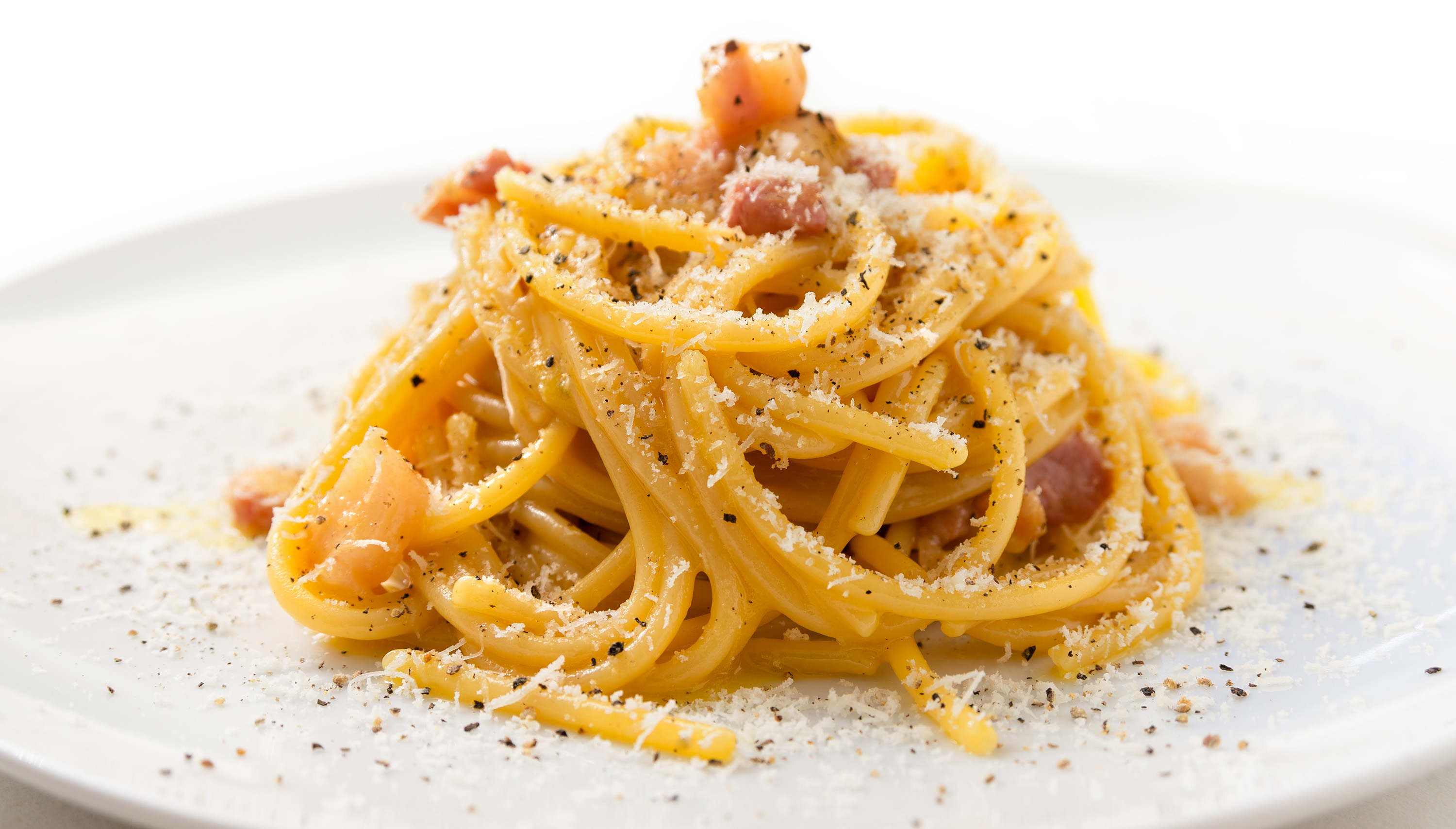
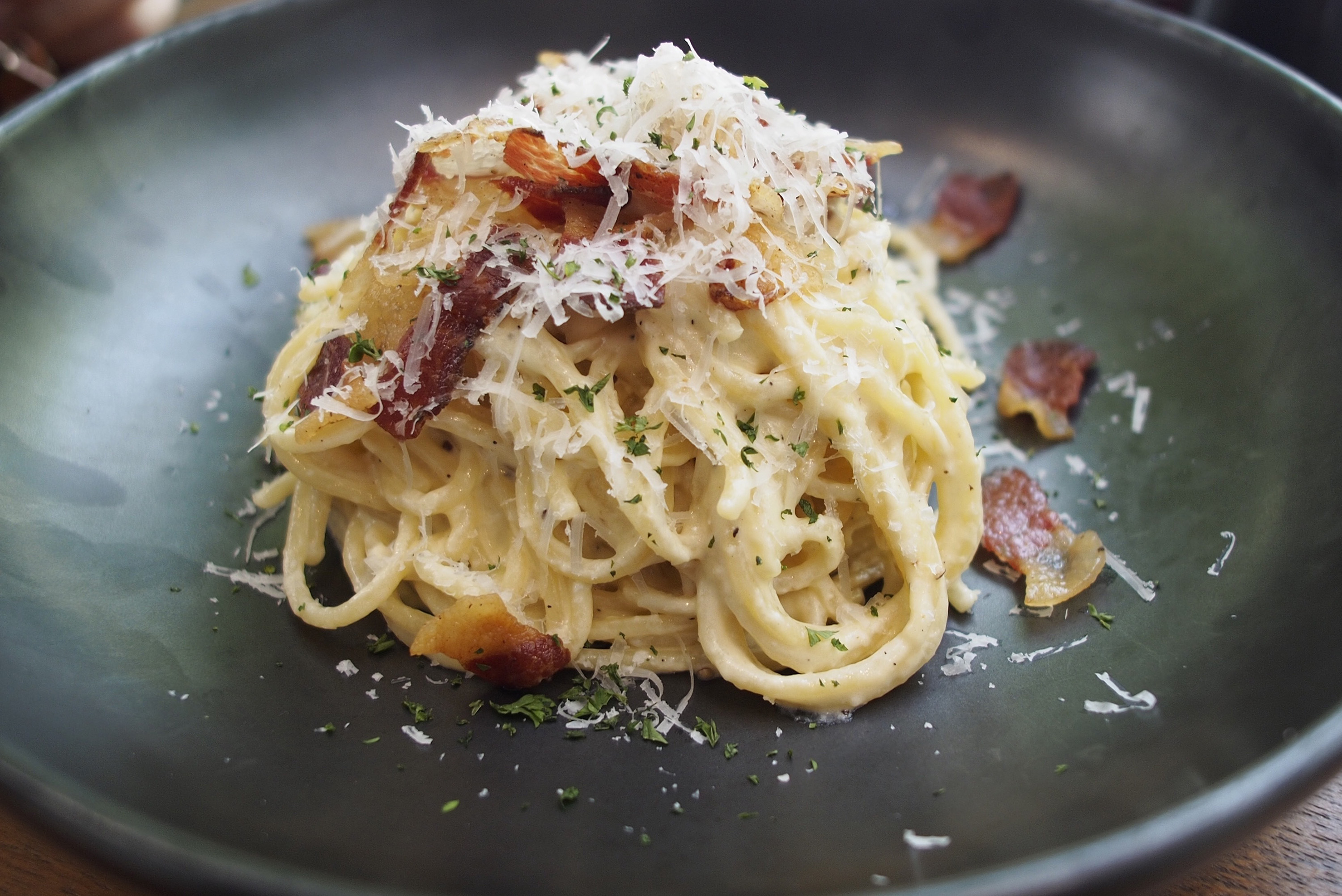
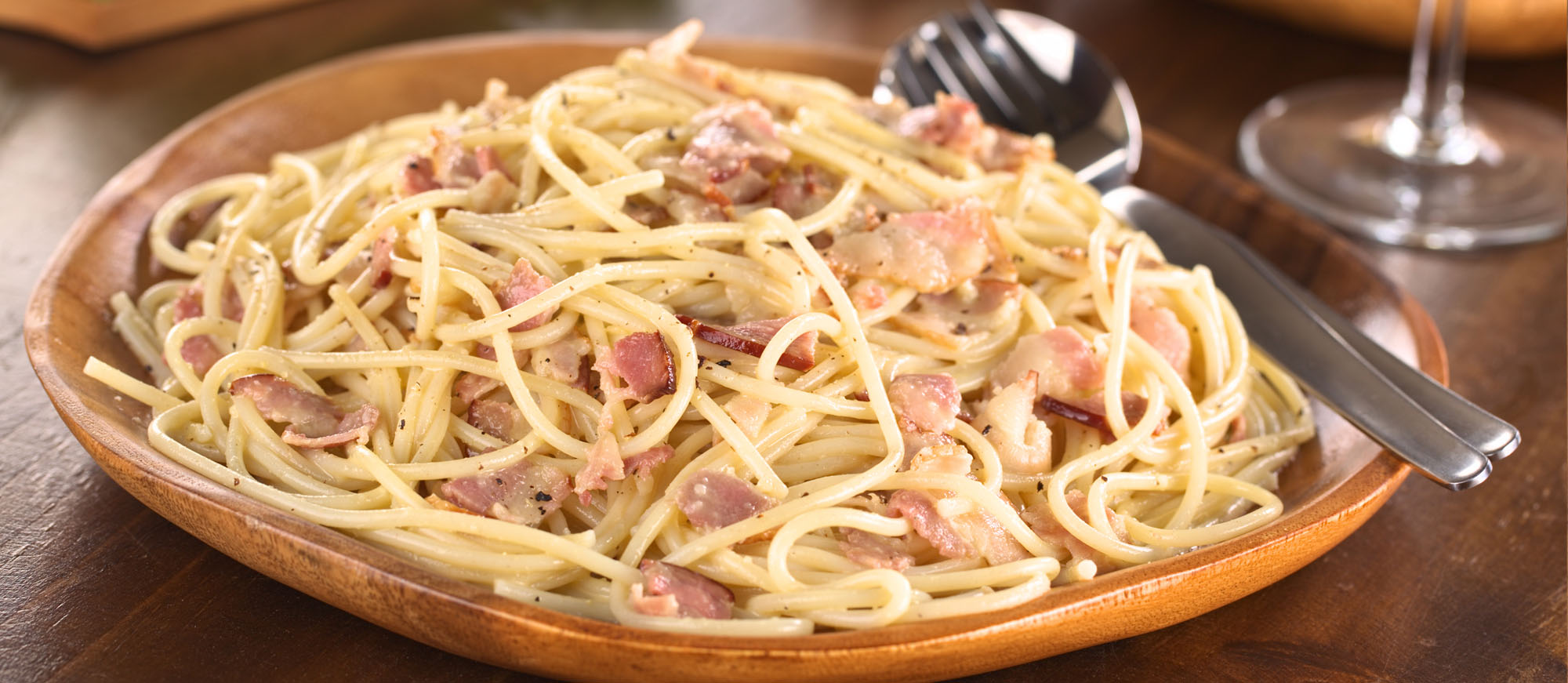

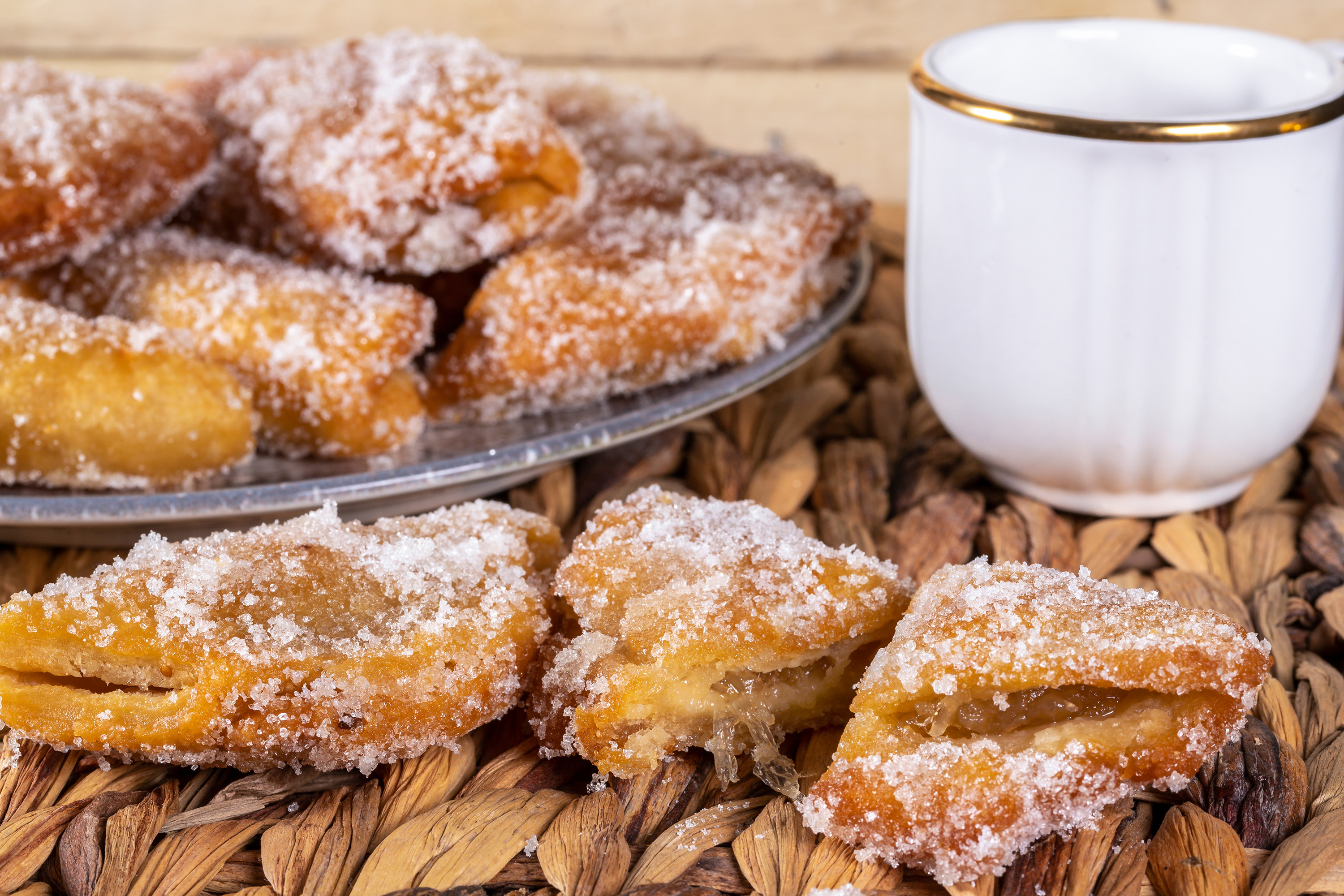



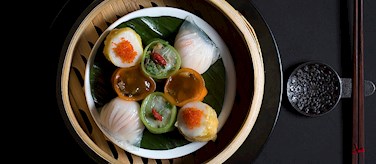
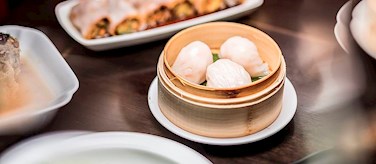


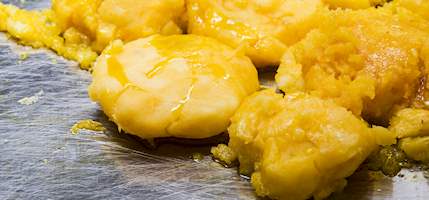

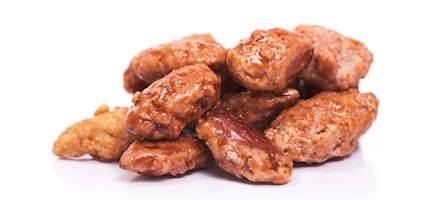
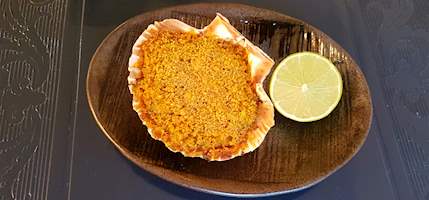

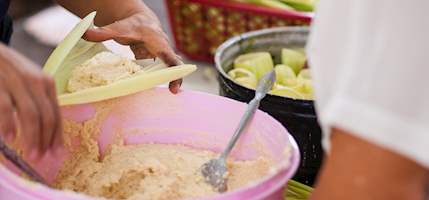

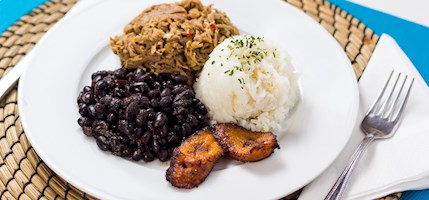

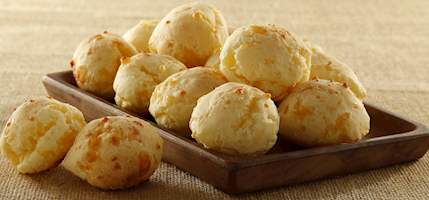

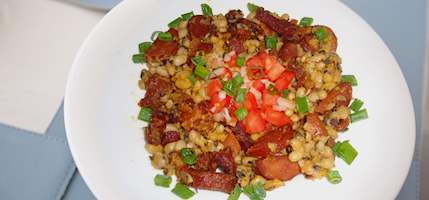
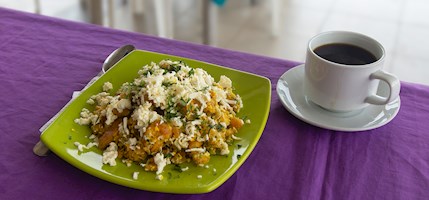




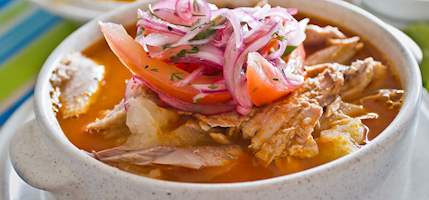
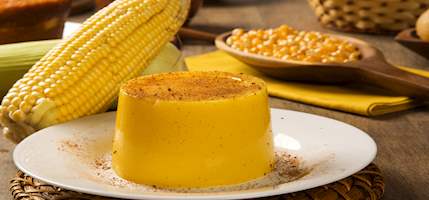

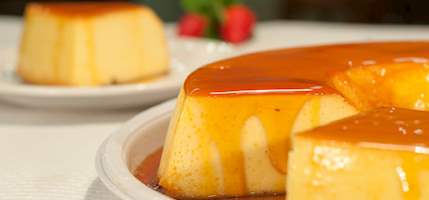
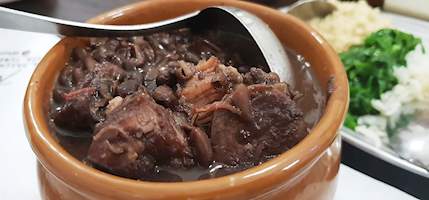
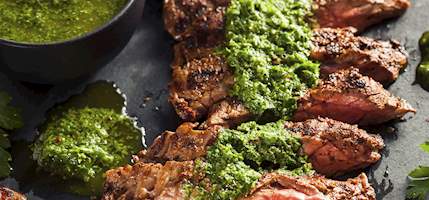

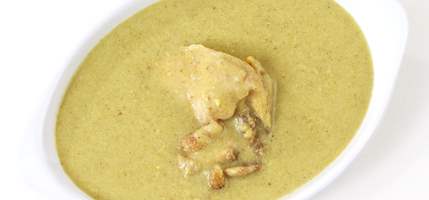
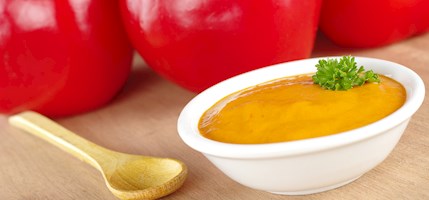
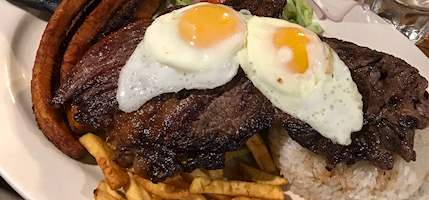
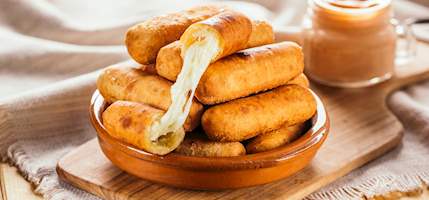
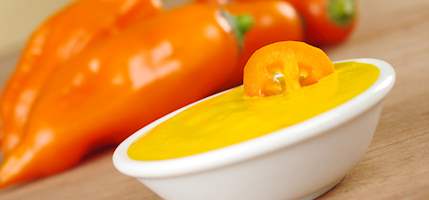
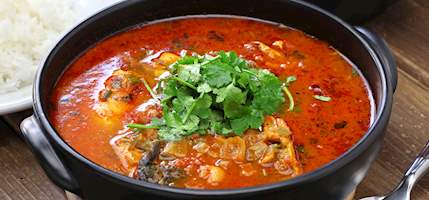
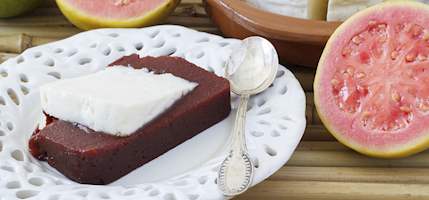
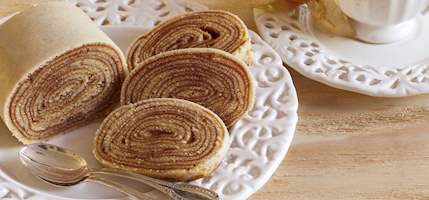
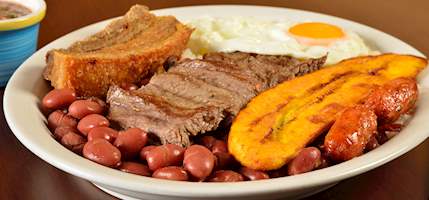

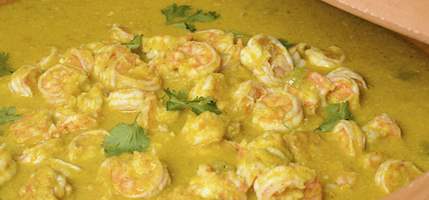
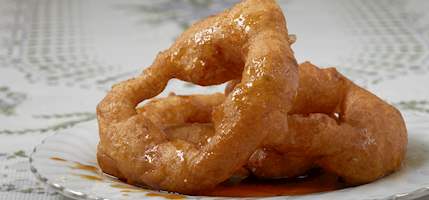
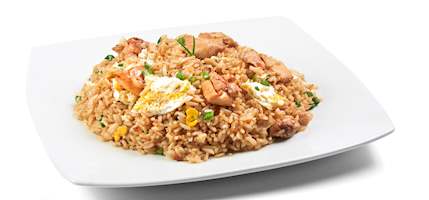
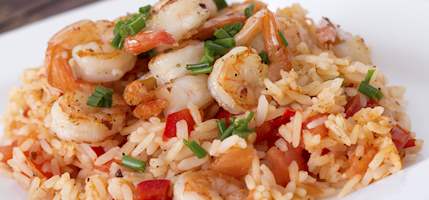
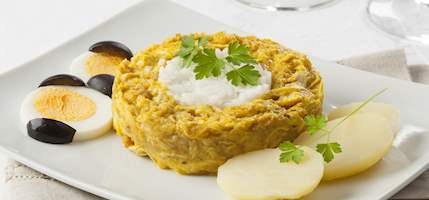
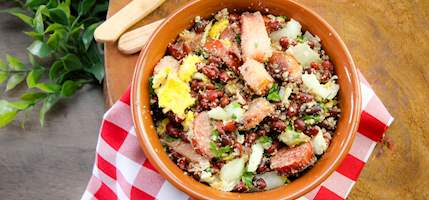
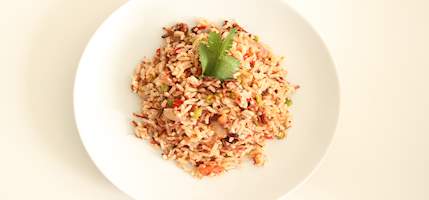
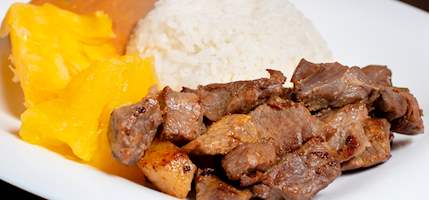
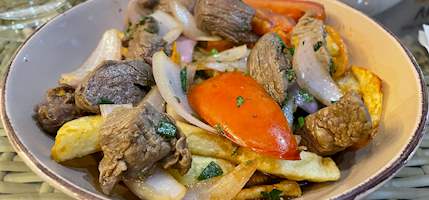
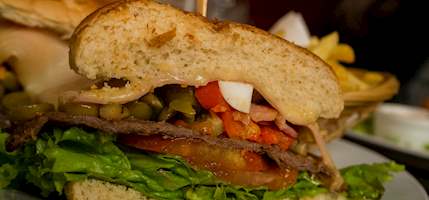
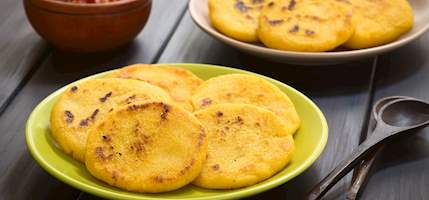
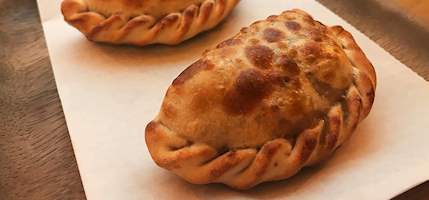
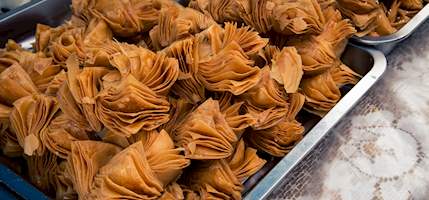
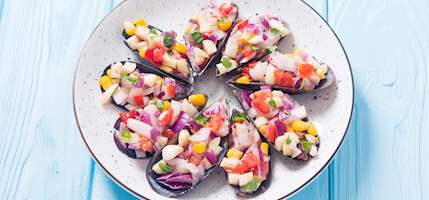
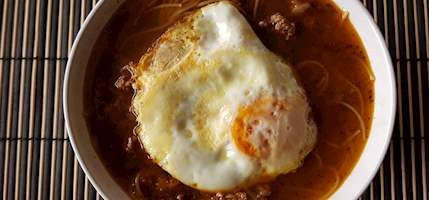
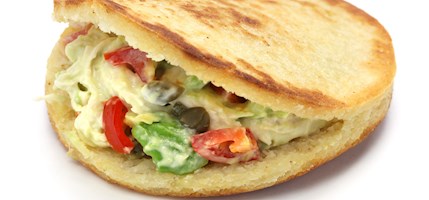


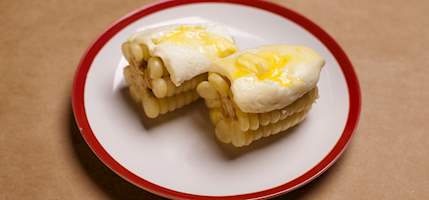
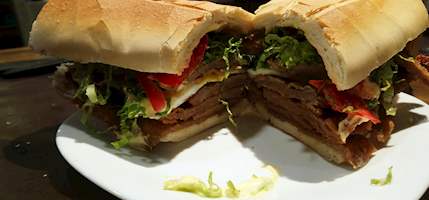
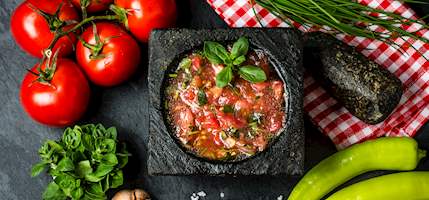
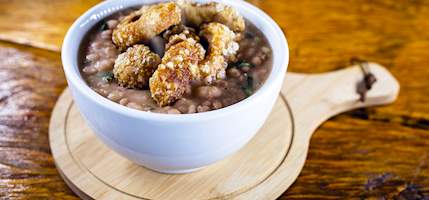
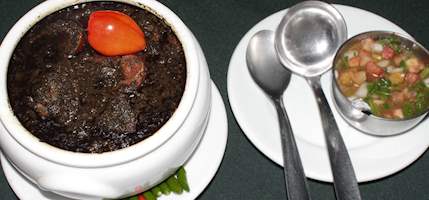
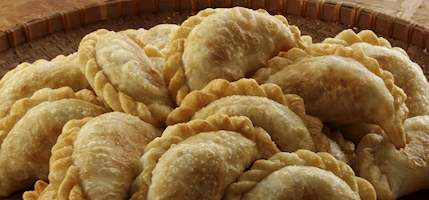
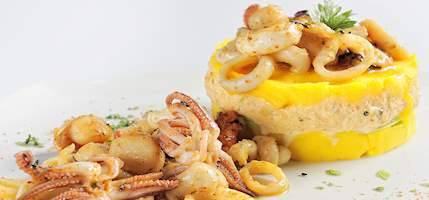
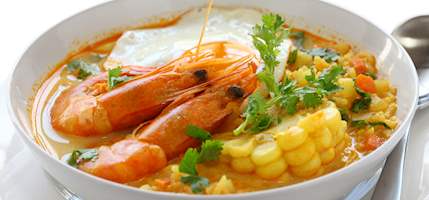
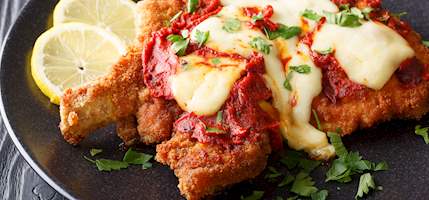
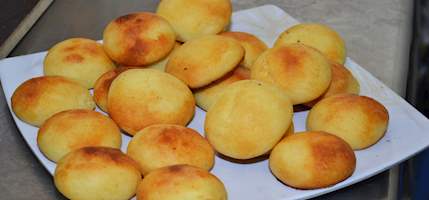

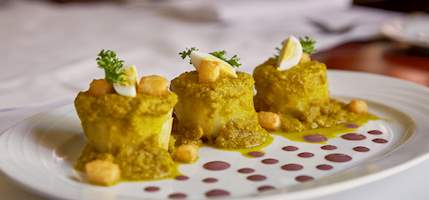
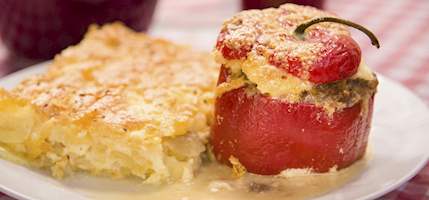
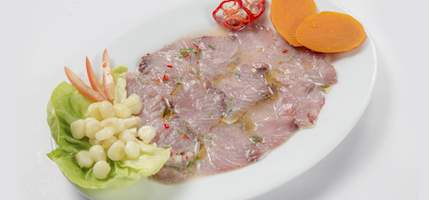
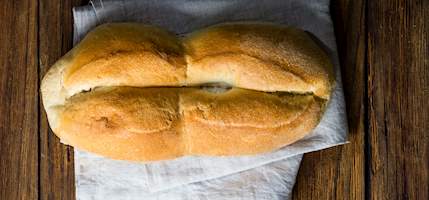
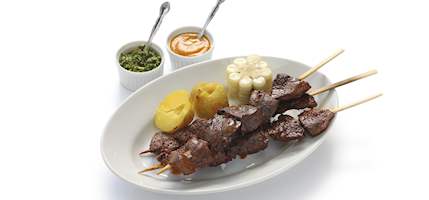
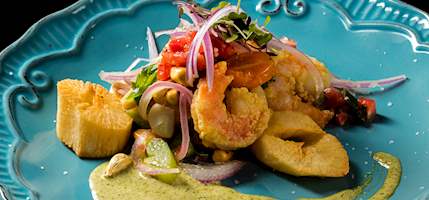
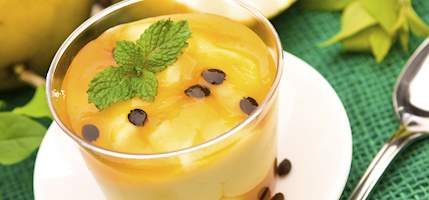

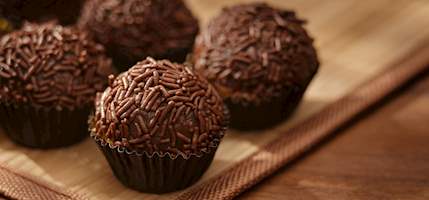
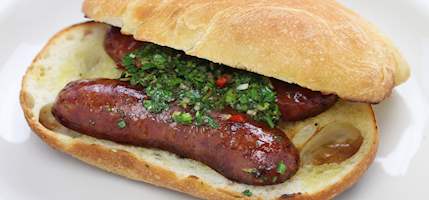
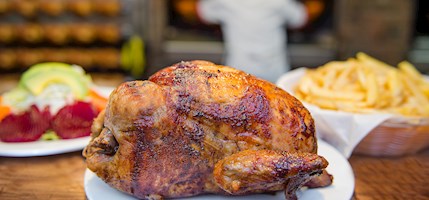
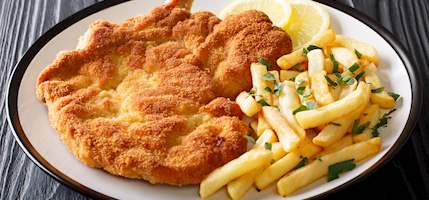
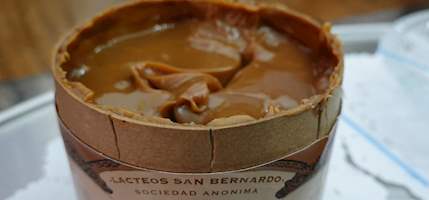

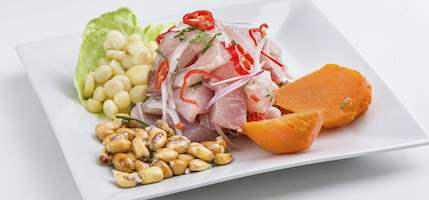
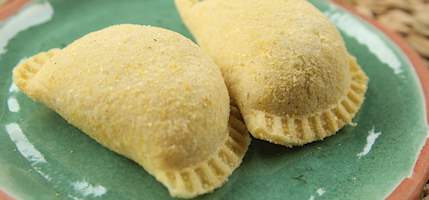
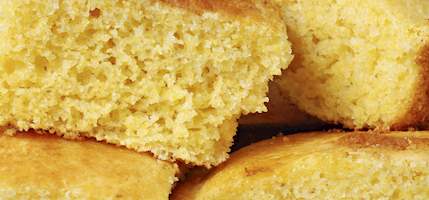
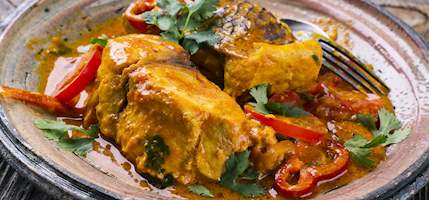
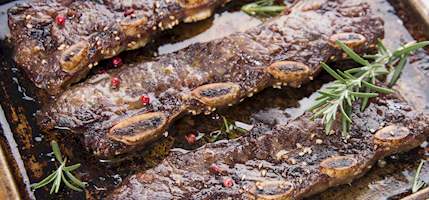
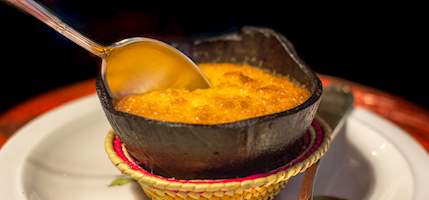
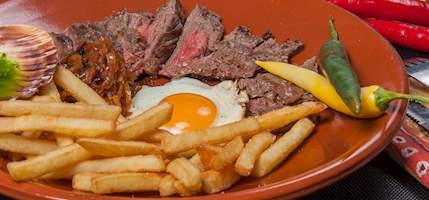
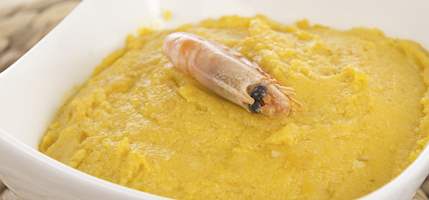
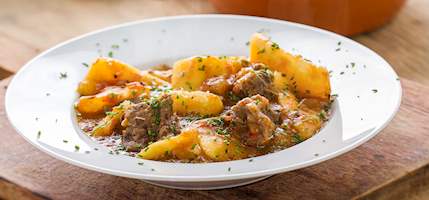

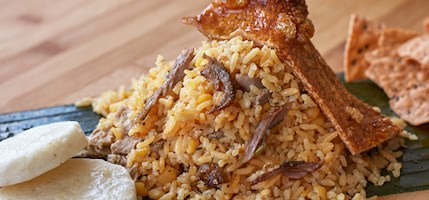
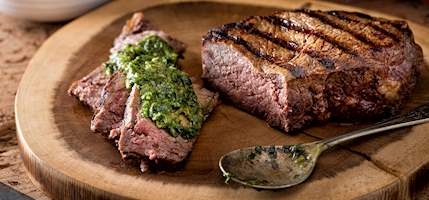

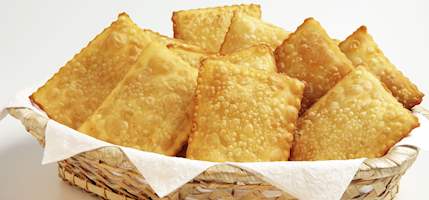

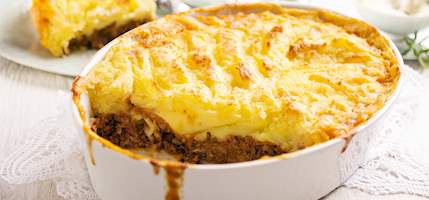
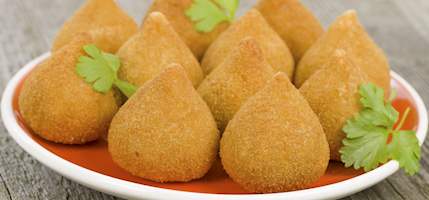
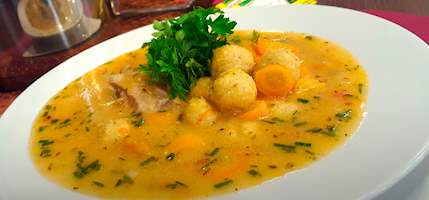
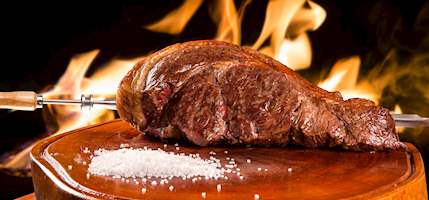
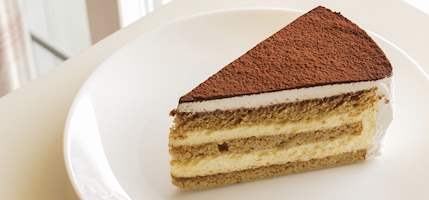
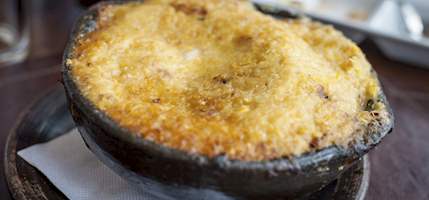
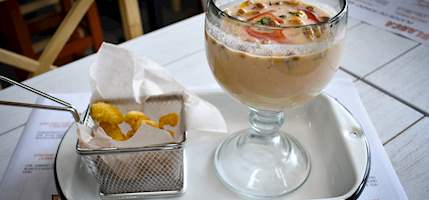
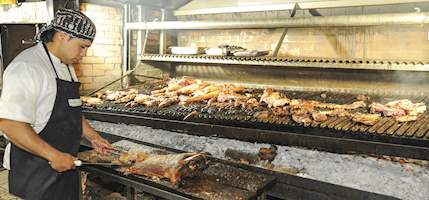
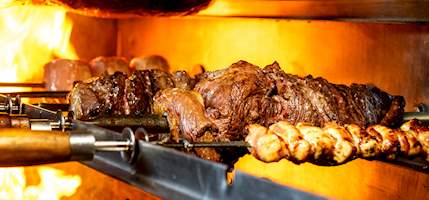


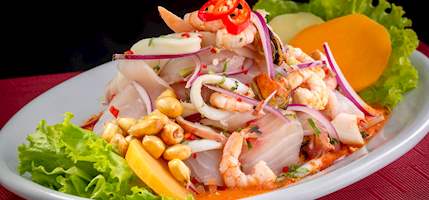

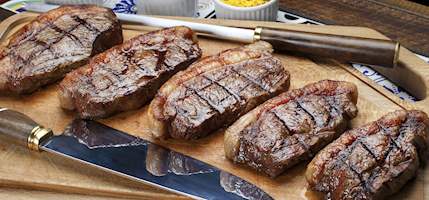
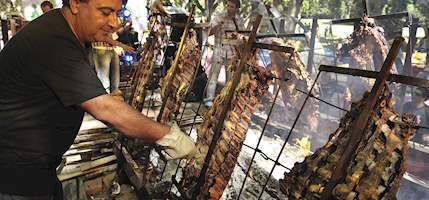
.png)












.png)



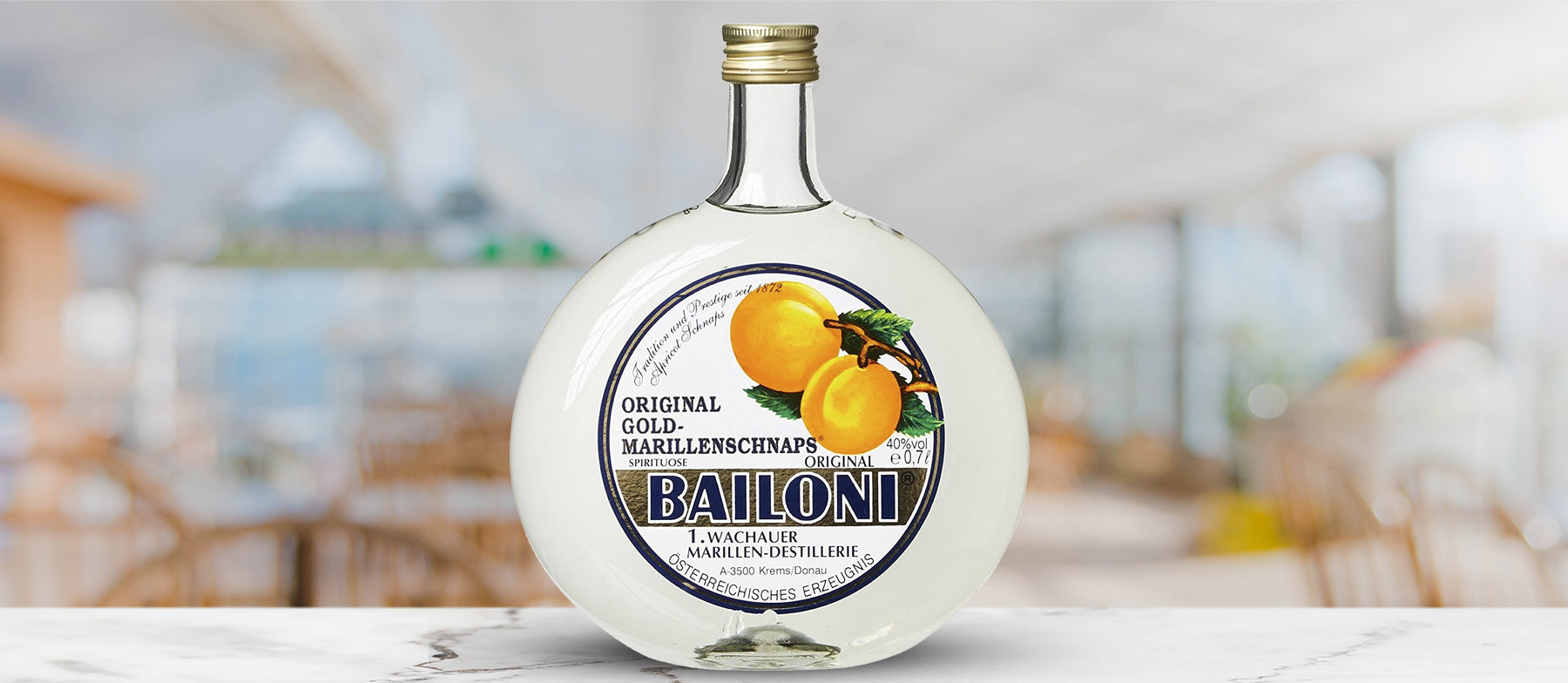

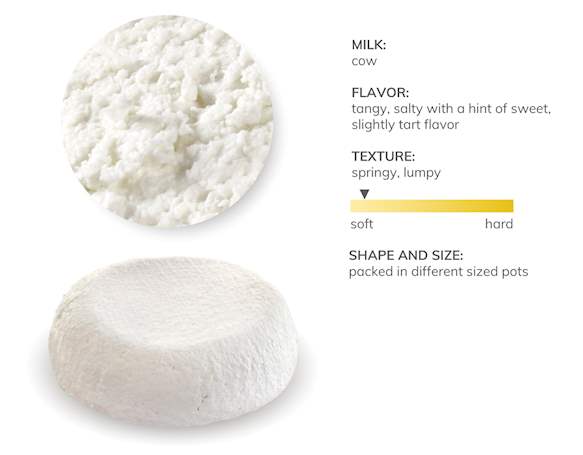
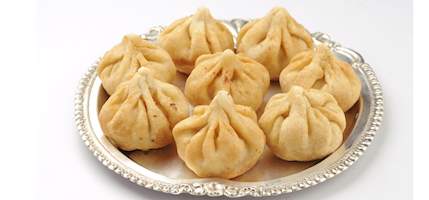

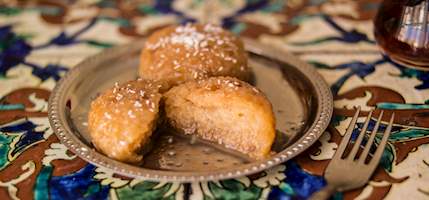

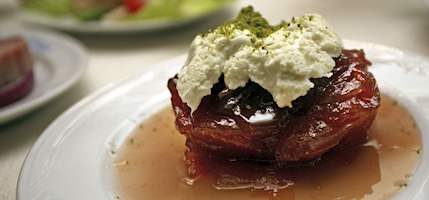
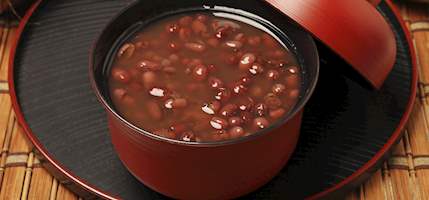

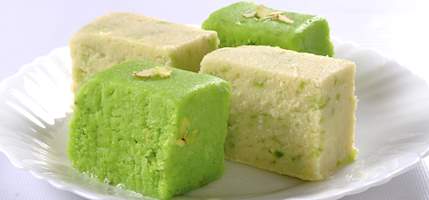
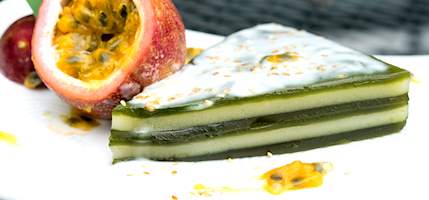

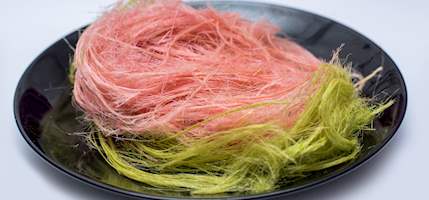



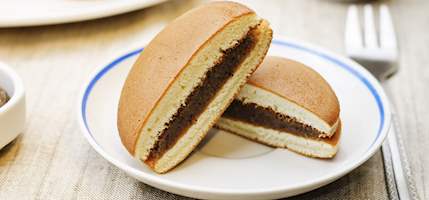


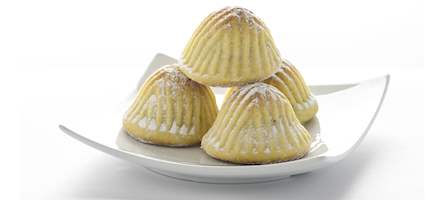

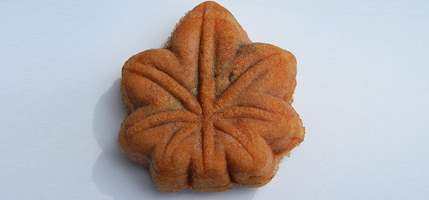
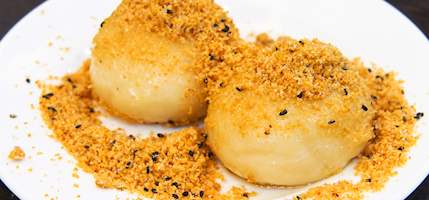

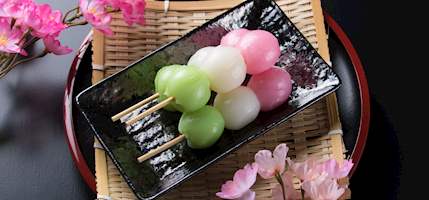
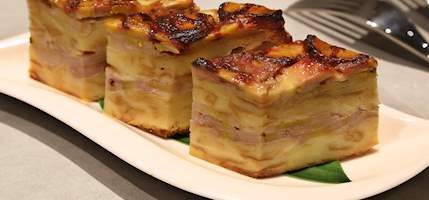
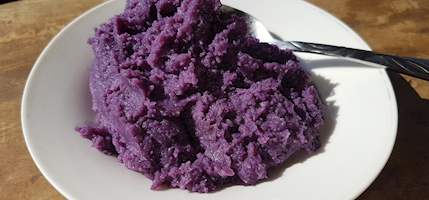

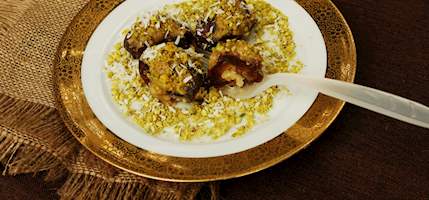
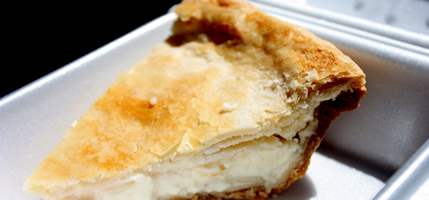



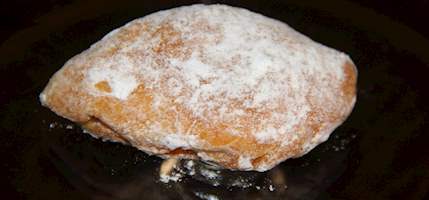
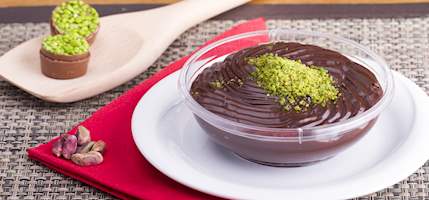
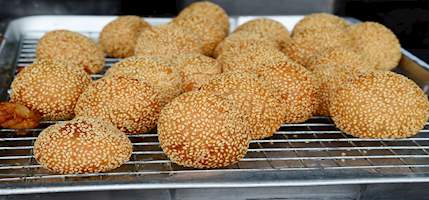


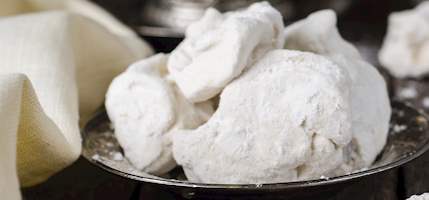
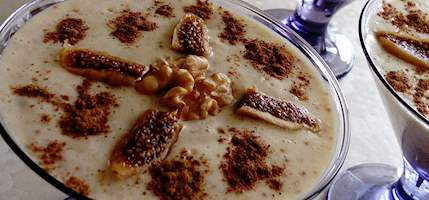
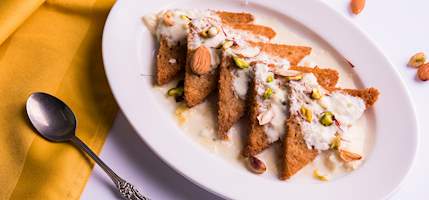

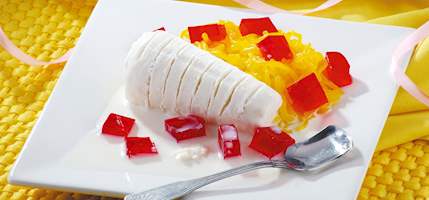
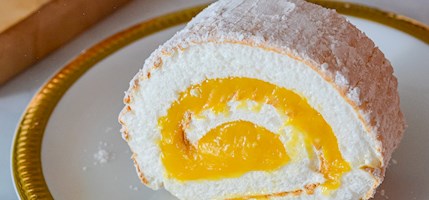
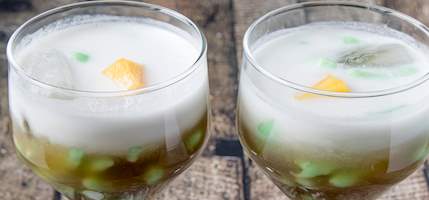
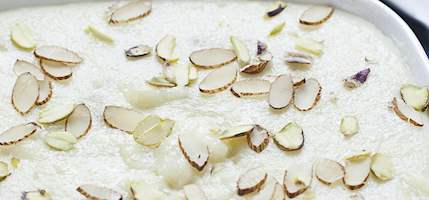
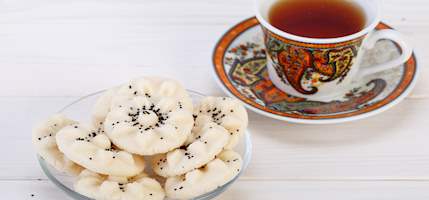
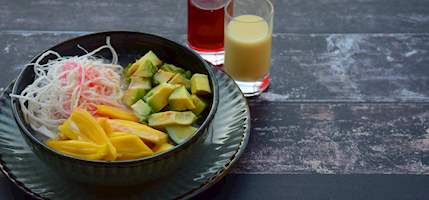
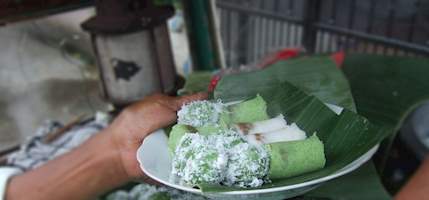
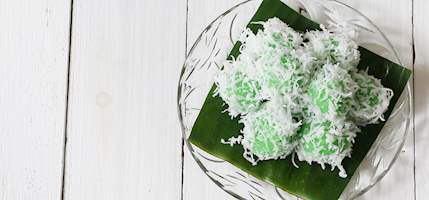
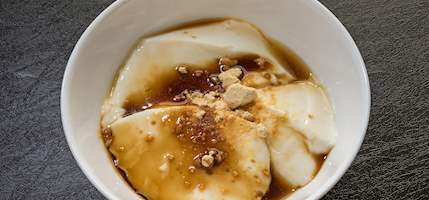
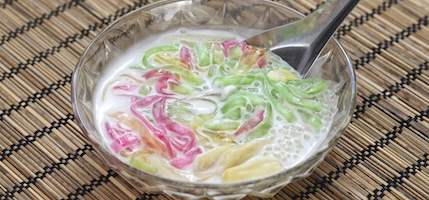

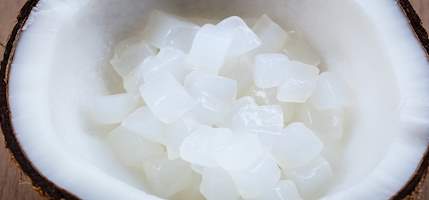
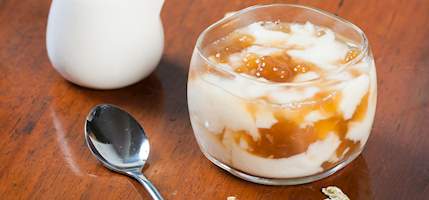
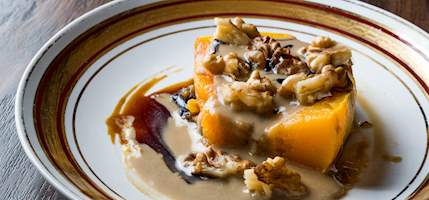
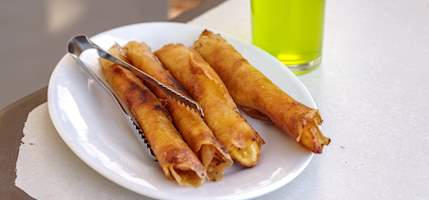
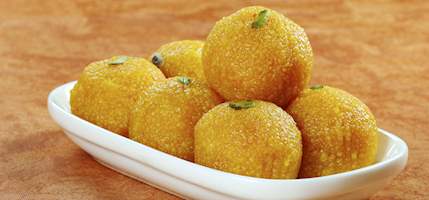
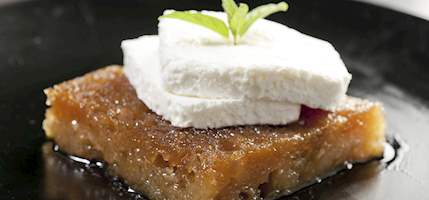

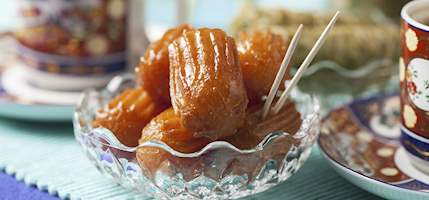



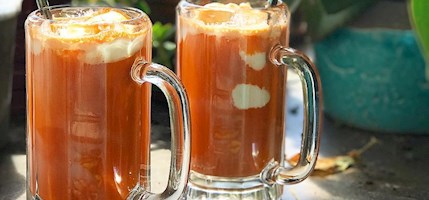

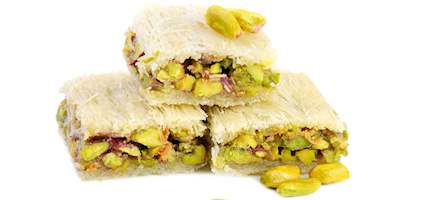

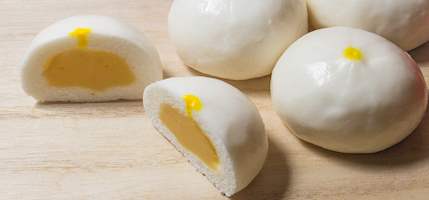
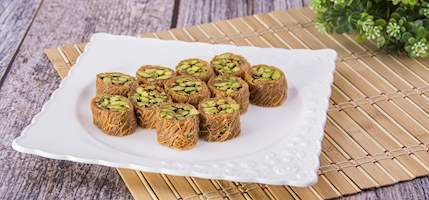
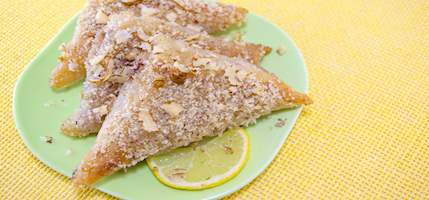

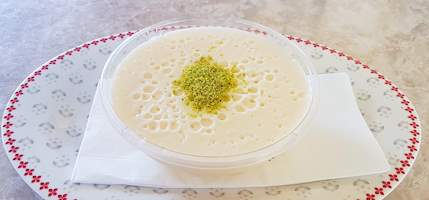
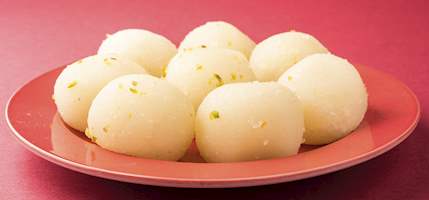
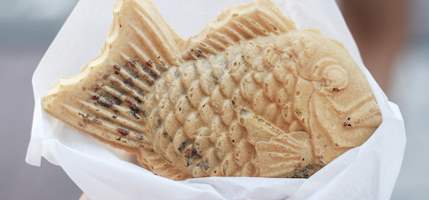
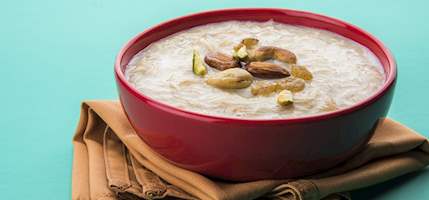


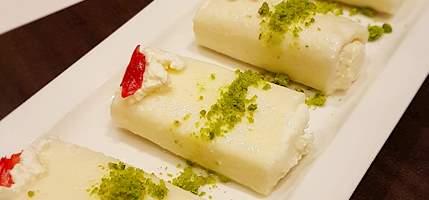
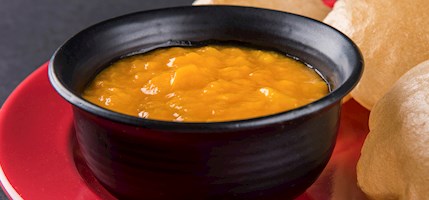
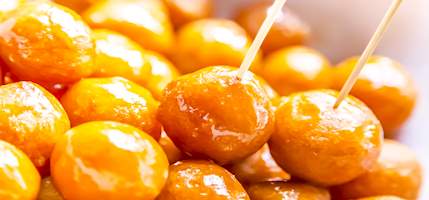
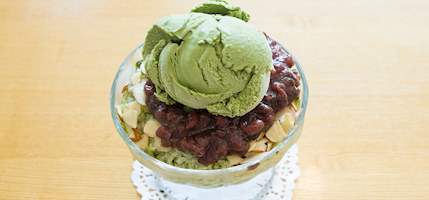

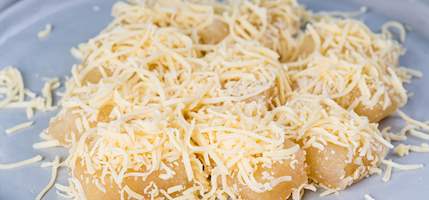
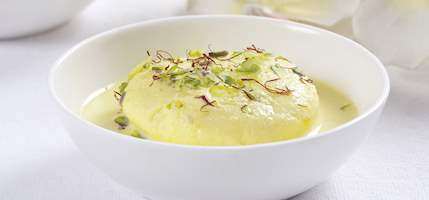
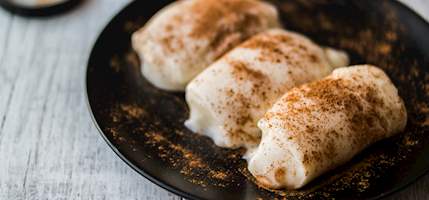
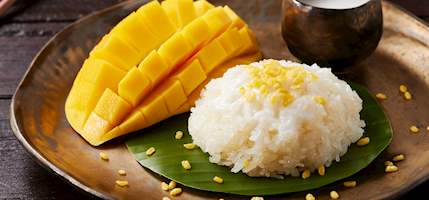



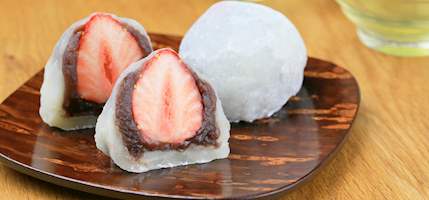
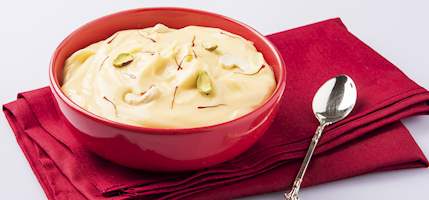
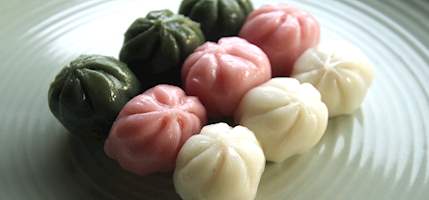

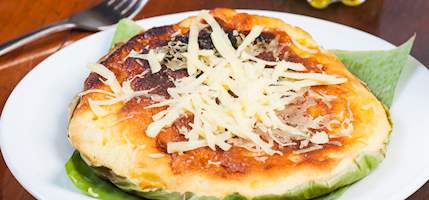
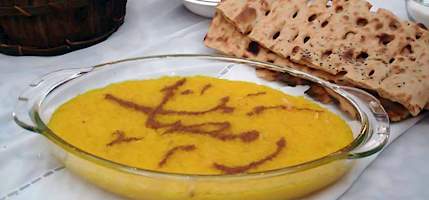
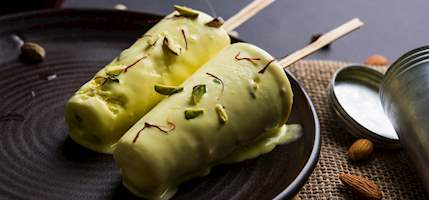
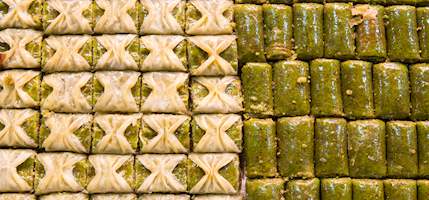
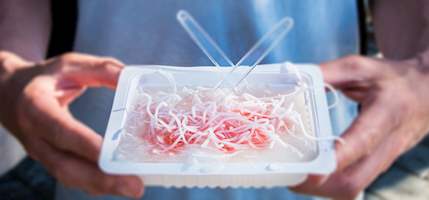
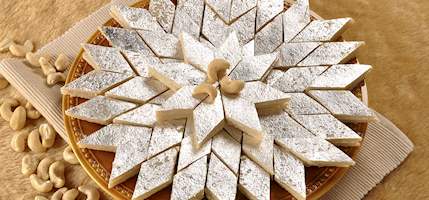
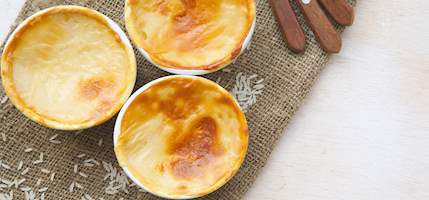
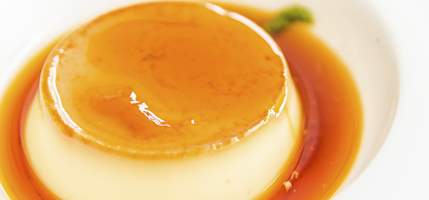
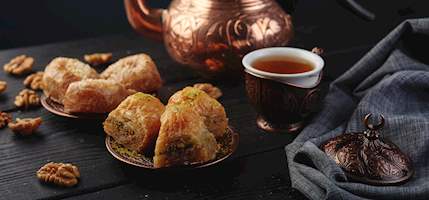
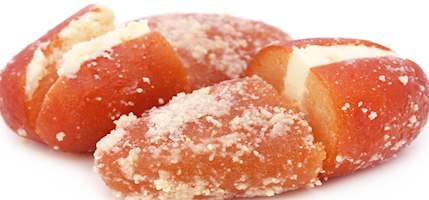

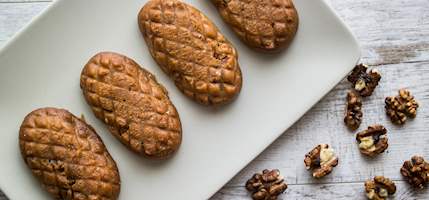
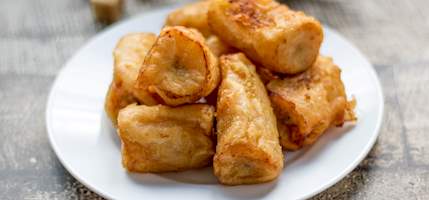
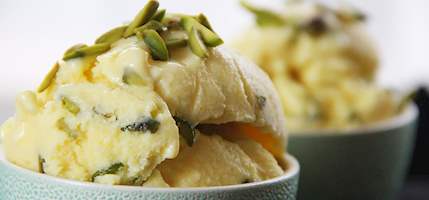
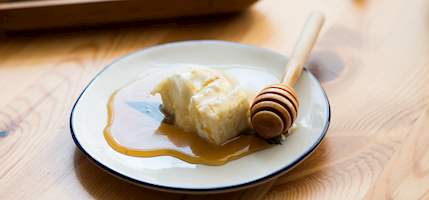
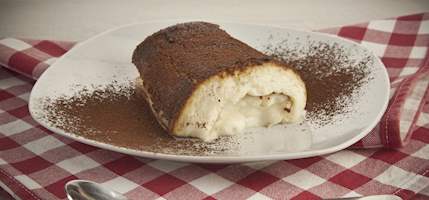
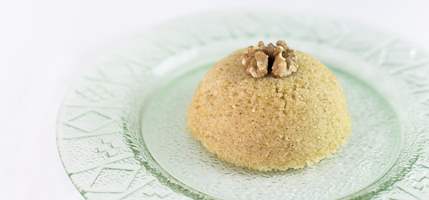
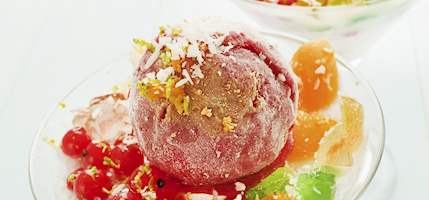
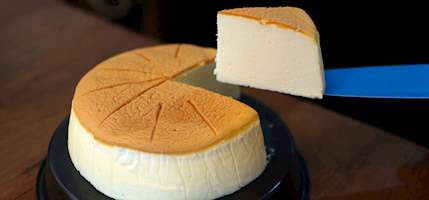
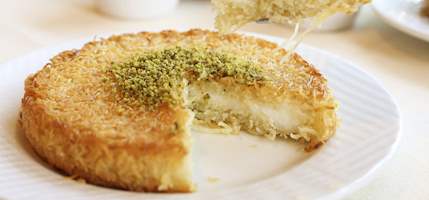

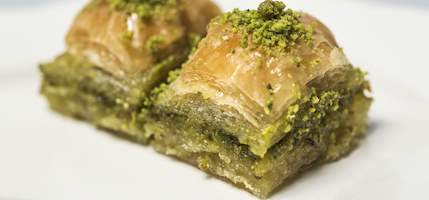
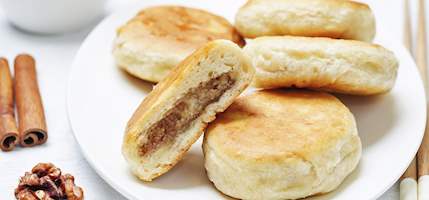
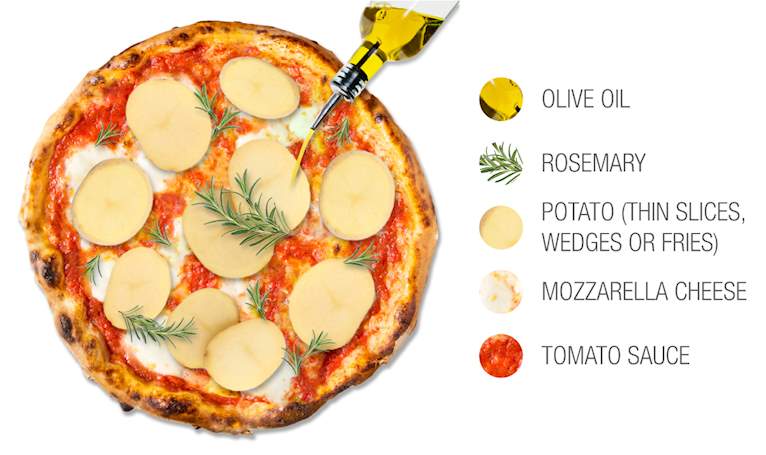
.png)
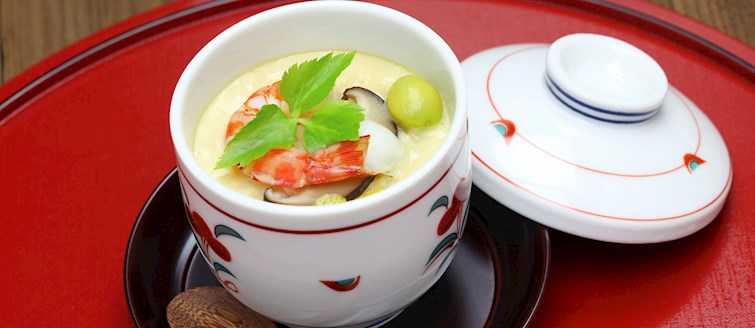
.png)





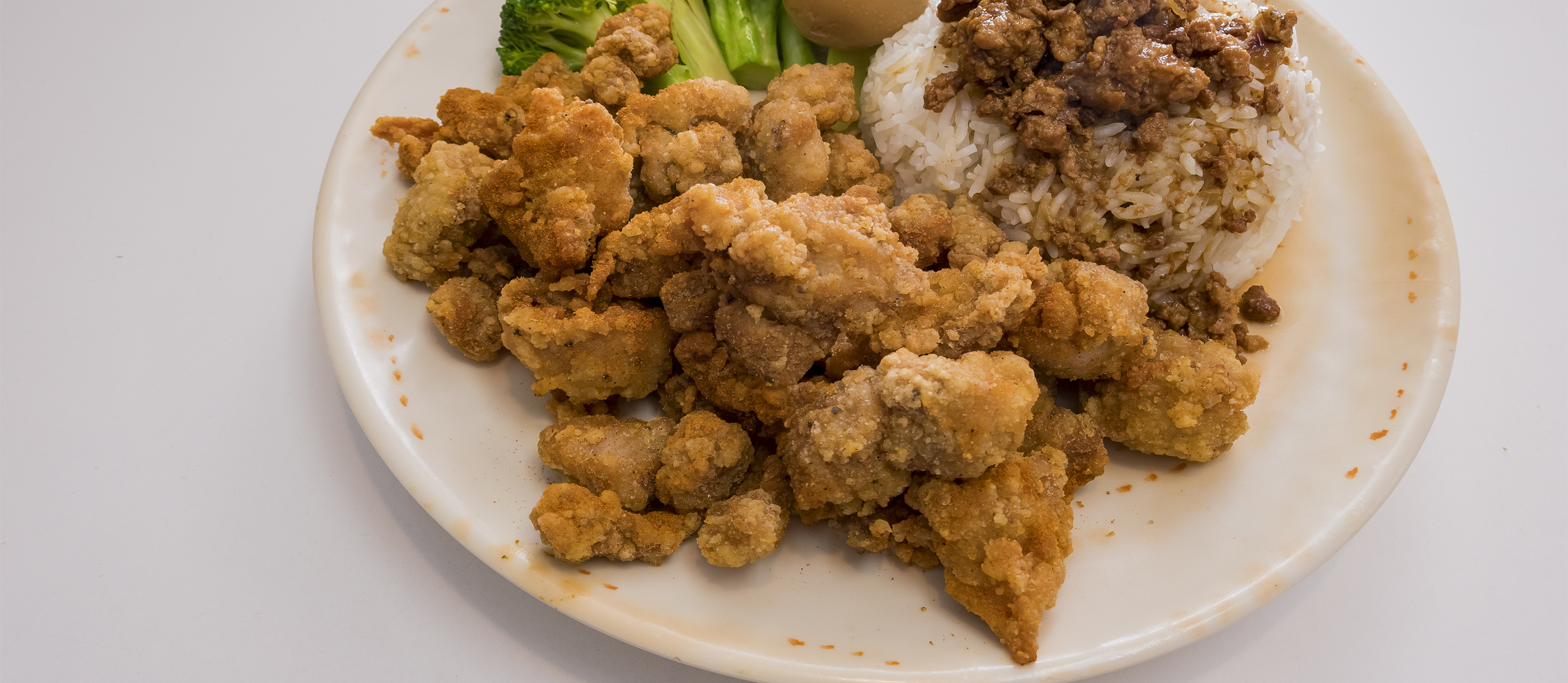

.png)





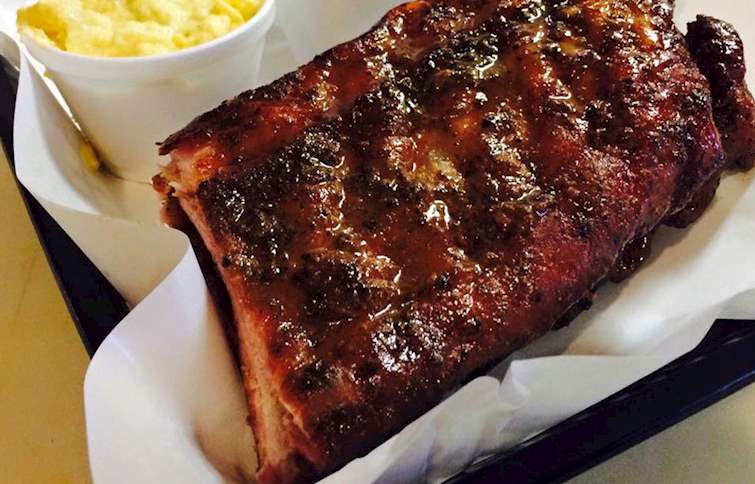
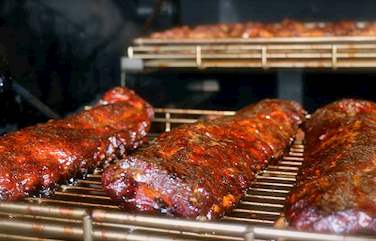

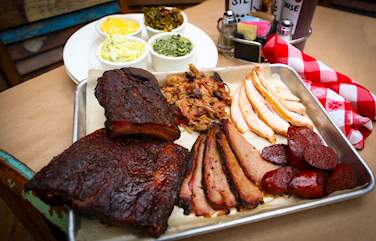
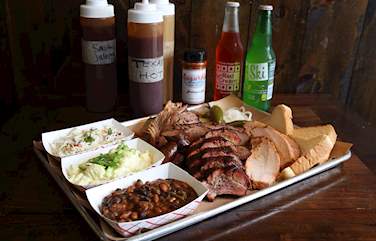
.jpg)
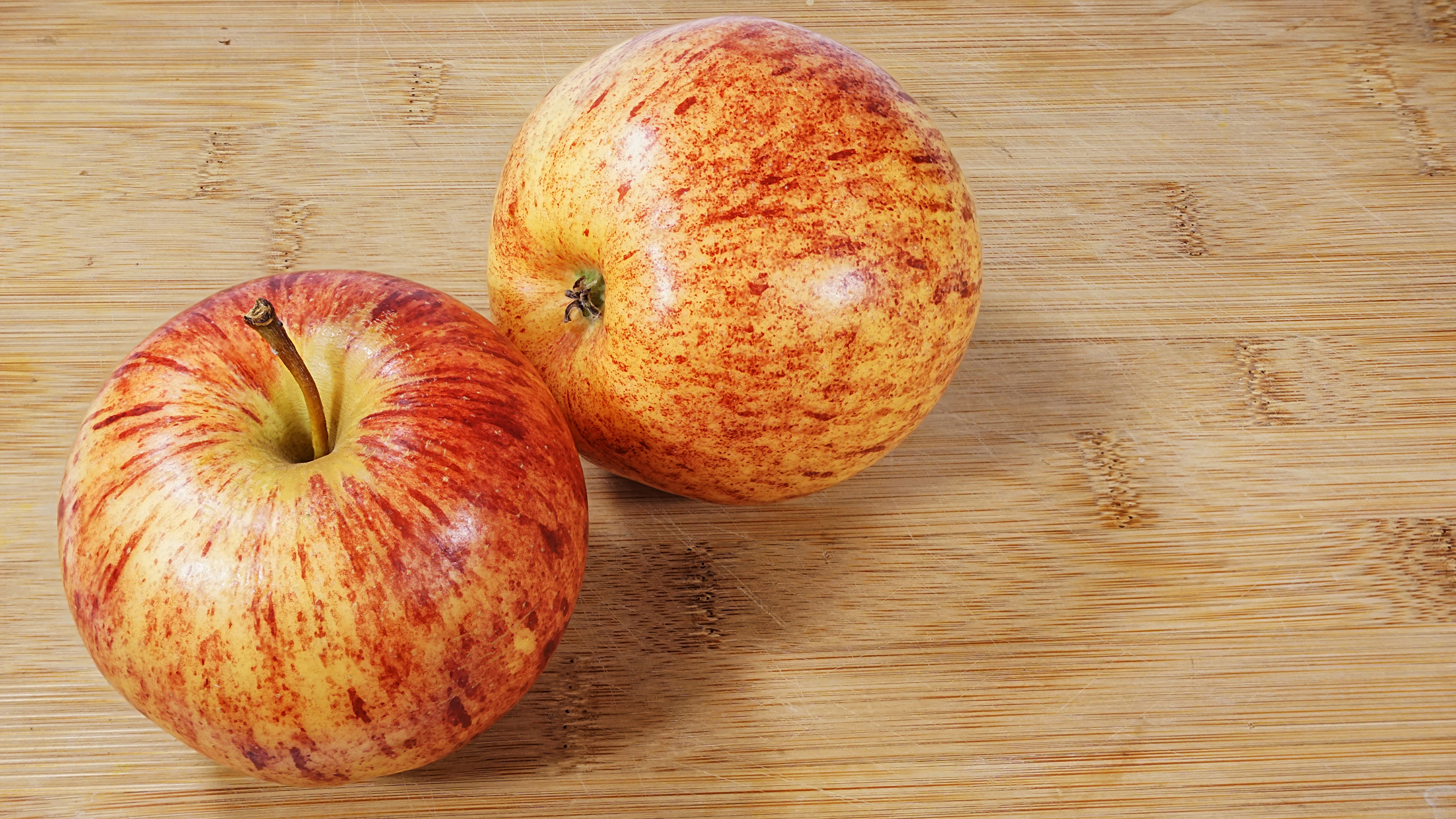








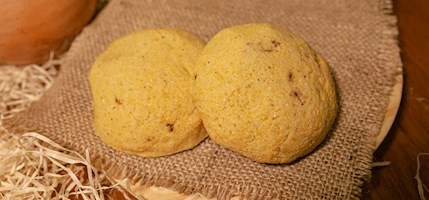


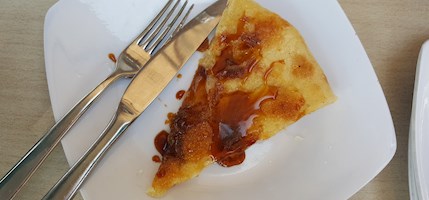



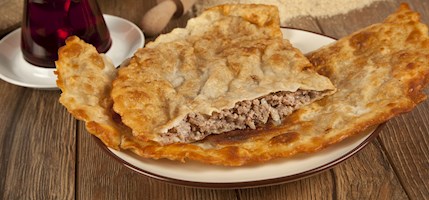

.png)
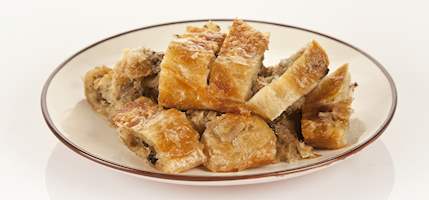
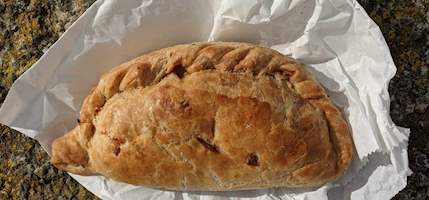
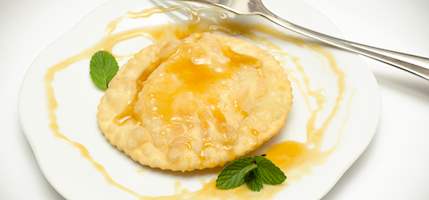
.png)
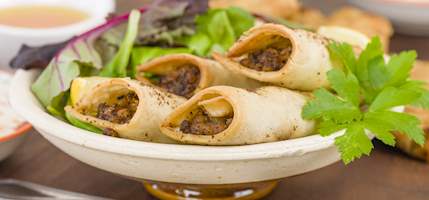

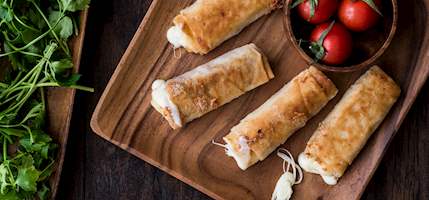
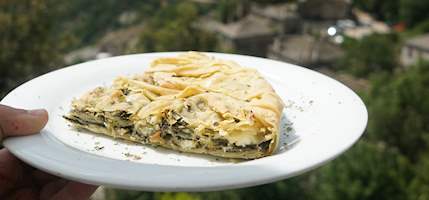

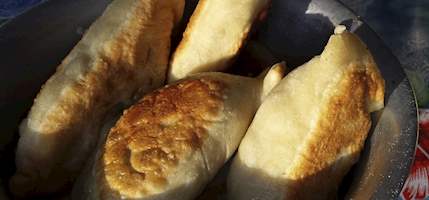

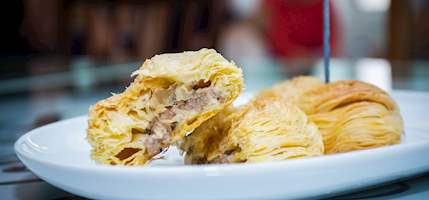

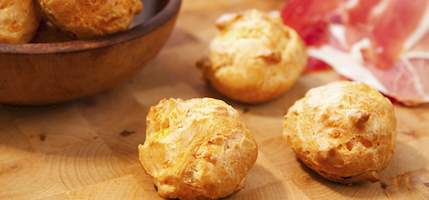


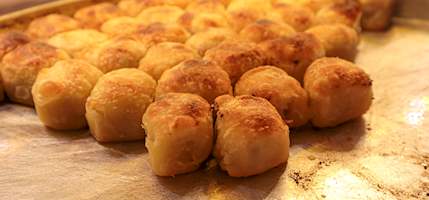

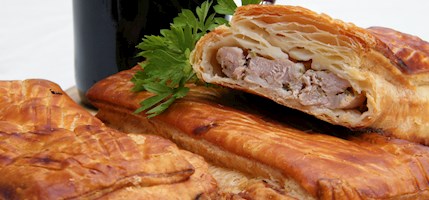
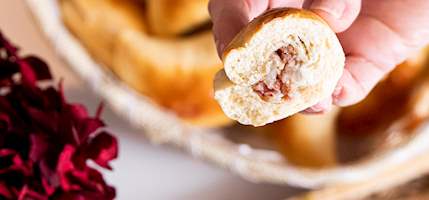

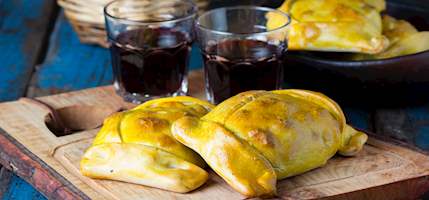
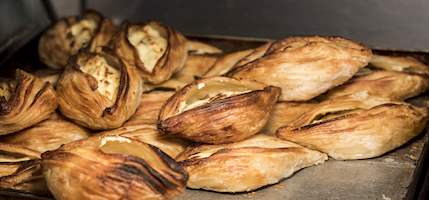





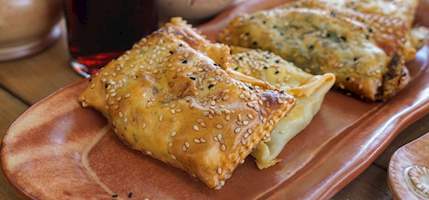
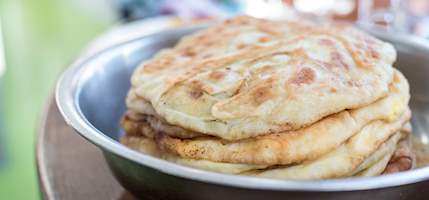

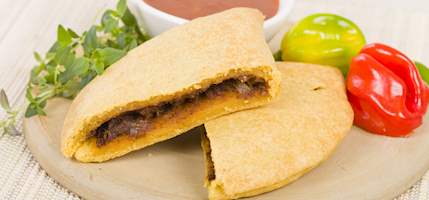


.png)
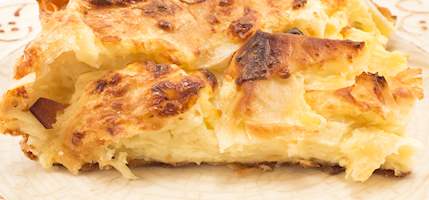
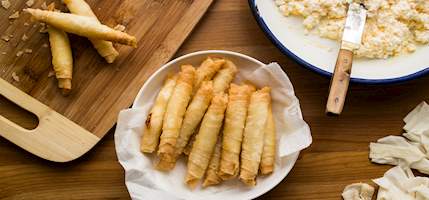


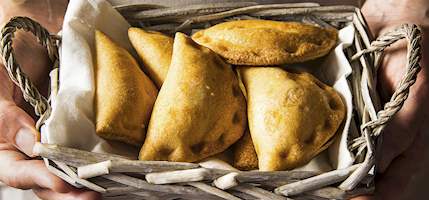
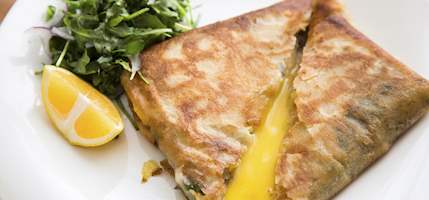


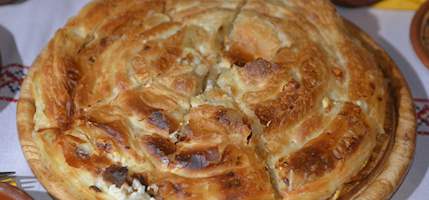

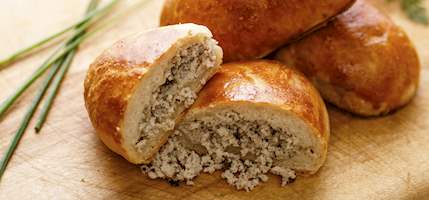
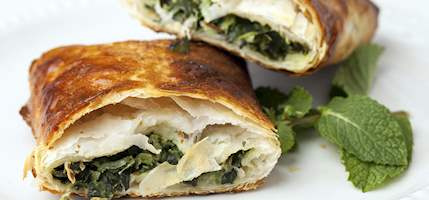
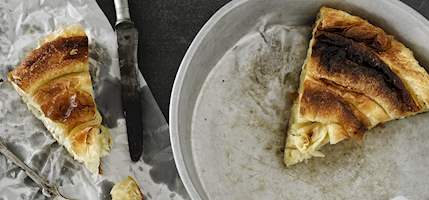
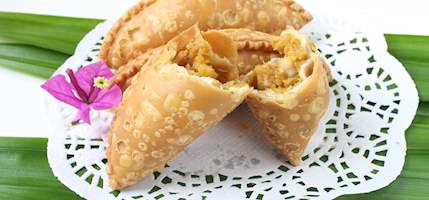


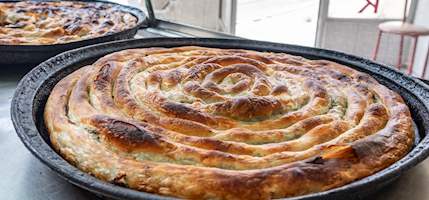


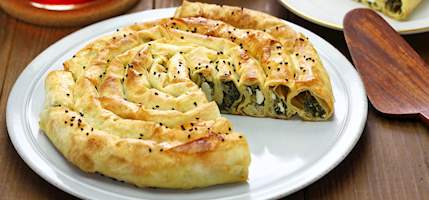
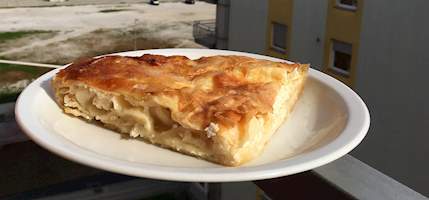

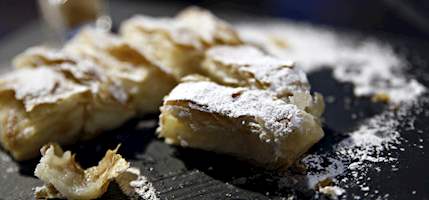
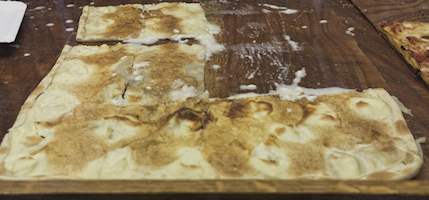



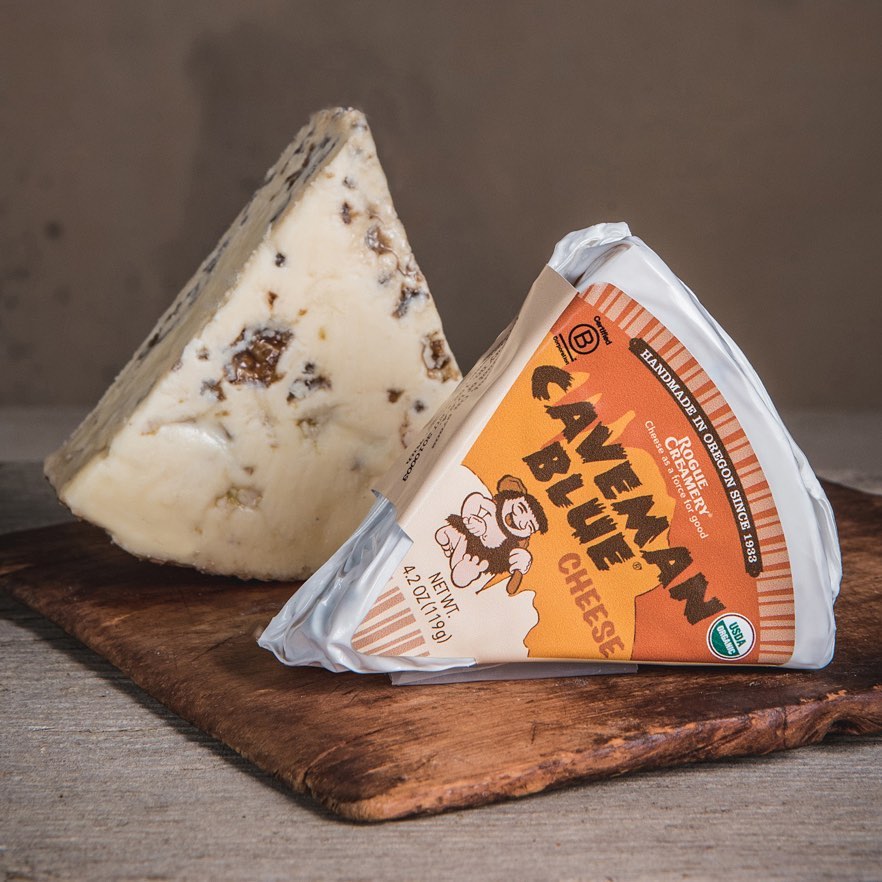
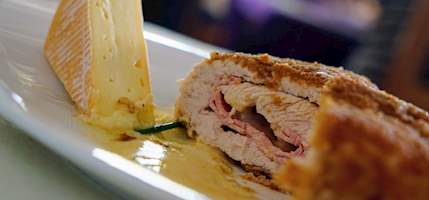


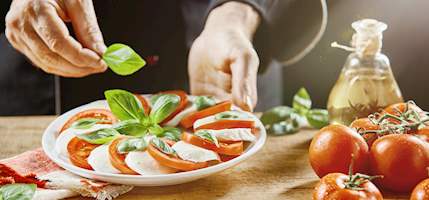

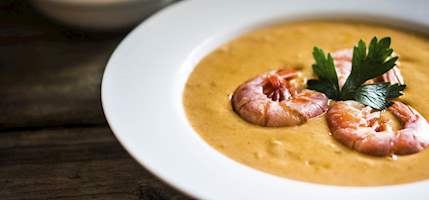


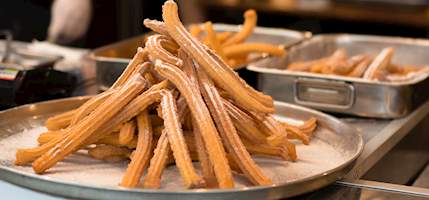
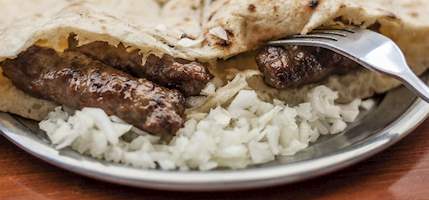
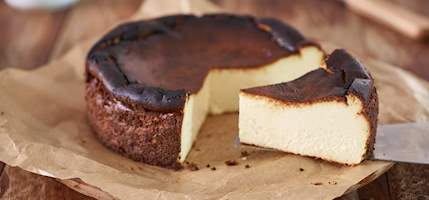
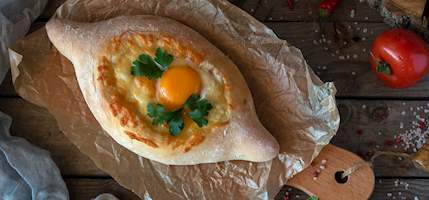

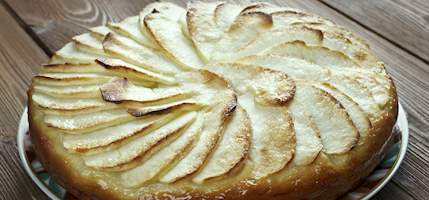
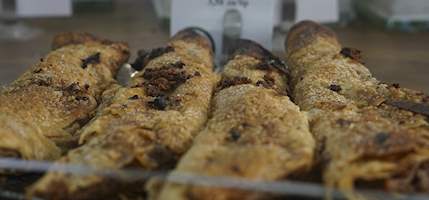



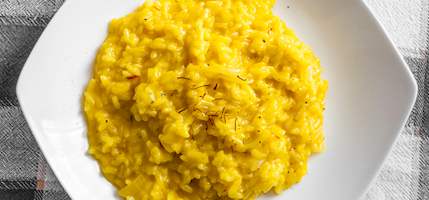
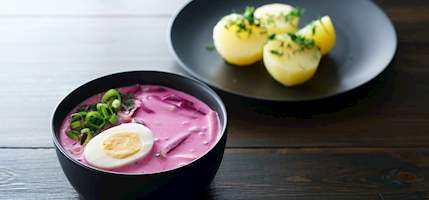
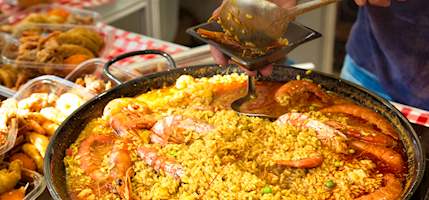
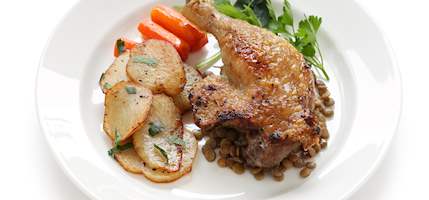
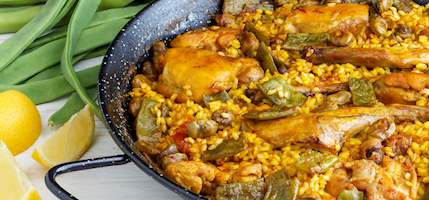


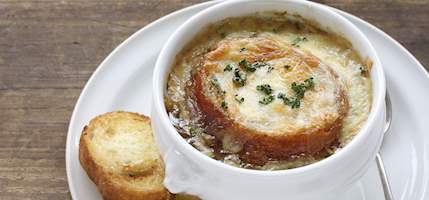
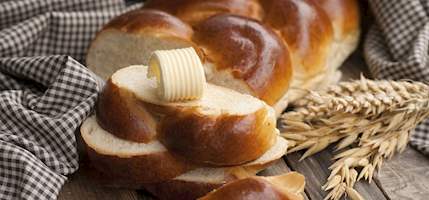

.png)



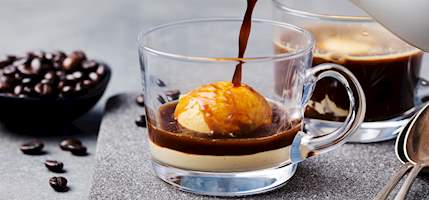

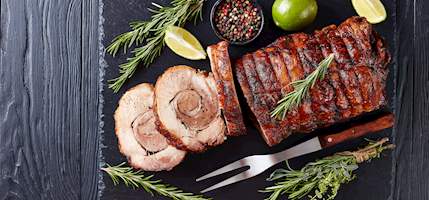
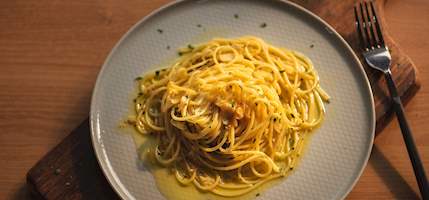
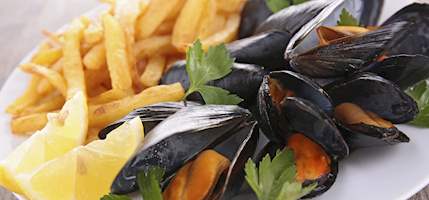


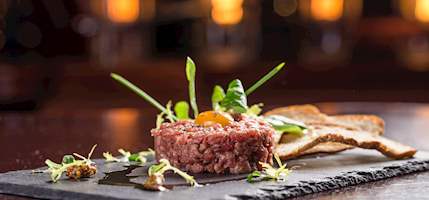
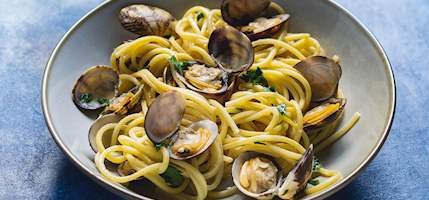
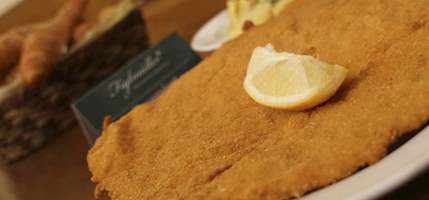
.png)


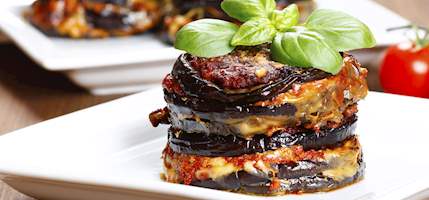





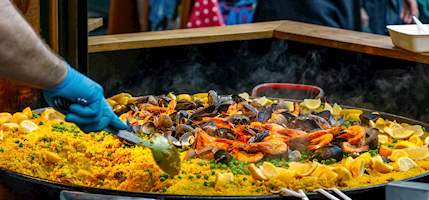
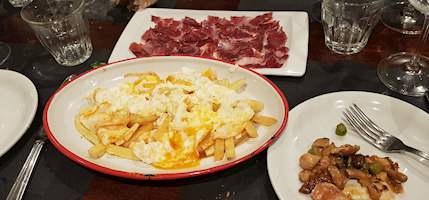
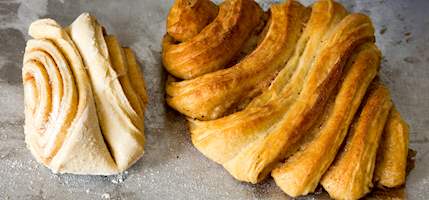

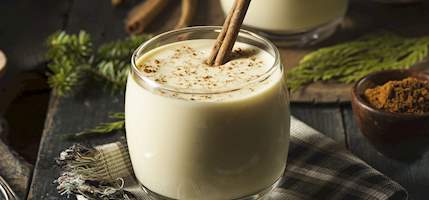

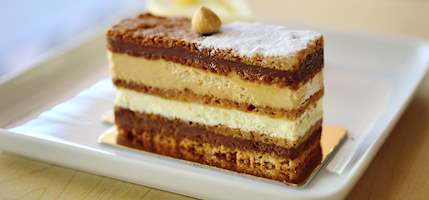
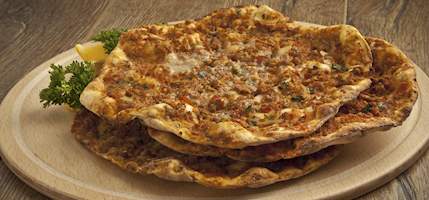

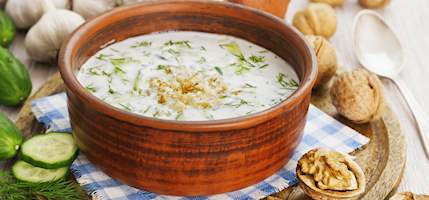

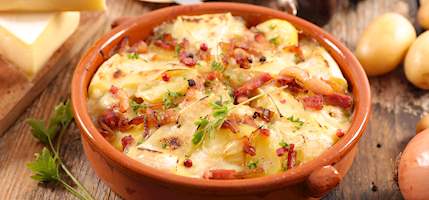
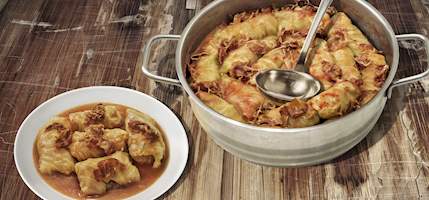


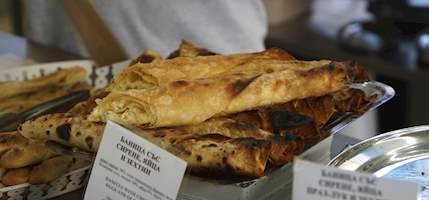
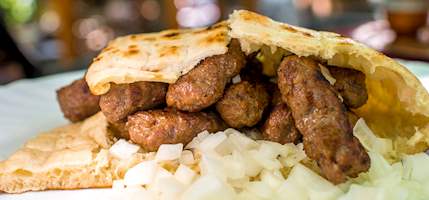

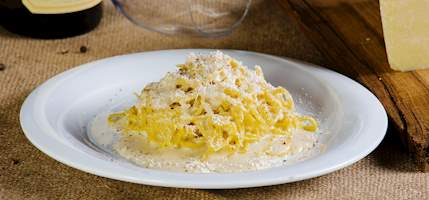
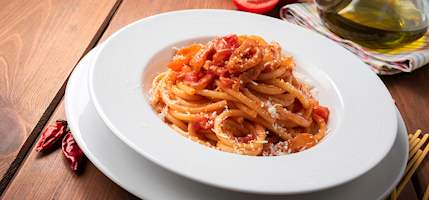
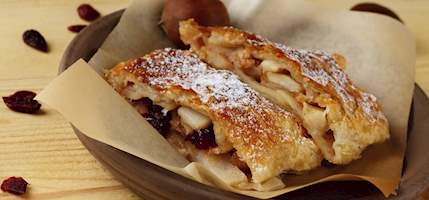
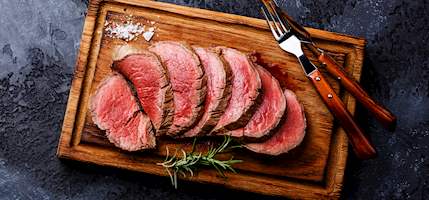
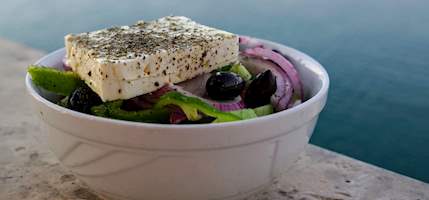
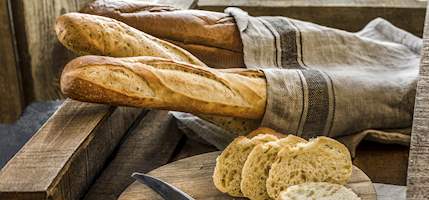
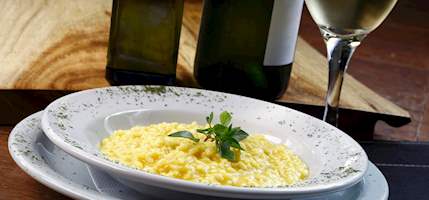
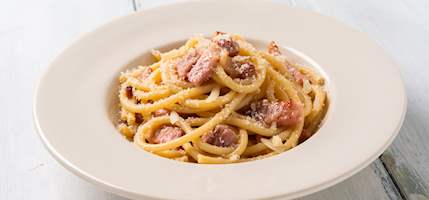


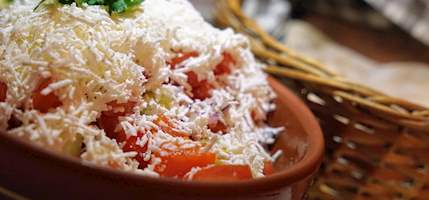
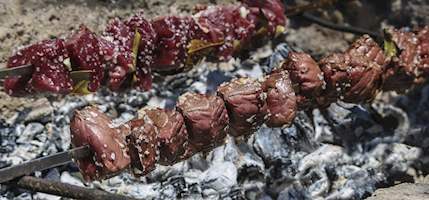
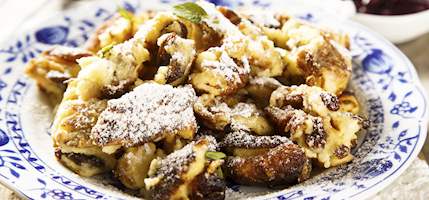
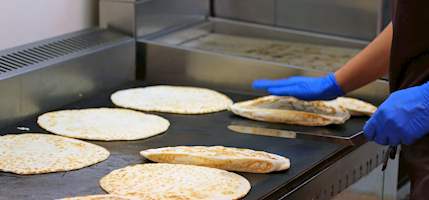

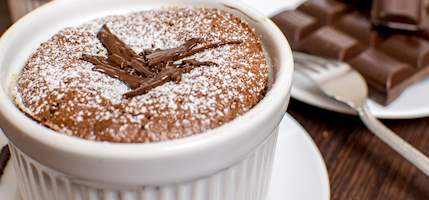
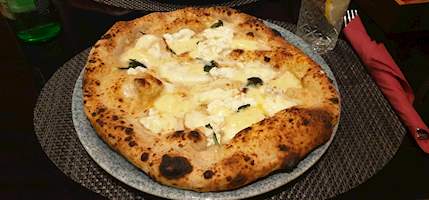
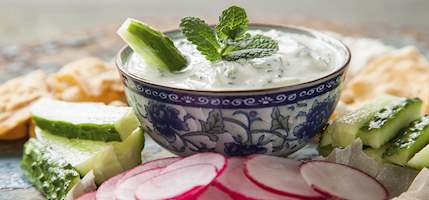
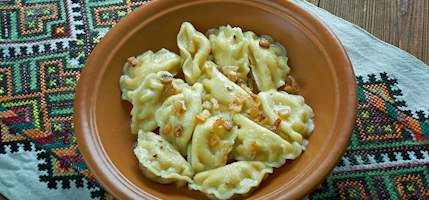

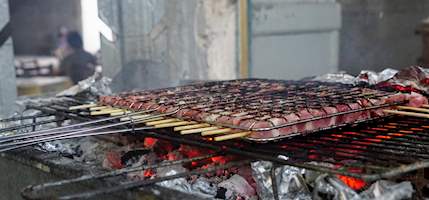


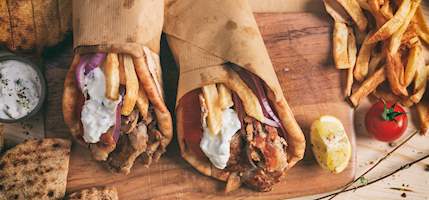
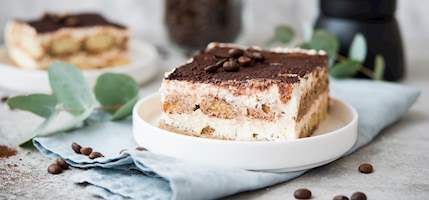
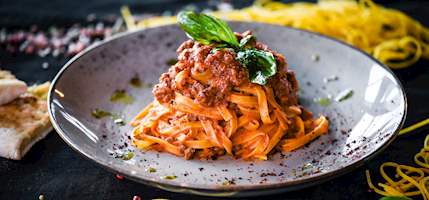
.jpg)

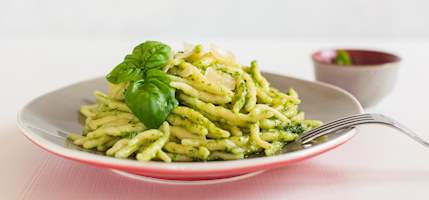
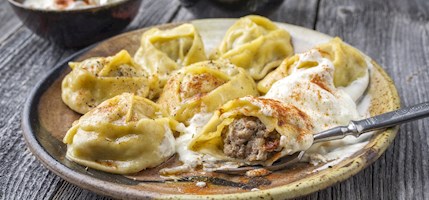

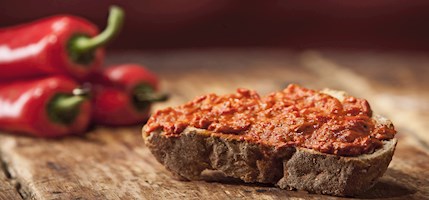
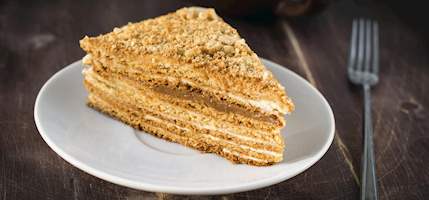


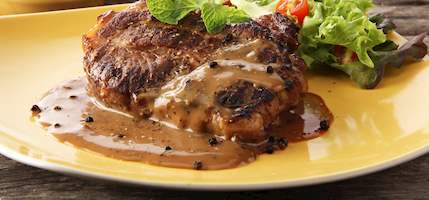



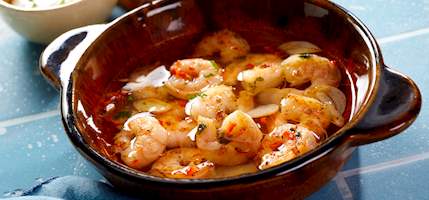


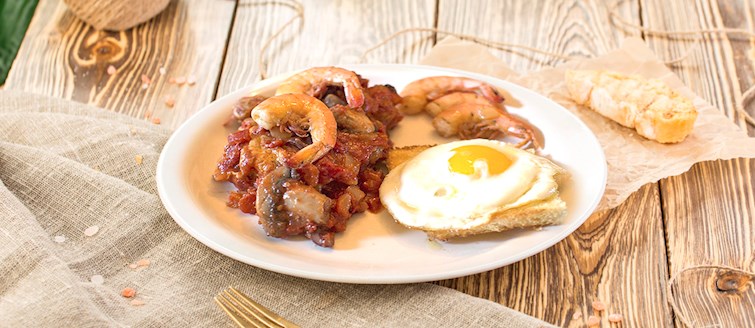










.png)


